- Travel to Spain Seasons

Spain in March: 8 Travel Tips, Activities & Weather

Win a FREE Trip to Spain!
Exciting Announcement! For the first time, we're thrilled to offer exclusive trips to the heart of Spain - an experience like no other. This isn't your typical tourist journey; it's a unique opportunity to immerse yourself in authentic Spanish culture, alongside real locals and our passionate team.
But there's more! Simply by requesting information about this amazing trip, you'll be entered into a special draw to win a Fully Paid Trip to Spain for Two. And that's not all - everyone who inquires will receive an exclusive bonus gift, valued at $500, available only now.
Click Here ↑ to Request Information & Enter the Draw!
March is not precisely known for being in any traveler’s fantasies. It’s an awkward month at the beginning of the year and right before Spring break.
However, in Spain, this is the month when Spaniards reclaim their spirits, and the city’s nights become alive again as the weather transitions from Winter to Spring. After a long but relatively cold Winter, the flowers anticipate the coming warmth, and we can catch their first glimpses.
This is why I want to guide you through the best activities to enjoy in Spain if you visit us in March. This way, you know what to expect in each city so you can plan your vacations according to the weather to match your travel experience.
Let’s see Spain bloom as Spring is welcomed this month with many cheer, festivals, and special celebrations!
Table of Contents ▼ ▶
Travel tips
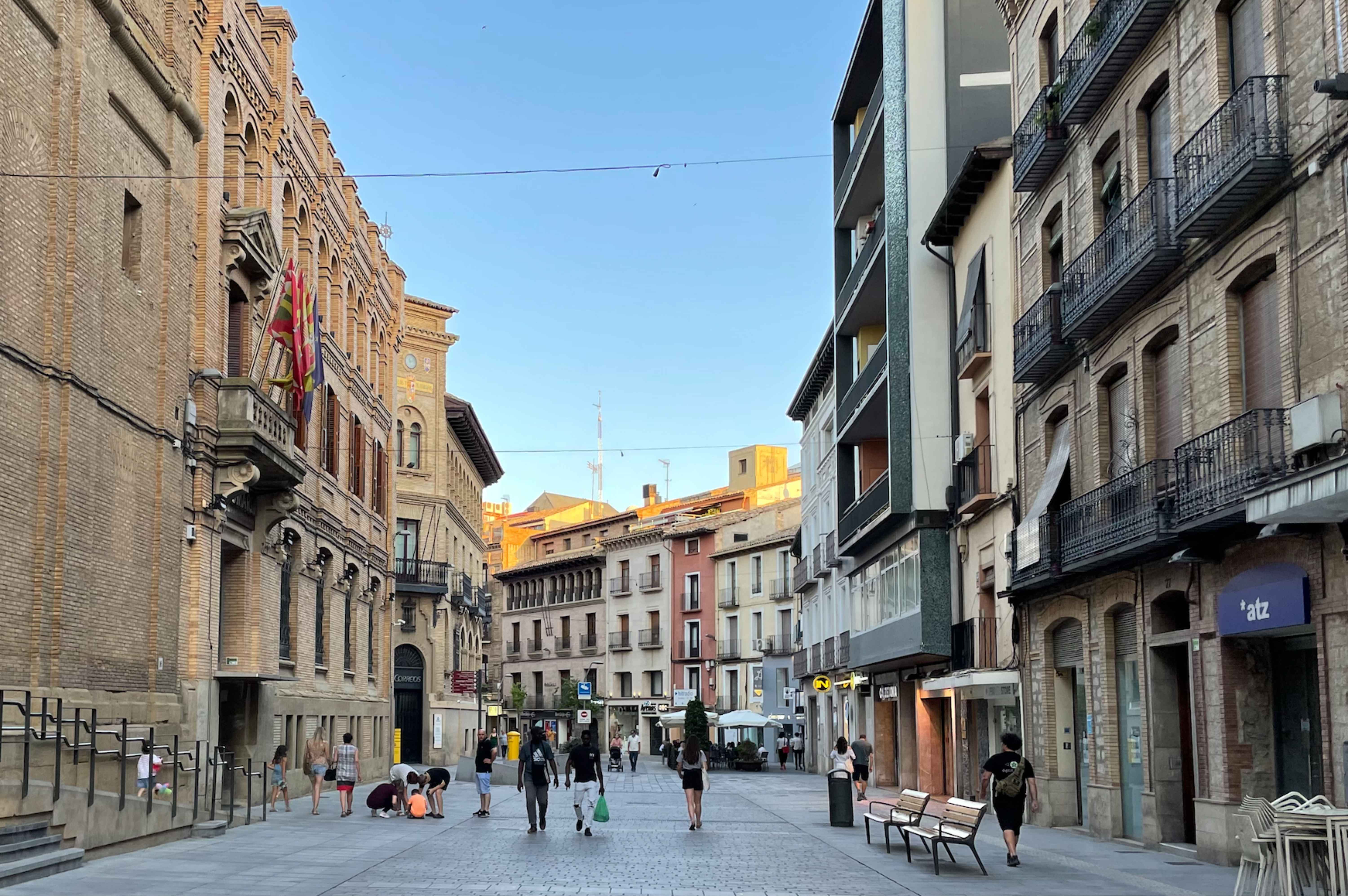
Seize the Affordable Off-Season: A Great Time to Visit Spain
The temperatures rise, the terraces fill up again, and you can feel the season change coming up!
Dawns much earlier, the nights are longer, and joy returns to the big cities, becoming an ideal destination. Traveling to Spain in March might be the best month to come here if you’re looking for other than beaches.
It is “still winter” until mid-March, so crowds are not high, and flight prices and hotel rates are usually lower than in the April-May shoulder season.
You can save lots of money on flights, and hotels, and it’s a great time to visit the big cities as the crowds for main attractions and landmarks are less packed than in Summer.
Embrace the Outdoors: Discover Breathtaking Hiking Trails
If you visit Spain during March, plan a getaway to the Sierra or the mountains on your trips; there are beautiful landscapes, where you’ll likely see some colorful wildflowers or local wildlife. The weather can be pleasing but slightly cold, and the days are sunny, excellent for longer multi-day treks.
In general, Spring and fall are considered the best seasons for hiking in Spain. Spain boasts mountains, forests, arid interiors, and rugged coastlines. High mountains like the Sierra Nevada or the Pyrenees are ideal destinations.
You may want to head up on a hike to the top of Mount Tibidabo, which offers views of stunning Barcelona, or you may wish to visit the Teide National Park in Tenerife, Canary Islands. Whichever hike in Spain you choose, you can expect well-marked, relatively easy-to-follow routes.
Experience the Blooming Beauty of Valle del Jerte
This is a local’s advice: March is the perfect month to visit Valle del Jerte. Please don’t miss this opportunity to watch the most beautiful scenery of nature, flowers, and wildlife.
Spring is the time of the cherry blossom. Many activities are held around the cherry blossom festival: El Festival del Valle del Jerte, where visitors can enjoy routes through the cherry trees and cultural and gastronomic activities.
In addition, it is the perfect excuse to visit the countryside and the small towns surrounding the area to have a bigger and more complete picture of Spain. It’s a 2 in 1!
There are many viewpoints where you can see the landscape of Extremadura, such as the Mirador del Puerto and the Mirador del Monte de La Cruz. Although Spring is the crowdest time of the year, it is worth visiting in March since crowds are not a problem for this attraction.
Unwind on the Mediterranean Coast Before the Heat Arrives!
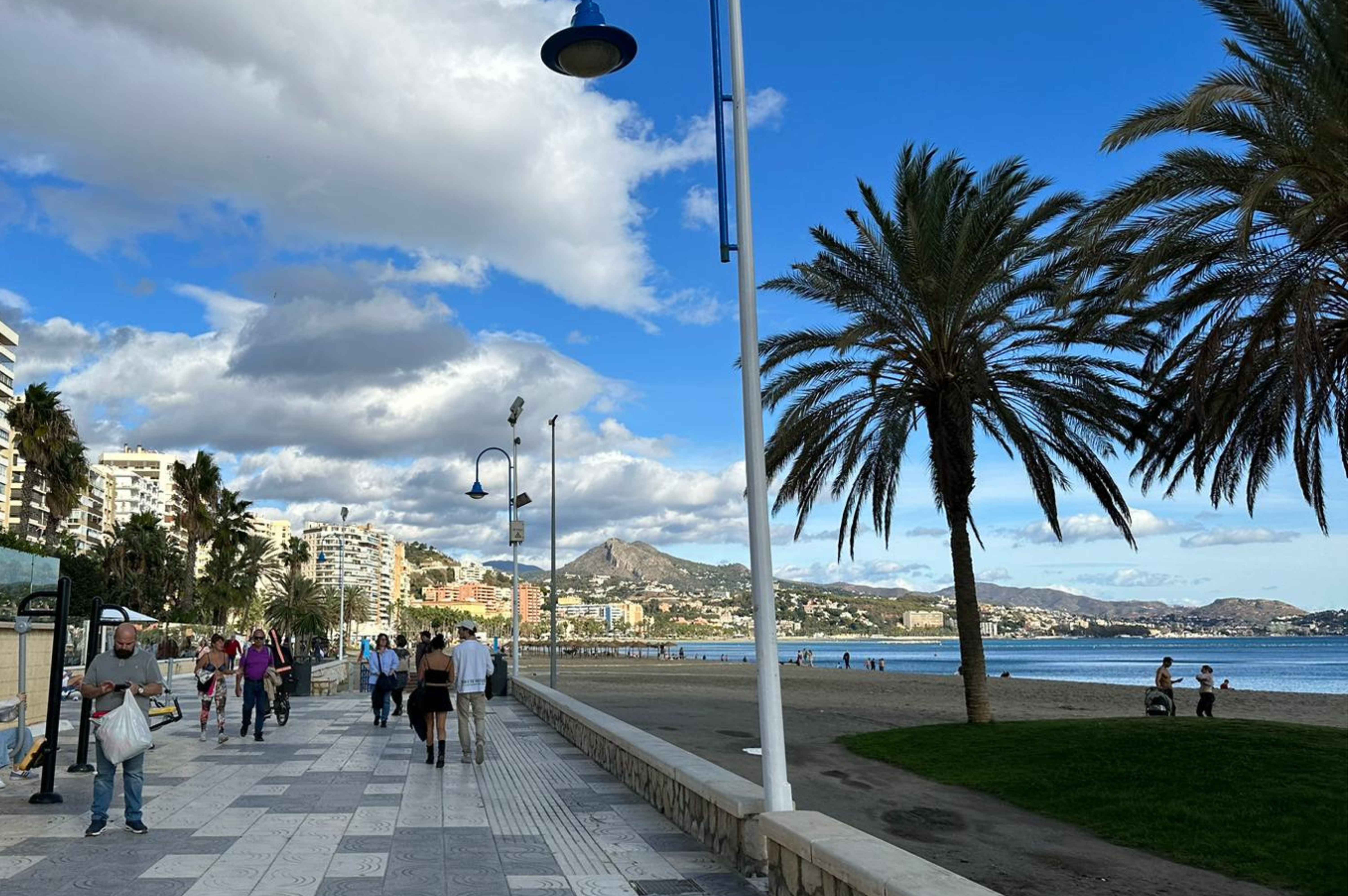
The Mediterranean coastal area in the south of the country has one of the best temperatures at this time, which makes it a desirable destination to visit since tourism can be enjoyable due to the pleasant temperatures.
If you have not seen it yet, this article talks about the best activities to do in March in Spain. I recommend Granada, Córdoba, and other beautiful cities worth visiting.
However, I would like to give you other lesser-known options for you to consider.
If you’re in Andalucia, visit the medieval mountaintop town of Ronda, with its famous stone bridges. Really impressive!
On the other hand, there is Huesca in the Aragón area, a marvel since the greenery still preserves all its vivid color and the waterfalls and streams overflow with water. Places like Aínsa, Alquézar, and Riglos are lovely.
Pack Lighter Layers - But Don’t Say Goodbye to Warm Outfits

In this video you can see what are people wearing during early March in Spain.
Remember that it can still get a little cold, especially at night. Bring a warm piece of clothing that you can remove in case you are too hot, along with thin layers and a jacket.
A complimentary item could be packing some wet weather gear. Still, it is optional since it doesn’t usually rain in Spain.
Or perhaps you would like to dress in two thin layers to cope with the temperatures but mentally prepare to be flexible with the weather, as it can be a little bipolar.
Keep an Eye on the Clock - Remember the Time Change!
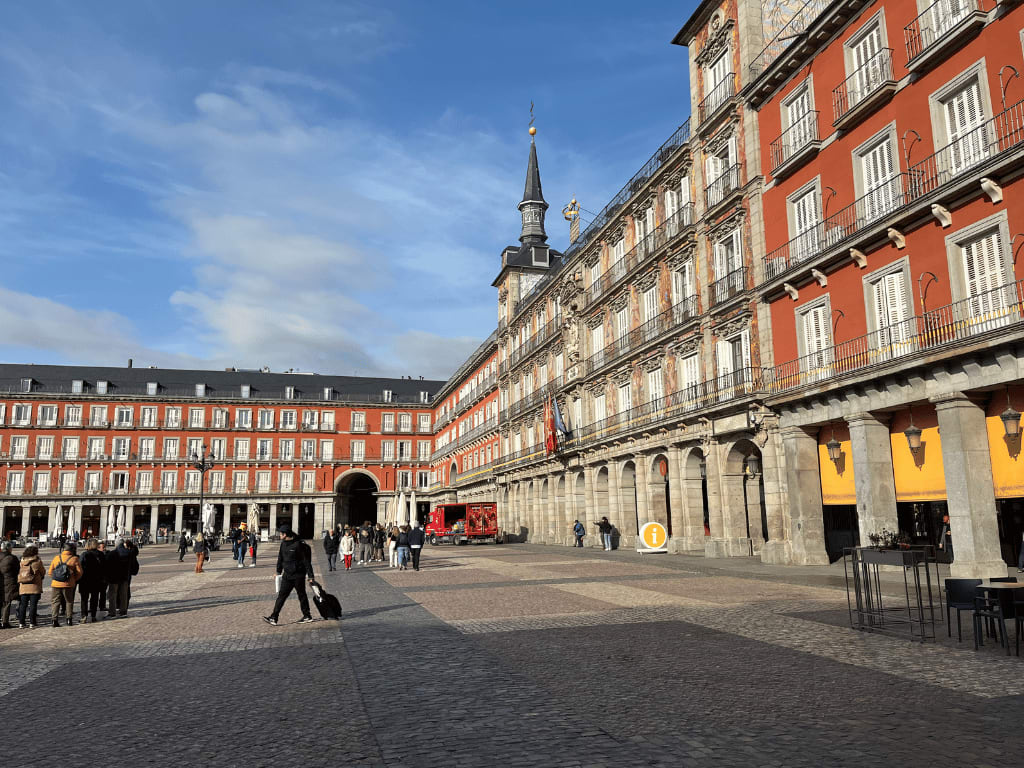
In 2024, the time change will occur on Sunday, March 31. Every year we have to advance the clock one hour. The fundamental reason is to adopt the so-called “summertime.” But, fun fact, it was also imposed to save energy during the first world war.
The time zones that govern time in the EU are:
- GMT time zone: applied by countries such as the United Kingdom and Portugal.
- Time zone +1 GMT: valid in countries such as Spain, Germany, France, or Italy.
- Time zone +2 GMT: applied in Finland, Romania, or Greece.
This applied to your trip implies that, in March, you will notice that some establishments in the hospitality sector will be changing their opening and closing hours.
If your trusted cafeteria opened at 9:30 am and the next day it opens at 8:30 am, it may be due to the summertime change.
This might seem to have little influence and minor importance, but I’m telling you because it happened to me several times, and it can help! So keep that in mind.
Immerse Yourself in a Month of Festivities

Get ready because this is a month of partying. If you come in March, you will be able to see the Spanish in their most joyful spirit, enthusiastic and enjoying life.
Las Fallas de Valencia takes place from March 15 to 19. It is the festivity par excellence of this community, also declared of International Tourist Interest.
When I tell you that no one sleeps during these dates, no one sleeps. Everyone is in the streets 24 hours a day, and music is playing everywhere; the streets are decorated with lights of all possible colors and shapes, even fire! The smell of gunpowder is in the air.
Oh, and not to mention that there is a stand selling churros , buñuelos , and bocadillos on almost every corner. Learn more about these dishes!
📌Read more: What to Eat in Spain: 31 Tasty & Traditional Dishes
The city is overrun by caricatures and satirical representations of politicians, celebrities, and iconic characters. It is a once-in-a-lifetime experience.
But not only Las Fallas take place; other very popular festivities of this type are also celebrated, such as the Fallas de Alzira or the Fallas de Sagunto.
Different cultural experiences occur, like the re-enactment of Columbus’s Arrival in Pontevedra, the reconquest of Vigo, and many more!
Celebrate the Flamenco Festival in Jeréz de La Frontera, Cádiz
Before planning your trip to Spain, consider Cádiz as a destination if you are interested in Flamenco, its origin, and want to see authentic shows.
During this month, the Flamenco Heritage Festival of Cádiz takes place in different central locations such as the Gran Teatro Falla, Espacio de Cultura Contemporánea de Cádiz (ECCO), or the Casa de las Artes Auditorium become the main stage of Flamenco.
I highly recommend it for those who want an unforgettable trip, witness a unique experience, and see artists sharing their love for Flamenco and Spanish dance.
And not only are you going to learn, but you are going to feel part of this genuine moment. It is for everyone, for flamenco lovers inside and outside the city.
📌Read more: 10 Top Flamenco Shows to See in Spain. With Videos!

Well, I have already given you many ideas of things to include in your trip to Spain in March. Now I bring you the best activities you should do in the cities that can or cannot be missing from your list for these dates.
Madrid and Barcelona are essential, because being the two main cities they have a lot of tourist attractions, a lot to see, and offer many experiences.
- 30 Best Things to Do in Madrid: Fun Activities & Food!
- 22 Best Things to Do in Barcelona: Fun Activities & Food!
As it is off-season and the weather is pleasant, March, when Spring begins, provides the perfect setting for touristing without long lines and affordable prices.
And if you are wondering which is the warmest island in March, Gran Canaria and Lanzarote take the medal. Still, Gran Canaria has warmer sea temperatures than Lanzarote this month.
Now let’s see what else this beautiful country offers us.
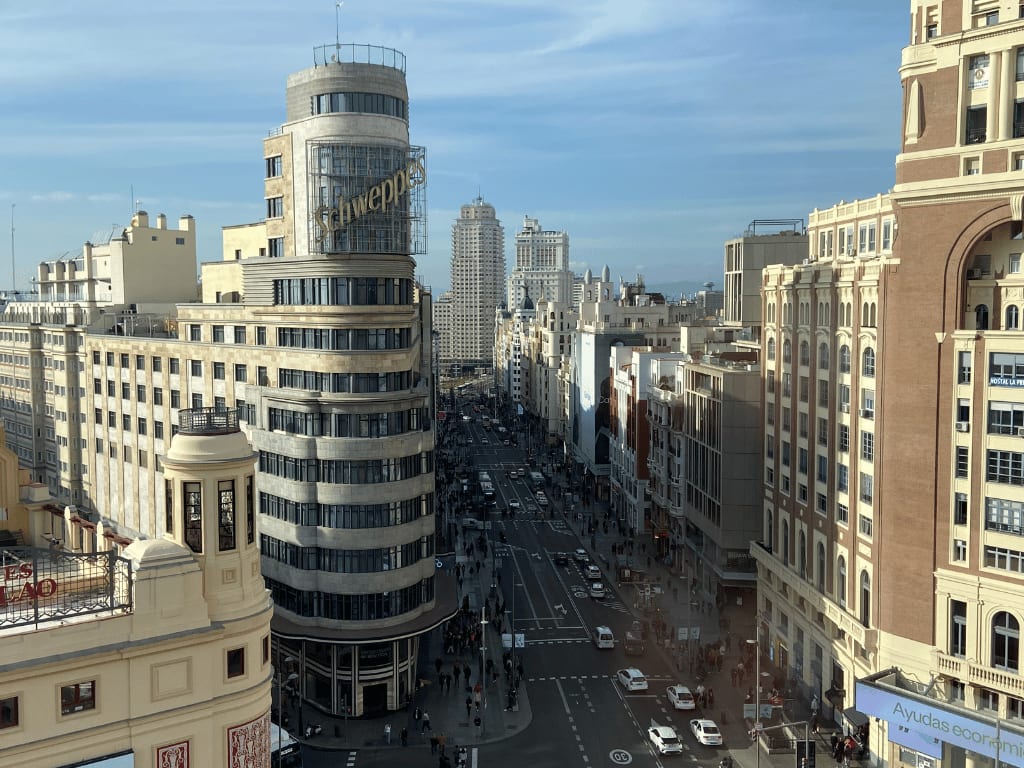
Madrid, the capital of the city, is an excellent option anytime in the year. The culture, the activities, the excellent food, and the so-called terrace culture begin with the rise in temperature and the longer days.
Generally, the perfect time to visit Madrid weather-wise is during the Spring, from March to May. It offers exhibitions, premieres, family activities, dance and theater performances, food, concerts, and music experiences!
The daily maximum temperatures are around 17°C and rarely exceed 23°C. Whereas the daily minimum temperature is 5°C and rarely exceeds 9°C.
As for clothes, I recommend you show off with the outfits since the Spanish people dress to impress. Outfits speak for themselves, so it’s time to take off your warm winter coats and show your layer game!
I recommend bringing a light coat, layers, stylish but comfy clothes, and comfortable closed shoes to walk and discover the city. For more info, visit the following article:
⛅Read more: Prepare for Madrid’s Weather: Advice from a local + 4 Tips!
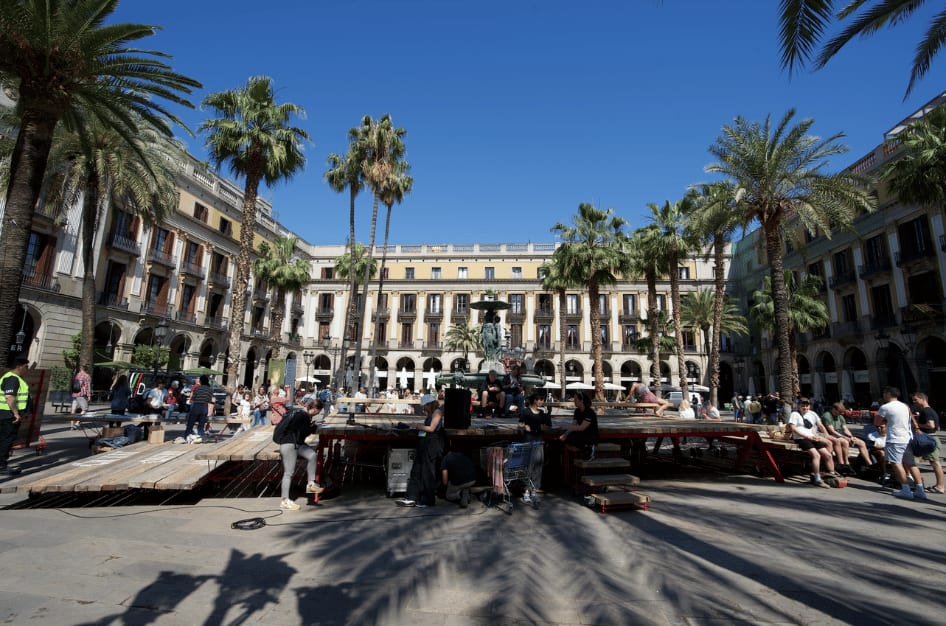
Barcelona is a city that offers everything for everyone 365 days a year. It always includes exciting activities you can do, like cultural festivals, food tours, art, and architecture. There is practically no room to get bored.
The water is still not hot enough to bathe in, but you can visit it to relax and rest. Although surfing, kayaking, and other water activities are practiced.
As for the weather, the daily high temperatures rise to 17°C and rarely drop below 11°C or exceed 20°C. While daily minimum temperatures rarely drop below 2 °C or exceed 12 °C.
⛅Read more: Prepare for Barcelona’s Weather: Advice from a local + 7 Tips!
What does this mean? Ideal weather for sightseeing in the city, both in the outdoor attractions and museums, so the crowds are not overwhelming.
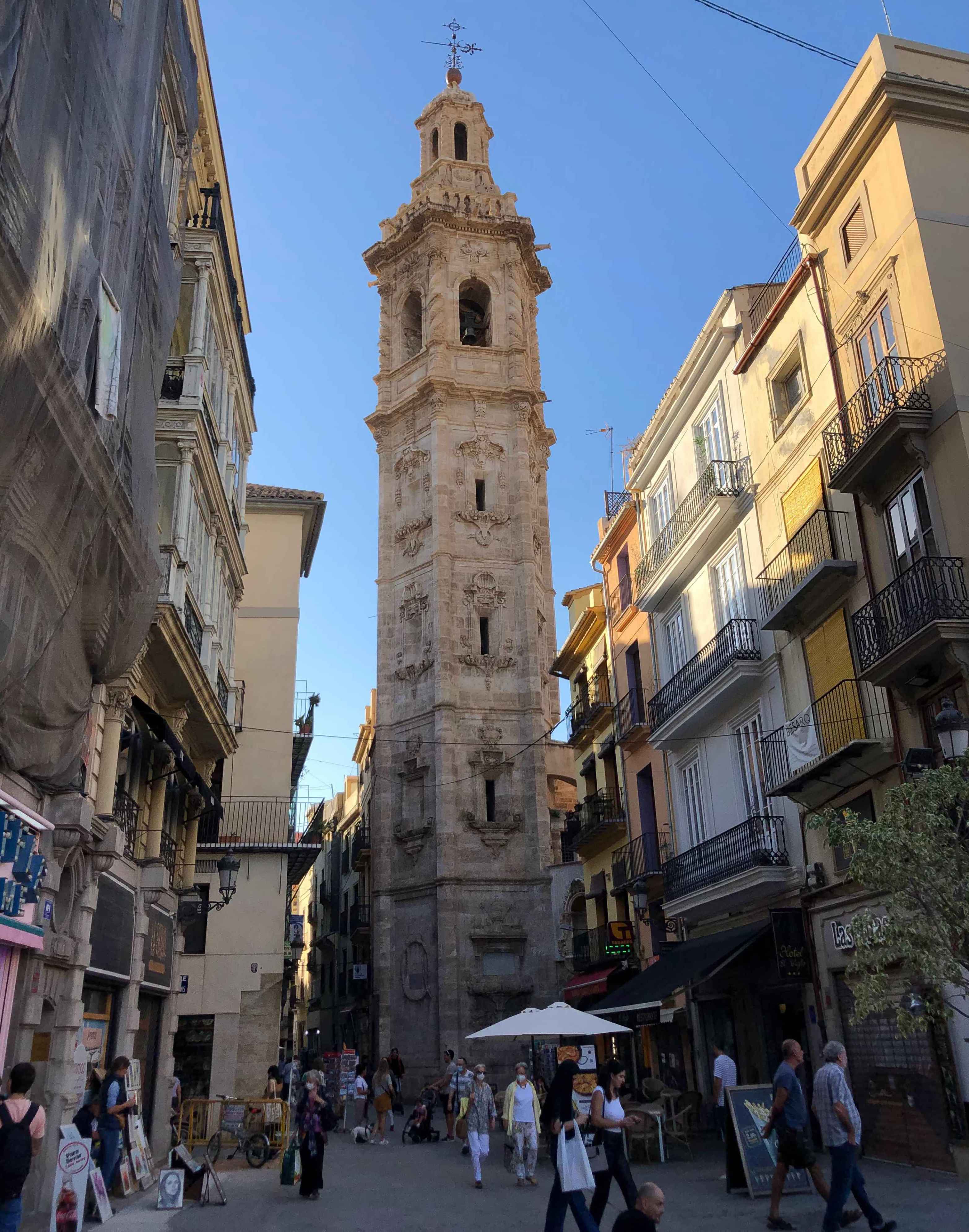
March calls for a visit to Valencia. Promise me that if you step foot into this country during that month, you will stop in Valencia before you leave.
This is the absolute best moment of the year to discover this beautiful city. Also one of the most important, biggest, and with more foreigners and tourists in Spain after the big 3, Madrid, Barcelona, and Seville.

During these dates, the city is filled with joy, and the atmosphere is so pleasant that you will be amazed by the city’s beauty and vibes. Various events and activities occur, such as Las Fallas (Heritage of Humanity by UNESCO), exhibitions, concerts, etc.
Does it sound convincing enough? I’m already craving to go again!
Without a doubt, Cádiz has become one of the main tourist destinations in Spain, and every year more and more people decide to spend their holidays here.
La temporada alta es en Verano, pero forget about quiet walks along the beaches or having spontaneous drinks wherever you want since it gets crowded.
This is why I recommend March. Visiting Cádiz in the low season can make things much easier and cheaper. Adding the magnificent opportunity to enjoy the Flamenco Festival in Jerez de la Frontera!
The temperatures are ideal both day and night; it is almost always sunny. Even so, you can take the whole day on the street without getting burned by the sun or exhausting yourself from excessive heat.
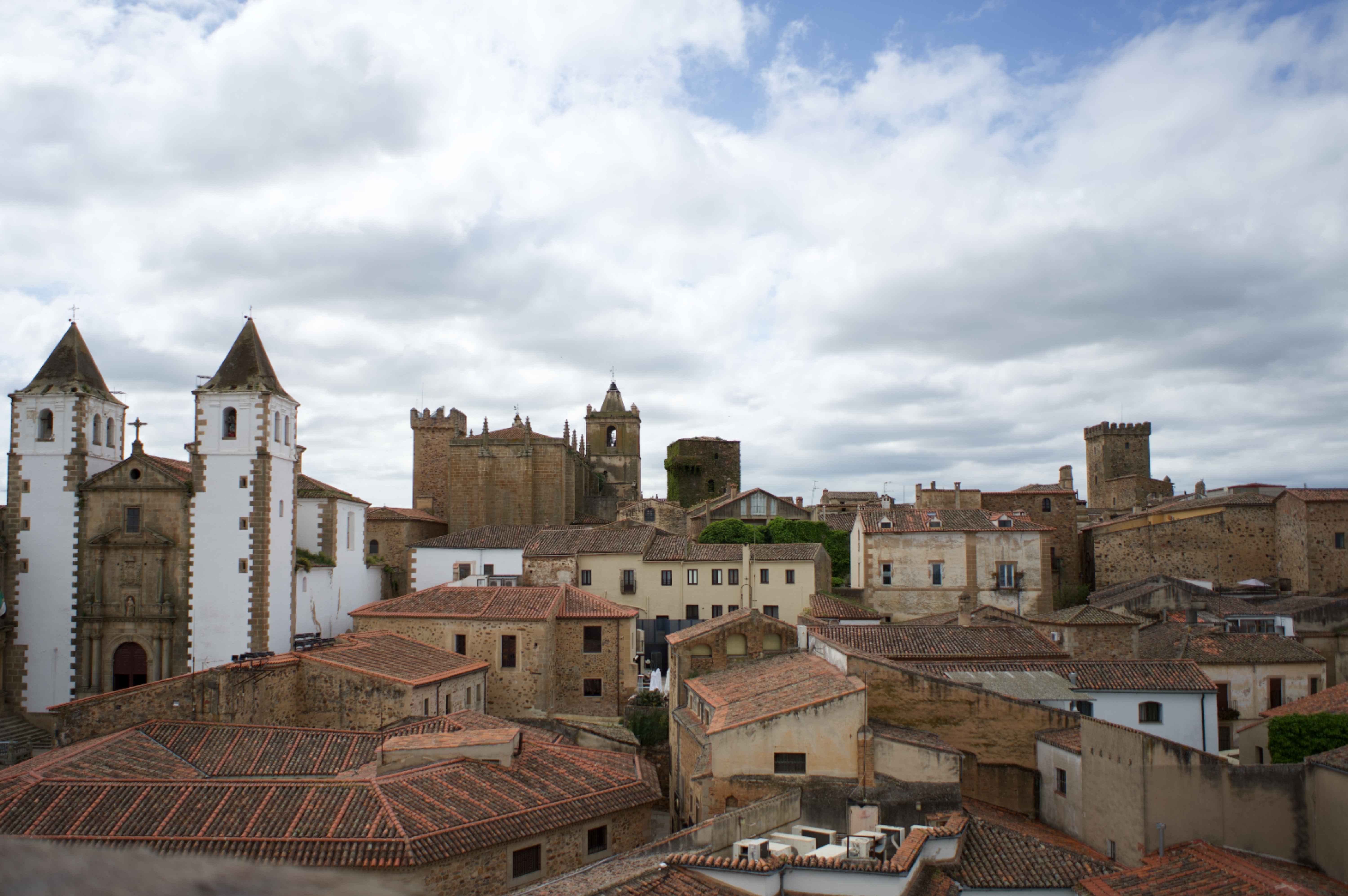
This is a very charming little town that you should give a chance to if you are looking to get to know the interior of Spain, go to a city where there are more locals, a lot of history, and immerse yourself in the customs of the country to get to know it in depth.
This is a city encircled by 12th-century Moorish walls, founded by the ancient Romans, and it retains widespread evidence of subsequent occupation by many different cultures.
The best thing is that in the old town, Ciudad Monumental, you can appreciate the combination of Gothic and Renaissance architecture, with cobbled medieval streets, fortified houses, and palaces.
It is a World Heritage City, and you will understand why after arriving. You will eat delicious food, and the city has an excellent tourism infrastructure.
As I mentioned before, Spring is the time for cherry blossoms and the festival of El Valle del Jerte. So don’t miss this chance to experience routes through the cherry trees and cultural and gastronomic activities!
📌Read more: 10 Charming Towns in Spain for a Unique Day Visit
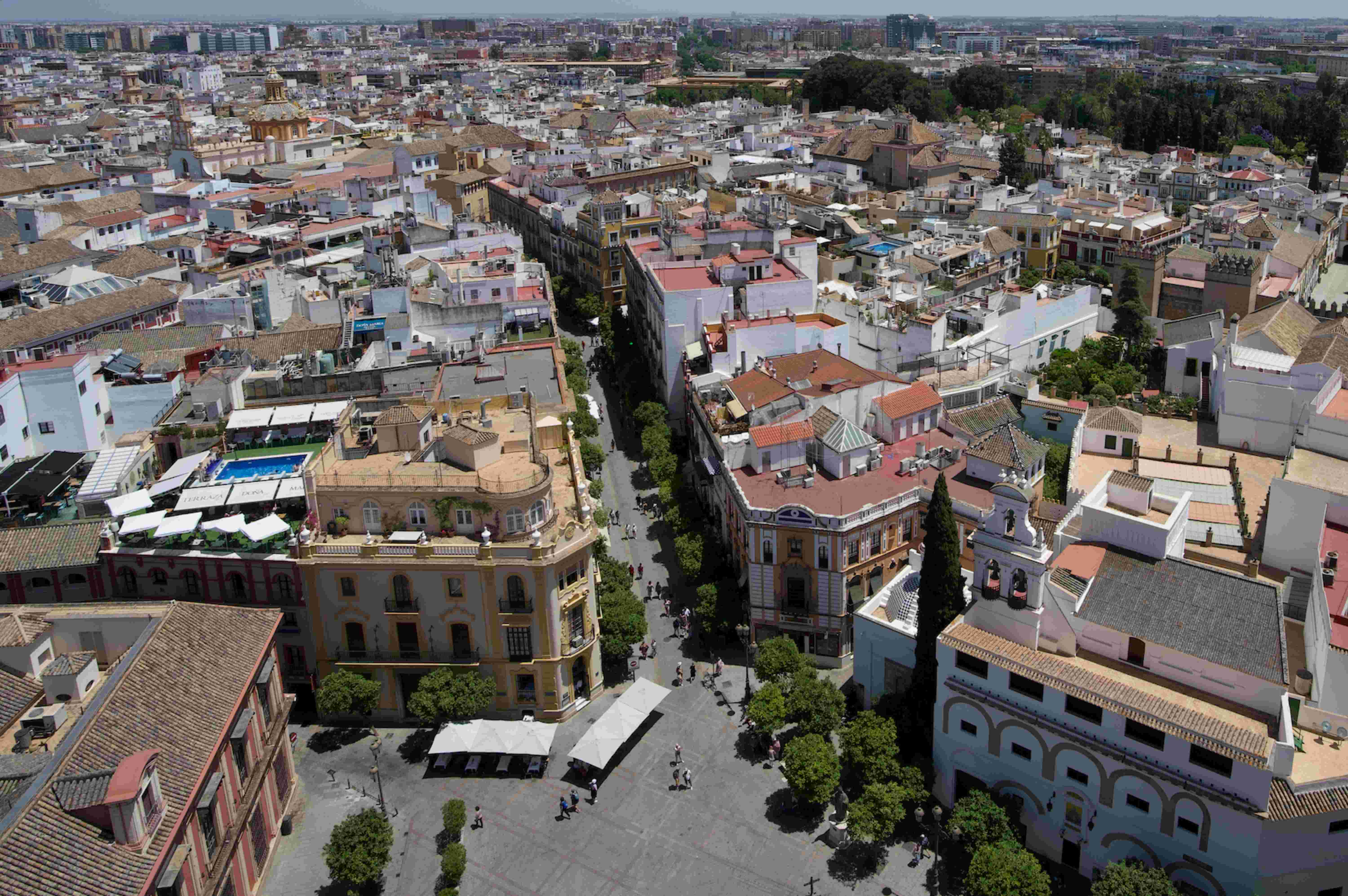
The temperature in Spain in March varies depending on where you are and the region. This is why I am leaving you a table with the average temperature in March for the different areas for more accuracy.
However, keep in mind that these temperatures can vary, so I recommend that you check the specific weather app for the city or town you visit on the days you visit to avoid surprises and plan according to the weather.
I hope this guide was helpful so you can plan your trip according to the climate conditions, activities, and kind of trip you want to enjoy.
Remember, Spain has a place for everyone everywhere. This means there’s always an excuse to return if you missed a city because of the weather; another one will always be waiting for you with its arms wide open!
READ NEXT: What’s the Climate in Spain? Our Real Weather and Temperature
Rating: No ratings yet. Leave a comment!

You might also like...

The Four Seasons in Spain and Where to Enjoy Them

Is Spain Warm? How to Survive the Spanish Heat Like a Pro

Does It Rain in Spain or Is It Always a Sunny and Bright Country?
Email address (optional), star rating (optional).
Be the first to comment!

Millions of people como to Spain every month! But many never get to experience the SENSATIONAL SPAIN!!
We're both born and raised Spaniards and our goal is to give you all the resources to plan a perfect trip to Spain.
Take a look! 👇
FYI! Some affiliate links may be sprinkled throughout the post. We'll receive a small commission when you purchase from our links (at no extra cost to you), which will help us keep creating content.
Join the waitlist
I'm about to release my City Guides for Madrid, Barcelona, Sevilla and Mallorca.
They're going to have everything you need to plan the perfect trip. From hotels and transport, to restaurants, attractions, activities, & a lot (A LOT!) of tips & tricks.
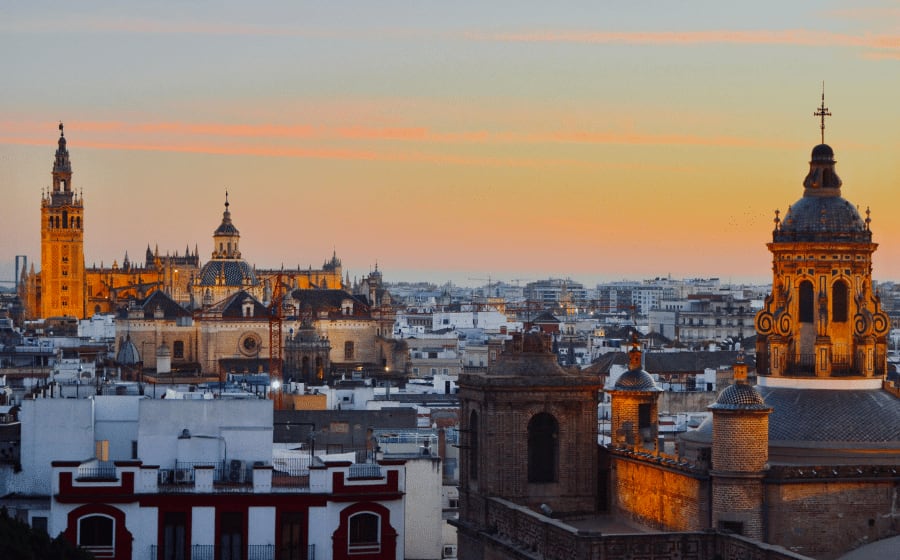
What’s the Climate in Spain? Our Real Weather and Temperature

What do Spanish People Think of Americans?

What Song Are You Listening To? MADRID

What is the Best Show to Learn Spanish?

Things People Should NEVER do Dating in Spain

Can Foreigners Adapt To The Spanish Lifestyle?
March in Spain: Weather, What to Pack, and What to See
While winter in Spain is certainly much more mild than in most other European destinations, the arrival of springtime in March brings a rejuvenated sense of fun and passion. As the days get longer and warmer, bar and restaurant terraces spilling out onto sunny plazas get more and more crowded, and you'll find plenty of locals out enjoying the beautiful weather in Spain's myriad gorgeous parks.
In addition to pleasant temperatures and plentiful sunshine, March in Spain also brings with it a wealth of fun cultural events and activities. From flamenco to fallas , there's always something going on throughout this action-packed month.
Spain Weather in March
Temperatures throughout Spain in March will depend on where, exactly, in the country you find yourself. Areas along the northern coast will still be a bit chilly, with highs in the low 50s, while the south starts to warm up into the high 60s and even low 70s at times.
For central areas like Madrid, plan for average temperatures hovering around the low-to-mid 60s.
Spain truly comes alive at night, when locals head out for tapas, drinks and dancing until the early hours of the next morning. If you plan on joining them, keep in mind that low temperatures during the nighttime hours tend to be quite chilly in March in Spain. Think low 30s in Madrid, and mid 40s in areas such as Barcelona, Andalusia, and the northern coast.
As far as rainfall goes, March in Spain tends to be pretty mild, with the entire country seeing an average of just over an inch of rain throughout the month. The north tends to be much rainier than the south, so pack an umbrella if the Basque Country or Galicia is on your itinerary.
Sunlight, on the other hand, is abundant. On the whole, Spain sees an average of 12 hours of sunlight per day in March. Great news for a relaxing stroll on one of the country's stunning beaches , but it's not quite swimming season just yet.
What to Pack
As you can see, the weather throughout Spain in March can vary quite a bit depending on your destination. A packing list for Malaga in March will be pretty different than one for San Sebastian in the same month. However, there are a few items that will come in handy across the board for most cities in Spain in March.
Spaniards tend to dress according to the season, rather than the weather. Even though March tends to feel warm and sunny, you'll still usually see locals wearing jackets and scarves (it's late winter/early spring, after all). A stylish jacket and a scarf or two will help you blend right in.
While March isn't nearly as rainy as April, unexpected showers do happen—toss a compact umbrella into your suitcase or backpack so you won't be caught off-guard.
If you're heading to a coastal area, leave your swimsuit at home—it's still too cold to swim, even in warmer areas like the southern Costa del Sol. A nice pair of sunglasses are all you need to combat the sun's rays at this time of year.
March Events in Spain
Some of Spain's most famous and passionate festivals of the year take place in March. Without a doubt, it's one of the best times of year to get immersed in authentic local culture and experience events like a local.
- Las Fallas in Valencia : Hundreds of towering, intricate paper sculptures are built from the ground up in excruciating detail—and then burned in a spectacular bonfire of gargantuan proportions.
- Jerez Flamenco Festival : One of Andalusia's liveliest small cities transforms into the epicenter of the flamenco universe at this passionate annual festival.
- Sant Medir : An authentic neighborhood festival unlike any other, which sees costumed characters parading around Barcelona's Gracia neighborhood every year on March 3.
- FEMAS : Music lovers won't want to miss this classical and baroque music festival in Seville, which usually lasts throughout most of March.
- Classic Car Rally : Come watch rally drivers from all over Europe compete in this awe-inspiring racing event on sunny Mallorca .
Travel Tips
March is generally considered part of low season throughout most parts of Spain. However, if you plan on attending Las Fallas in Valencia, book accommodation as soon as possible—hotels and Airbnbs fill up fast and prices tend to skyrocket.
To learn more about if you want to visit Spain in March, check out our guide on the best time to visit .
The Best Time to Visit Spain
Plan the Perfect Trip to Spain
Weather in Spain: Climate, Seasons, and Average Monthly Temperature
November in Barcelona: Weather, What to Pack, and What to See
August in Spain: Weather, What to Pack, and What to See
Barcelona in October: Weather, What to Pack, and What to See
The Very Best of Spain's Cities, Regions, Food, and Drinks
October in Europe: Weather, What to Pack, and What to See
The 10 Best Traditional Festivals to Experience in Spain
March in Salt Lake City: Weather, What to Pack, and What to See
Best Cities to Visit in Spain in November
February in Amsterdam: Weather, What to Pack, and What to See
April in Spain: Weather, What to Pack, and What to See
February in Spain: Weather, What to Pack, and What to See
March in Prague: Weather, What to Pack, and What to See
December in Spain: Weather, What to Pack, and What to See

Unveiling the Charms of Spain in March: A Complete Travel Guide
Welcome to Spain, a country where the zest of life is as palpable as the warmth of the sun! As a traveler, you might wonder if March is the right time to explore this vibrant land. Pack your bags and prepare to embark on an enchanting journey through Spain’s blooming landscapes, cultural festivities, and mild climates. Spain in March might just be your secret key to experiencing the real essence of Spanish allure, minus the tourist crowds.

Table of Contents
Is march a good month to visit spain.
Absolutely! March marks the transition from the cool, quiet winter to the lively, colorful spring. The crowds are fewer, the prices are better, and the entire country is on the verge of bursting into spring’s vibrant colors. Whether you’re looking to explore the historic streets of Madrid, bask in the Mediterranean sun, or enjoy the colorful festivities, March offers a unique window to experience Spain with more authenticity.
How Hot Will Spain Be in March?
The mercurial weather of March mirrors Spain’s diverse landscapes. In the mountain valleys of the north, where winter still lingers, high temperatures range from the mid-40s to upper 50s Fahrenheit. Further south brings warming relief, as areas like Madrid see more pleasant spring conditions and highs climbing into the 60s.
Meanwhile, along the coast, cities like Barcelona experience gentle sea breezes that moderate temperatures in the low to mid-60s. Yet the balmy breezes blowing north from Africa hint at the true heat soon to come. Andalusian cities like Seville anticipate highs approaching 70 degrees Fahrenheit as the generous sun shines stronger by the day. No matter the region, March offers a tantalizing taste of the warmer seasons ahead in this country of rich geographic contrasts.

Is March a Rainy Month in Spain?
Covering spain’s regions in march:.
- Northern Spain: From the rolling green hills of the Basque Country to the rugged cliffs of Asturias, Northern Spain in March is a refreshing escape. Cities like Bilbao and Santiago de Compostela offer cultural richness without the sweltering heat.
- Southern Spain : Andalusia starts to warm up nicely, making it perfect for visiting the Alhambra in Granada or the vibrant streets of Seville without the intense summer heat.
- Eastern Spain (including Barcelona): The Mediterranean coast begins to shake off the winter chill. Barcelona, with its bustling streets and Gaudí’s masterpieces, becomes even more enjoyable.
- Central Spain (including Madrid): The heart of Spain, Madrid, is delightful in March. The days are getting longer, and the city’s parks and outdoor terraces start to come alive.
How Many Days Do You Need For Spain In March?
Planning a trip to Spain in March and wondering how many days to set aside? Well, let’s break it down with a dash of humor and a pinch of practicality.
The Short and Sweet Trip: 7 Days
If you’re on a tight schedule or just want a taste of Spain, a week is your magic number. It’s like speed dating with Spanish cities – a whirlwind romance where you hit the highlights.
Check out a Spain in March Itinerary at the end of the blog post.
Best Cities To Visit Spain In March
In March, Spain offers a variety of top cities to visit , each with its unique attractions and experiences. Some of the best cities to visit in Spain in March include:

- Madrid : The capital city is a great place to enjoy Spain’s culture, cuisine, and nightlife in March.
- Granada : This historic city is worth visiting for its rich history and stunning architecture.
- Seville : With pleasant temperatures around 15-20°C, Seville is an ideal destination to explore its Catedral de Sevilla, Real Alcázer, Plaza de España, and the Barrio de Santa Cruz.
- Cádiz : This coastal city is another great option for a March visit.
- Málaga : Málaga is a popular destination on the Mediterranean coast, with a mix of historic sites and beautiful beaches.
- Valencia : Valencia is home to the famous Las Fallas festival, which takes place from March 15-19 and features massive ninots (wooden/paper-mache figures) parading through the streets, fireworks, and bonfires.
- Ronda : This medieval town in Andalusia is known for its famous stone bridges and is a great destination to visit in March.
- Mallorca : This Balearic Island offers a pleasant climate and beautiful beaches, making it an ideal destination for a March visit.
Keep in mind that while the weather in southern Spain is generally warmer in March, it may not be warm enough for swimming at the beaches, so for me I would pick the South.
Another tip for visiting Spain is not to cover too many cities in one trip. It is best you use two base cities and do day trips if you can, as this will give you a better opportunity to explore the richness of this gorgeous country.

Celebrating March in Spain: Events and Festivities
March in Spain is a time of vibrant celebrations. The most notable is Las Fallas in Valencia, where the city comes alive with fireworks, parades, and the burning of large satirical figures. Meanwhile, Barcelona’s streets might be filled with the beats of local music festivals, and Madrid starts to gear up for its lively spring events.
Photo by Marcelo on Unsplash
Exploring Barcelona in March
Barcelona in March is a dream. The weather is mild, perfect for strolling through Las Ramblas or enjoying a café con leche in an outdoor terrace. The tourist crowds haven’t peaked yet, so you’ll have a better chance of enjoying Gaudí’s Park Güell and Sagrada Familia with some peace.
Daytime in Barcelona during March can be quite pleasant with temperatures around 15°C to 18°C. Evenings are cooler, so carrying a light jacket is wise. The mild climate makes it ideal for leisurely exploring the city’s architectural marvels and beachfront.

What to do in Barcelona in March
Here’s a mix of must-do’s and hidden gems to give your readers a slice of Barcelona’s vibrant life:
- Stroll Along Las Ramblas: It’s like the red carpet of Barcelona, minus the celebrities (unless you count the street performers). Brimming with energy, it’s a great place for people to watch and soak in the local vibe.
- Explore Gaudí’s Masterpieces: You can’t miss Antoni Gaudí’s work when in Barcelona. The Sagrada Familia is a no-brainer, but also check out Park Güell for some whimsical architecture and great city views. Perfect for those Insta-worthy shots!
- Discover the Gothic Quarter: Wander through the labyrinthine streets of the Barri Gòtic, where every corner tells a story. The blend of old-world charm and bustling tapas bars is irresistible.
- Beach Time at Barceloneta: March might be a bit chilly for a swim, but Barceloneta Beach is still a great spot for a leisurely walk or a seaside paella.
- Feast on Tapas: Speaking of food, you’ve got to dive into Barcelona’s tapas scene. Head to local favorites like El Xampanyet for a taste of authentic Catalan bites. I recommend booking a food tour.
- Catch a Game at Camp Nou: For the sports enthusiasts among your readers, catching a FC Barcelona match could be a dream come true.
- Visit the Picasso Museum: Art lovers will appreciate the extensive collection of Picasso’s work, showcasing his deep connection with the city.
- Montjuïc Magic Fountain Show: This spectacular display of light, water, and music is a treat for the senses and makes for a magical evening.
- Sip on Vermouth in a Local Bodega: March is a great time to join the locals in one of their favorite pastimes – sipping vermouth in a cozy bodega.
- Day Trip to Montserrat: Just a short trip from Barcelona, the mountain of Montserrat with its monastery, is a peaceful escape from the city buzz. Check out this amazing day trip tour .

Photo by D Jonez on Unsplash
Madrid in March: A Time to Visit?
Madrid in March is a spectacle of blooming flowers and lively streets. The temperatures are comfortable, and the city’s grand museums and parks are less crowded. Don’t miss the chance to witness Madrid’s cultural scene start to buzz with excitement.
Things to do in Madrid in March
he Spanish capital is buzzing with life and there’s always something happening, especially as the city shakes off the winter chill and welcomes spring.
- Retiro Park: March in Madrid means the flowers are starting to bloom. Retiro Park is like Central Park’s Spanish cousin – but with more sangria and fewer squirrels. It’s perfect for a leisurely stroll or a boat ride in the lake.
- Prado Museum: For art aficionados, Prado is like Disneyland. Home to masterpieces by Velázquez, Goya, and El Greco, it’s a place where you can spend hours and still feel like you’ve only scratched the surface.
- Tapas Hopping in La Latina: This district comes alive in March, with outdoor terraces opening up. It’s a culinary treasure hunt – each tapas bar has its own specialty, from patatas bravas to gambas al ajillo.
- Royal Palace of Madrid: Even if you’re not into royalty, the sheer scale and opulence of this place are jaw-dropping. Plus, the gardens are a great spot for some serene moments.
- Explore the Rastro Market: Held every Sunday, El Rastro is a sprawling flea market where you can find anything from vintage clothes to quirky antiques. It’s like eBay, but in real life and with more bargaining.
- Flamenco Show: Catching a flamenco show is a must. It’s not just a dance; it’s an emotional journey. Madrid has numerous tablaos where you can experience the passion of flamenco.
- Day Trip to Toledo or Segovia: If your readers are feeling adventurous, a quick trip to Toledo or Segovia offers a peek into Spain’s rich history and architecture. Toledo’s medieval streets feel like a set from Game of Thrones, minus the dragons.
- Savor Churros with Chocolate: Chocolatería San Ginés is a Madrid institution. Their churros and thick hot chocolate are the stuff of legends – perfect for a chilly March morning.
- Catch a Soccer Game: If Real Madrid or Atlético Madrid are playing at home, experiencing the electric atmosphere of a Spanish football match is unforgettable.
- Attend a Spring Festival: Madrid starts to come alive with various festivals in March. Check out local event listings – there’s always something cultural, musical, or gastronomical going on.
Check out Unique Things to do in Madrid .

Exploring Seville in March: A Fusion of Sunshine and Culture
March in Seville is a period of transformation, where the city shakes off the last whispers of winter and welcomes the gentle warmth of spring. It’s a time when Seville is not just a destination but an experience, brimming with vibrant colors, tantalizing scents, and the lively rhythms of Andalusian life.
Top Things to do in Seville in March
Marvel at the Real Alcázar : A true jewel of Seville, this royal palace is a tapestry of architectural styles, with its stunning Mudéjar architecture, lush gardens, and tranquil courtyards. In March, the gardens are in their springtime glory, making it a perfect time for a visit. Get Real Alcazar Tickets and make sure you book in advance and arrive during your assigned time slot.
Climb the Giralda Tower : Originally a minaret and now the bell tower of the Seville Cathedral, the Giralda offers breathtaking views of the city. The climb is an adventure in itself, with ramps instead of stairs – a unique feature designed for horseback riding to the top. Skip the line tickets.
Experience the Flamenco : Seville and flamenco are an inseparable duo. In March, the chill in the air is just right for cozying up in a flamenco bar. Witness the passionate dance and soul-stirring music that is a hallmark of Andalusian culture.
Stroll through Barrio Santa Cruz : The historic Jewish quarter of Seville is a labyrinth of narrow streets, whitewashed houses, and hidden plazas. In March, the orange trees are in bloom, filling the air with a sweet, citrusy fragrance.
Relish in the Fiesta de las Cruces : If your visit spills into late March, you might catch the Fiesta de las Cruces, a festival where crosses decorated with flowers adorn public squares, and the city comes alive with music and dance.
Savor the Local Cuisine : March is a great time to indulge in Seville’s culinary delights. From tapas in bustling bars to fine dining under the stars, the city’s food scene is as diverse as it is delicious. Don’t miss trying the local specialty, ‘espinacas con garbanzos’ (spinach with chickpeas).
Explore the Plaza de España : This architectural marvel is even more stunning in the soft light of spring. With its semi-circular brick building, tiled alcoves representing different provinces of Spain, and a canal where you can row boats, it’s a must-visit.
Attend a Semana Santa Procession : Towards the end of March, you might get the chance to witness the solemn beauty of Semana Santa (Holy Week) processions, a deeply rooted tradition in Seville.

Also check out Spain in February
7-Day Spain in March Itinerary
- Days 1-3: Madrid – Start in the heart of Spain. Madrid in March is like a well-aged wine – just right. Spend your days exploring the Prado Museum, wandering through the Retiro Park, and experiencing the city’s vibrant nightlife.
- Days 4-5: Seville – Next, jet off to Seville. Two days here lets you soak up the Andalusian charm, visit the Real Alcázar, and maybe catch a flamenco show.
- Days 6-7: Barcelona – End your trip with a bang in Barcelona. Marvel at Gaudí’s Sagrada Família, stroll along the beach, and get lost in the Gothic Quarter.
The ‘I Want More’ Trip: 14 Days in Spain
Got two weeks? Perfecto! This is your chance to dive deeper into Spain’s diverse regions.
- Days 1-3: Madrid
- Days 4-6: Seville
- Day 7: Granada – Spend a day visiting the Alhambra, a breathtaking palace that’s a testament to Moorish architecture.
- Days 8-9: Valencia – Head to the home of paella and the futuristic City of Arts and Sciences.
- Days 10-14: Barcelona – Give yourself a few extra days to fully experience the Catalan culture, art, and cuisine.
The ‘Leave No Stone Unturned’ Trip: 21 Days in Spain
Three weeks in Spain? Now we’re talking! This is for those who want to live and breathe Spain, from the bustling cities to the sleepy villages.
- Days 1-4: Madrid
- Days 5-7: Seville
- Day 8: Córdoba – A day trip to see the mesmerizing Mezquita.
- Day 9: Granada
- Days 10-11: Valencia
- Days 12-16: Barcelona
- Days 17-18: Bilbao – Venture north to the land of Basque culture and the Guggenheim Museum.
- Days 19-21: Santiago de Compostela – End your journey in this Galician gem, known for its famous pilgrimage route and stunning cathedral.
Conclusion:
Spain in March is a treasure trove of experiences waiting to be discovered. From the blooming landscapes and cultural festivities to the mild climate and diverse regions, it’s a time when Spain shows off its unique blend of tradition and vibrant modernity. So, why wait? Embrace the adventure , and let Spain in March captivate your heart and fill your travel diary with unforgettable memories.
Remember, every journey is personal and unique. Tailor your trip to your interests, and don’t hesitate to stray off the beaten path. Spain is much more than its stereotypes, and March is the perfect time to discover its true essence. ¡Buen viaje!
Similar Posts

Best Sithonia Beaches to Visit
Is Italy Safe to Travel To?

Rome in September: Embracing the Charm, Festivals, and Practical Tips

How To Visit Rome On Your Own

5 Off The Beaten Path Beach Cities in Portugal

Family Road Trip from Lisbon to Seville

Weather in Spain in March: A Comprehensive Guide to Spain’s Regions
By: Author Laura Bronner
Posted on Last updated: November 7, 2023

March in Spain is a transitional month that ushers in the spring season. The country’s diverse geography and climate zones make for a fascinating variety of weather patterns. As winter starts to loosen its grip, Spain experiences a shift in temperatures, precipitation, and overall atmosphere.
Let’s delve into the March weather in Spain, exploring the many conditions you can expect in various regions of the country. I’ll also highlight the warmest places in Spain in March and recommend activities that take advantage of the weather in each location.
A Quick Overview of Weather in March in Spain
March in Spain offers a mixed bag of weather conditions, reflecting the country’s geographical diversity. Here’s a brief summary of what you can expect.
- Average Temperature : The average temperature across Spain in March varies from region to region, with milder and more comfortable conditions in the southern and coastal areas.
- Precipitation : March is a moderately wet month in Spain, with some regions experiencing continued rainfall from the winter while others start to dry off. The north and northwest regions are known for their rainy weather.
- Snow : While snow is less common in March, it can still be found in the higher-altitude areas of the Pyrenees, Sierra Nevada, and other mountain ranges.
- Sea Temperature : The sea temperatures in March are still relatively cool but on the rise, making swimming less enjoyable in the north but acceptable for brave souls on the Mediterranean coast.
Now, let’s explore the specific conditions in different cities and regions across Spain.
Barcelona really comes to life in March with so many wonderful things to do outside.
Barcelona: Catalonia’s Spring Delight
Barcelona awakens in March with the gentle embrace of spring. This vibrant city beckons travelers with a refreshing escape from the remnants of winter. March marks the time when the city’s vibrant energy blooms, offering things to do in Barcelona for everyone, whether you’re an art connoisseur, a history enthusiast, or simply seeking to bask in the rejuvenating sun.
Barcelona in March is a captivating blend of nature’s reawakening and the city’s cultural splendor, promising an enchanting and comfortable experience.
- Average Temperature : In Barcelona, March boasts mild and pleasant temperatures, with daytime highs averaging around 15°C (60°F).
- Precipitation : March marks the beginning of spring rains in Barcelona. You can expect around 50 mm of rainfall this month.
- Snow : Snow is exceedingly rare in Barcelona in March.
- Sea Temperature : The sea temperature remains quite chilly, around 14°C (57°F).
- Activities : Exploring the city’s iconic architecture, such as La Sagrada Familia and Park Güell, is a must in the sunnier spring weather. You can easily spend 3 days in Barcelona in March enjoying all of the different sights. Enjoying tapas in outdoor cafes, wandering along the beautiful beaches, and experiencing the vibrant nightlife are also excellent options.
March is a great time to explore some of the hiking trails in Northern Spain.
Northern Spain: Green and Lively
The northern regions of Spain, characterized by their lush landscapes and unique culture, come to life in March. As winter gradually gives way to spring, this part of Spain offers a refreshing escape.
It is an excellent time for exploring the beautiful Basque Country, Asturias, Galicia, and Aragon thanks to the increase in temperatures.
March brings new beginnings, with nature’s vibrant hues emerging, making it an attractive choice for outdoor enthusiasts and those seeking a taste of authentic Spanish culture.
- Average Temperature : Northern Spain has relatively cooler March temperatures, with daytime highs around 14°C (57°F) and nighttime lows around 7°C (45°F).
- Precipitation : This region receives higher rainfall compared to the south, with March seeing approximately 100 mm of precipitation.
- Snow : In the mountainous areas of northern Spain, you may encounter snow in March.
- Sea Temperature : The sea temperatures remain cold, around 12°C (54°F).
- Activities : The lush landscapes of the Basque Country and Asturias are ideal for hiking. You can also explore charming coastal towns like San Sebastián and enjoy the culinary delights of the region.
The Costa del Sol in March is a wonderful time to enjoy yoga on the beach , bright blue skies, and warmer weather than most of the rest of Europe.
Málaga and the Costa del Sol: Sunshine Abounds
The region of Málaga and the Costa del Sol basks in sunlight throughout March. As the calendar turns to spring, Málaga welcomes visitors with open arms, offering a pleasant climate.
March is relatively dry, making it ideal for exploring the golden beaches in Málaga and experiencing the vibrant Andalusian culture. From relaxing on the sands to savoring delicious tapas, Málaga promises a sunny and joyful March.
- Average Temperature : Málaga and the Costa del Sol enjoy mild and comfortable March weather, with daytime highs around 18°C (65°F) and nighttime lows at 10°C (50°F ).
- Precipitation : March in this region is relatively dry, with only about 25 mm of precipitation.
- Snow : Snow is virtually unheard of in Málaga and the Costa del Sol in March.
- Sea Temperature : The sea is still cool, with temperatures around 15°C (59°F). However, choose a nice sunny day and you’ll enjoy the crisp cool off in the sea (at least I did!).
- Activities : This is the perfect time to relax on the golden beaches, explore the historical things to do in Málaga , and go hiking in the nearby mountains. Water sports enthusiasts can also partake in various activities along the coast.
March is one of my favorite times to visit Valencia for the blue skies and the epic Fallas celebrations.
Valencia: A Mediterranean Paradise
In March, Valencia , the Mediterranean paradise, exudes a captivating charm that beckons visitors. The city’s pleasant climate invites you to explore its stunning architecture, lush parks, and pristine beaches.
Valencia boasts a rich cultural heritage, delectable cuisine, and a perfect mix of historic and modern attractions. Whether you’re strolling through the Old Town, stopping for a day out at one of the best Valencia beaches , or savoring paella by the sea, Valencia promises a Mediterranean dream come true.
- Average Temperature : Valencia enjoys pleasant March weather, with daytime highs around 18°C (64°F) and nighttime lows at 9°C (49°F).
- Precipitation : This region experiences around 25 mm of rainfall in March.
- Snow : Snow is a rarity in Valencia.
- Sea Temperature : The Mediterranean Sea is cool in March, with temperatures around 16°C (60°F).
- Activities : Exploring the stunning City of Arts and Sciences, wandering through the picturesque Old Town, and enjoying delicious paella are some of the top activities in Valencia. Beach lovers can also start to enjoy the sandy shores. This is also the month of Fallas in Valencia which means every single day from the 1st of March until the 19th of March there will be fireworks at 2pm in the Town Hall Square. By the 14th, the city turns into a total firebursting party.
The sun is shining bright during March in Madrid.
Madrid: The Capital’s Transition
March in Madrid marks a transition towards more comfortable temperatures and outdoor adventures. With daytime temperatures climbing the city begins to awaken from its winter slumber.
As the chilly grasp of winter loosens, Madrid is a city of contrasts, where historic charm meets modern vibrancy. Experiencing very little rain, this is an excellent time for exploring its cultural treasures, from the Royal Palace to the world-renowned Prado Museum.
In March, Madrid offers the promise of spring in the making, beckoning you to embrace its evolving beauty. Spend up to four days in Madrid in March to enjoy tons of great things to do in the city as well as some of the day trips around Madrid.
- Average Temperature : March in Madrid is a transitional period, with daytime highs around 15°C (59°F) and nighttime lows at 6°C (43°F).
- Precipitation : Madrid experiences around 25 mm of precipitation during March.
- Snow : While March is not known for snow in Madrid, it can still occur occasionally, especially near the start of the month when it’s still a little bit more like February in Spain rather than March.
- Activities : Discover the vibrant culture, art, and history of Spain’s capital city. Visiting the Royal Palace, the Prado Museum, and strolling in Retiro Park are excellent options. The city’s indoor attractions are particularly appealing during this time.
Enjoy the colorful streets and a bit more sunshine in March in Bilbao.
Alicante: Sunshine on the Costa Blanca
Alicante on the Costa Blanca shines brightly in March. With warm and comfortable temperatures, this region offers a sunny and welcoming atmosphere. Alicante is perfect for beach lovers and outdoor enthusiasts with its low likelihood of rainfall.
Its pristine coastline, charming towns, and delightful seafood cuisine make it a top choice. In March, Alicante offers a taste of the Mediterranean at its finest, promising relaxation and seaside enjoyment.
- Average Temperature : Alicante enjoys warm and comfortable March weather, with daytime highs around 20°C (68°F) and nighttime lows at 10°C (50°F).
- Precipitation : Alicante is relatively dry in March, with approximately 25 mm of rainfall.
- Snow : Alicante rarely sees snow.
- Sea Temperature : The Mediterranean waters are still cool, with temperatures around 15°C (59°F), but pack your bathing suit for those oddly warm March days. You’ll be tempted, I promise.
- Activities : March is perfect for exploring the coastal towns, lounging on the beautiful Alicante beaches , and enjoying water sports like snorkeling and scuba diving. Don’t miss out on the local seafood cuisine.
Explore all of the cool day trips from Valencia during March when tourists haven’t started to arrive in hoards, but the weather is nice enough for being outside all day.
Almeria: The Warmest Spot in Spain
Almeria, often referred to as Spain’s warmest spot, provides a delightful respite in March. With some of the highest temperatures in Spain in March, this region boasts a warm and sunny climate that sets it apart.
The Sierra de Alhamilla and Tabernas Desert beckon with their unique landscapes. In March, Almeria is a place where the winter chill fades into the past, replaced by warm days and a taste of Spain’s enchanting history.
- Average Temperature : Almeria is one of the warmest places in Spain in March, with daytime highs averaging around 20°C (68°F) and nighttime lows at 11°C (52°F).
- Precipitation : March in Almeria is quite dry, with around 15 mm of precipitation.
- Snow : Snow is practically unheard of in Almeria.
- Sea Temperature : The sea is relatively cool, with temperatures around 15°C (59°F).
- Activities : Almeria offers fantastic opportunities for hiking in the Sierra de Alhamilla and exploring the unique landscapes of the Tabernas Desert. Visit the Alcazaba of Almeria for a taste of Moorish history.
Explore the parks around southern Spain, especially in the beautiful city of Cordoba .
Seville: A Taste of Andalucia
Seville, the heart of Andalucia, offers a captivating experience in March. With exceedingly pleasant temperatures, this city exudes a springtime charm that is simply irresistible.
In March, you can explore the Alcazar of Seville, visit the grand Seville Cathedral, and enjoy boat rides along the Guadalquivir River. It’s a season when Seville comes alive with festivals, making it a must-visit destination. You can take all types of great tours in Seville like bike tours, food tours, and evening boat tours without breaking a sweat.
- Average Temperature : Seville enjoys warm March weather, with daytime highs around 21°C (70°F) and nighttime lows at 8°C (47°F).
- Precipitation : March brings about 25 mm of rainfall to Seville.
- Snow : Snow is extremely rare in Seville at any time of year.
- Activities : In March you can enjoy plenty of outdoor activities in Seville with much more pleasant temperatures than in the popular summer months. Head to the Roman ruins of Italica, wander the gardens of the Alcazar and climb up to the top of the Giralda tower for the best views back over Seville.
March in Spain means you can enjoy al fresco dining again, even in cities like Madrid and Zaragoza .
Ibiza: Island Vibes in March
Ibiza, the iconic island in the Mediterranean, is a wonderful part of Spain to visit in March. Whether you’re exploring charming villages, visiting historic sites like Dalt Vila , or attending early-season parties, Ibiza promises a delightful escape, characterized by island vibes and enchanting landscapes.
- Average Temperature : Ibiza has pleasant March weather, with daytime highs around 17°C (63°F) and nighttime lows at 10°C (50°F).
- Precipitation : March in Ibiza sees approximately 25 mm of rainfall.
- Snow : Snow is practically unheard of in Ibiza.
- Sea Temperature : The sea is still cool, with temperatures around 15°C (59°F), but with warmer temperatures, you’ll want to pack a bathing suit just in case you get the urge to relax at one of the local Ibiza beach clubs .
- Activities : Discover the island’s charming villages, visit historic sites like Dalt Vila, and enjoy the early-season parties. The hiking and biking trails are also beautiful at this time of year in Ibiza.
Canary Islands: A Year-Round Paradise
The Canary Islands maintain their year-round paradise status in March. These islands provide a consistently comfortable climate and experience minimal rainfall allowing for a variety of activities.
From exploring volcanic landscapes to indulging in water sports and enjoying the stunning beaches, the Canary Islands are an alluring destination that guarantees a year-round paradise.
- Average Temperature : The Canary Islands enjoy a mild and pleasant climate year-round, and March is no exception. Daytime highs are around 20°C (68°F), and nighttime lows are at 15°C (59°F).
- Precipitation : The Canary Islands receive minimal rainfall in March, with around 10 mm of precipitation.
- Snow : Snow is virtually unheard of in the Canary Islands.
- Sea Temperature : The sea is relatively warm, with temperatures around 19°C (66°F).
- Activities : Enjoy the diverse landscapes of the Canary Islands, including beaches, forests, and volcanic terrain. Water sports, hiking, and exploring the unique ecosystems of the islands are top activities.
Head to the Canary Islands if you are looking for a bit of beach time in Spain in March.
What Else Is Happening in Spain in March?
As March unfolds, Spain reveals a wide variety of celebrations, particularly those linked to Easter.
Beyond the well-known events, Spain offers a variety of unique and enriching experiences that showcase its rich heritage, and the spirit of its people. From local festivals to outdoor adventures and culinary delights, Spain’s March calendar is filled with surprises waiting to be discovered.
Semana Santa (Holy Week) Celebrations
Semana Santa, or Holy Week, is one of Spain’s most deeply rooted and widely celebrated religious festivals. This solemn event takes place during the week leading up to Easter Sunday. While it is observed throughout Spain, some cities, such as Seville, Malaga, and Valladolid, are renowned for the grandeur of their Semana Santa celebrations.
In Seville, Semana Santa is an extravagant and emotional affair. The city’s streets transform into a vibrant procession of hooded penitents, elaborately decorated floats carrying religious figures, and the haunting sound of saetas (solemn religious songs).
Málaga’s Semana Santa celebrations are equally impressive. Here, processions wind through the historic city center, accompanied by the scent of incense, the rhythm of drums, and the voices of singers. The central point of these processions is the Passion Play, an incredibly realistic representation of the life, death, and resurrection of Jesus.
In Valladolid, the Semana Santa processions are known for their seriousness and devotion. The processions are usually accompanied by a solemn atmosphere, with the participation of numerous brotherhoods and the carrying of heavy pasos (floats) that depict religious scenes.
While the time of year of Semana Santa depends entirely on when Easter Sunday falls, it is either during March or April.
Dia de San Jose
Dia de San Jose, or Saint Joseph’s Day, is celebrated on March 19th in Spain and is a significant holiday in various regions, particularly in Valencia. It is a day to honor Saint Joseph, the patron saint of carpenters and the father of Jesus. It is also usually the same day as Father’s Day in Spain.
If you are in Valencia for this celebration, you will witness one of the best festivals in Spain , Fallas. Expect plenty of pyrotechnics, fireworks, and bonfires.
Fallas is a fantastic celebration to enjoy with a group of friends. It’s still chilly at this time of year, so a jacket is definitely required to enjoy the outdoor festivities!
Fallas Festival
During Fallas, enormous and intricate paper-mache sculptures known as fallas are erected throughout the city of Valencia. These sculptures often satirize political figures and current events.
On the night of March 19th, these fallas are set ablaze during the “Crema”, symbolizing the end of the festival and the arrival of spring. The day also features processions, traditional dress, and lively street parties.
Dia de San Jose and the Fallas festival coincide in Valencia and offer a unique cultural experience, where art, tradition, and the Valencian spirit converge.
Feria de Abril
Feria de Abril , or the April Fair, is a lively and colorful celebration that traditionally takes place in Seville. While it is named “April Fair,” the event typically starts in late March and runs for about a week. The festival is a showcase of Andalusian culture, renowned for its flamenco, traditional attire, and festive atmosphere.
The fairgrounds, known as “casetas”, are adorned with vibrant decorations, creating a festive and welcoming atmosphere. Locals and visitors, dressed in traditional Andalusian clothing, gather in these casetas to dance the Sevillanas (a regional dance), savor local cuisine, and enjoy music and entertainment.
The fair is inaugurated with a colorful and lively parade of horse-drawn carriages, known as “la alumbrada”, where participants showcase their best outfits and horses.
Throughout the week, there are bullfights, equestrian shows, and numerous cultural activities. The combination of music, dance, food, and the Andalusian spirit makes Feria de Abril a true celebration of Spanish culture.

- South Korea
- Indonesia (Bali)
- Central Asia
- African Safari
- South Africa
- Itinerary Ideas
- Spain Weather in March: Travel Tips for First-Timers
March's weather in Spain is cool to mild and mostly dry throughout the country. If you are planning to visit Spain in March, we recommend visiting Madrid, Valencia, Seville, and Malaga. Read on to find out more about travel and weather, including temperatures, rainfall, humidity, and tips for March.
Content Preview
- 1. Weather Overview
- 2. Best Places to Visit
- 3. Crowds and Costs
- 4. What to Wear
Spain Weather in March: Overview
- Temperature range: 9–18°C (49–64°F)
- Rainfall: 4 cm (1 inch)
- Rainy days: 5
- Sunshine hours/day: 8
- Humidity: around 62% (pretty comfortable throughout Spain)
Spain's weather in March ranges between cool to mild, with slightly warmer temperatures in the south of the country. You can expect average temperatures of 9–18°C (49–64°F), and humidity levels around the 62% mark, which is on the higher end of comfortable.
Spain in March sees around 8 hours of sunshine a day, as the country moves towards the brighter, warmer summer months, with only approximately 5 days of rain — perfect for outdoor exploration! March's rainfall in Spain is only approximately 4 cm (or 1 inch).
March Climate Comparison (Averages) for Spain's Top Tourism Areas
The best places to visit in spain in march.
March is considered to be the start of spring in Spain, with temperatures slowly becoming milder, particularly in the south of the country (Seville, Valencia, Malaga, Granada, etc.). The weather is good for walking through Spain's beautiful cities, taking in the sights, and enjoying yourself on vacation.
For visitors in March, we suggest starting your trip in Madrid, then heading to Valencia, Seville, and Malaga. There are a few interesting festivals to check out in March, as detailed below, and plenty of beautiful architecture to be seen, and tapas to be tried!
Our experts can help you put together your ideal itinerary to ensure that you don't miss any of local festivals, but also to ensure that you can relax during your holiday without having to worry about how to get around, or where you are going next. Contact us to start planning your Spain trip .
1. Explore Spain's Capital City Madrid, and Eat Traditional Tapas
Madrid is most likely where your time in Spain will start, as this is where most international flights come into the country. The city is full of historical sights, beautiful museums, great restaurants and bars, so we recommend spending some time walking around the city.
Visit the famous Cibeles Fountain, and head on over to the Museum del Prado. It is a huge museum, and we recommend getting a tour guide so that you are able to see all of the highlights and get the historical background.
For fans of art, there is the Reina Sofia Museum, home to Picasso and Dali, or the Thyssen-Bornemisza Museum, which has art dating back further.
Finish off your day at a local tapas restaurant, and try tortilla Española (Spanish omelette), patatas bravas (potatoes fried with a spiced tomato sauce), croquettes (croquettes with a béchamel sauce that can have a range of different fillings such as ham, cheese, or seafood), as well as various cured meats and local cheeses.
2. Enjoy a Las Fallas Parade in Valencia
Valencia celebrates Las Fallas in March, a tradition that comes from carpenters' celebrating the arrival of spring by burning pieces of wood that were used to hold up their lights during the winter months. This then evolved into a bonfire with wooden structures and old rags, giving the structures more human-looking elements. Today, the festival burns figures, also known as ninots, after the impressive structures have been paraded through the city.
In 2024, on March 2, you can expect to see the ninots in an evening parade that goes between Glorieta through La Paz Street, San Vincente, and into the Town Hall Square and Xàtiva Street. The parade starts at 5.30pm, and at midnight there is also a fireworks show at the Town Hall Square.
There are also fireworks on March 3, at 8pm, and again every evening between March 16 through to March 19 when you can see the sculptures in Valencia. March 19 is when all the ninots are burned, making for an interesting sight at Valencia's Town Hall Square.
Visiting Valencia in March is a great idea, as you will be able to visit the regular tourist sites as well as experience this unique festival.
2025 dates for Las Fallas are still to be announced.
3. Marvel at Seville's Architecture
Seville is a gorgeous city, and March is a great time of the year to visit before the temperatures sky rocket in the summer.
You'll have to start off at the Royal Alcázar of Sevilla, the oldest royal palace in Spain. It's a mix of Moorish and Christian architecture and design, and has a history that goes back more than a thousand years. The details on the inside are just as amazing as the architecture on the outside.
We do also recommend visiting the Seville Cathedral, home to some of the most beautiful religious art in Europe. The cathedral is home to some beautiful paintings, including the Roman Baroque artist Artemisa Gentileschi, who's representation of La Magdalena from the 17th century is housed there, as well as The Immaculate, the first painting commissioned by the cathedral from Murillo.
To continue along the historical trend, visit Seville's oldest bar, El Rinconcillo, for a glass of wine and some tapas.
4. Watch the Easter Parades in Malaga
Easter falls at the end of March in 2024, and for those visiting Malaga, there is plenty to do during this time of the year. Known as Holy Week (Semana Santa, between March 24 and March 30 in 2024, and 13 April and 19 April in 2025), this is the time of year when brotherhoods organize processions with large floats through the city (around 40 in total!).
Some of the floats will be carrying a Christ figure, and others might be carrying a figure of the virgin Mary. The best processions are usually on Palm Sunday (March 24), which is the most cheerful one as lots of children carrying palm leaves are involved, and El Rico (March 27), which is an interesting procession involving a recently pardoned prisoner.
Global Highlights can help you plan to watch some of these interesting parades to learn more about Spain and its culture, just let us know what you'd like to see , and our experts can make sure we take you there and explain the historical context to you, too.
Crowds and Costs for Traveling in March
March is generally low tourist season in Spain, with fewer tourists around and thus slightly lower prices for accommodation and transportation.
Apart from Holy Week (March 24 to March 30) country-wide and Las Fallas in Valencia (March 15 to March 19) mentioned above, you may also experience some closures around easter (Sunday, March 31 and Monday, April 1 in 2024). Easter is a big celebration in Spain, and smaller businesses and restaurants may be closed as a result. If you are planning on going somewhere in particular, we would recommend phoning up ahead to avoid disappointment.
What to Wear in March
The weather in Spain in March ranges between cool to mild, with the potential to be warm on some days particularly towards the end of the month and in the south of the country. As a result we would recommend bringing a few layers, so that you can dress up or dress down depending on where you are, and depending on the time of day (as the temperatures still drop in the evenings).
In general, jeans, a t-shirt, and a jacket should be plenty to keep you warm during the daytime. For the evenings, we recommend bringing an extra jumper to keep warm, particularly in Madrid.
Why Global Highlights (10,000+ reviews & 98.8% 5-star rating)
- Save Your Time:
- Less research, more enjoyment!
- Real-time 1V1 expert planning
- Maximize Your Flexibility:
- Personal local guide and ride
- Explore at your own pace
- Celebrate Your Journeys:
- Specially-crafted family adventures
- Celebrate milestones with style!
- 7-Day Spain Essence Tour
- 7-Day Madrid and Barcelona Tour for Families
- 7-Day Spain Food Tour around San Sebastian
- 12-Day Morocco and Spain Highlights Tour
- Spain Public Holidays 2024 — a Full List is Here
- La Tomatina 2024 - Date, Place, Schedule and Travel Tips
- Spain Weather in January: Travel Tips for First-Timers
- Spain Weather in February: Travel Tips for First-Timers
- Spain Weather in April 2024: Travel Tips for First-Timers
- Spain Weather in May 2024: Travel Tips for First-Timers
Get Inspired with Some Popular Itineraries
More travel ideas and inspiration, sign up to our newsletter.
Be the first to receive exciting updates, exclusive promotions, and valuable travel tips from our team of experts.
Why Global Highlights
Where can we take you today.
- Southeast Asia
- Japan, South Korea
- India, Nepal, Bhutan, and Sri lanka

- Travel Agents
- Privacy Policy

Address: Building 6, Chuangyi Business Park, 70 Qilidian Road, Guilin, Guangxi, 541004, China


Spain in March: Activities, Climate, and More
So, you have decided to take a holiday to Spain in March, you’re in for a big treat. Winter in Spain has just passed, and the country is welcoming the arrival of springtime. This time of the year brings a sense of fun, relaxation, and rejuvenation.
The weather in Spain in March brings longer and warmer days, allowing you to sit on restaurant patios that flow onto sunny plazas, shop for the best Spanish souvenirs , and relax on the beach.
Climate and Temperature in Spain in March
The winter is almost over. Spain’s temperature in March rises, and the flowers start to blossom. March weather in Spain varies depending on where you are in the country. The areas in the northern region will still be a bit chilly in March, while the south side will start to warm up more.
Cities in the northern region, like Madrid, Santiago de Compostela, and Bilnao, experience wintry temperatures around 50°F (10°C) to 59 °F (15°C). On the other hand, southern regions like Barcelona, Malaga, and the Canary Islands experience friendlier temperatures bordering 54°F (12°C) to 64°F (18°C).
Tip: March can still be chilly, so packing a blanket scarf and a few jackets can be a lifesaver when the weather gets crisp.
Weather in Spain in March

You’ll see that the weather in Spain in March can vary depending on the region or destination you’re headed to. In this guide, you’ll explore the weather, climate, and the best cities to visit in Spain.
Let’s get started.
The Coldest and Hottest Parts of Spain in March
There is no doubt that Spain in March is much warmer following the dreadful cold of winter. The beautiful thing about March is that you won’t have to expect scorching heat. Seville is one of the hottest areas in Spain, with an average temperature of 68ºF (21ºC). And while you’re there, you’ll experience at least seven hours of sunshine. While Molina de Aragón is considered the coldest part of Spain.
In March, the temperature ranges from a high of 54°F (12°C) to a low of 33°F (0°C), and you’ll find most days are cloudy with a cold breeze. It has a 23% chance of rain or snow on an average day, so make sure you pack your warm clothes.
What Is the Weather Like in Spain in March?
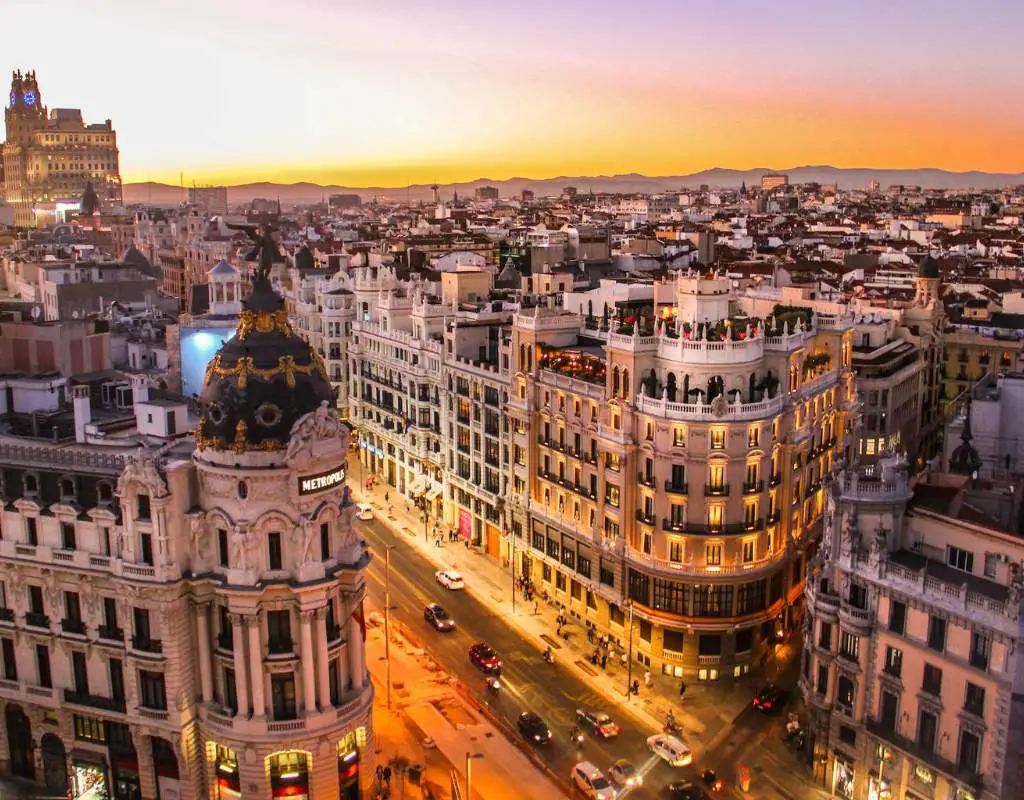
Visiting Barcelona in March
Barcelona is filled with architecture and art that blends the traditional and modern. The city is accustomed to a Mediterranean climate where summers are warm and winters have mild, chilly temperatures.
Barcelona can cater to almost anyone and has many attractions and excursions . During March, the city comes alive after a chilly winter. Springtime starts from March to May and is the area’s shoulder season. This period of time has been considered the best to visit because it’s between the peak and off-season. There are less tourists during this time and you’ll find the price of accommodation lower than the peak season.
During March, Barcelona will experience average temperatures of between 53°F (12°C) and 73°F (23°C). If you want to see more of the local side of life, then March is the best time to visit.
Visiting Madrid in March
Madrid, Spain’s capital, blossoms in Spring. Although the weather in Madrid in March is still frosty, the good thing is that you’ll rarely see rain because most days the sun will be shining. Even with the sunny days ahead, packing long-sleeved tops and jackets is essential for those grayer days.
In the Spring season, Madrid experiences temperatures between 43°F (6°C) to 61°F (16°C). The weather is pleasant for sightseeing as the city is less crowded with tourists. If you’re a football fan, you can visit the museum of the two major football clubs, Atletico Madrid and Real Madrid, as well as watch them play live.
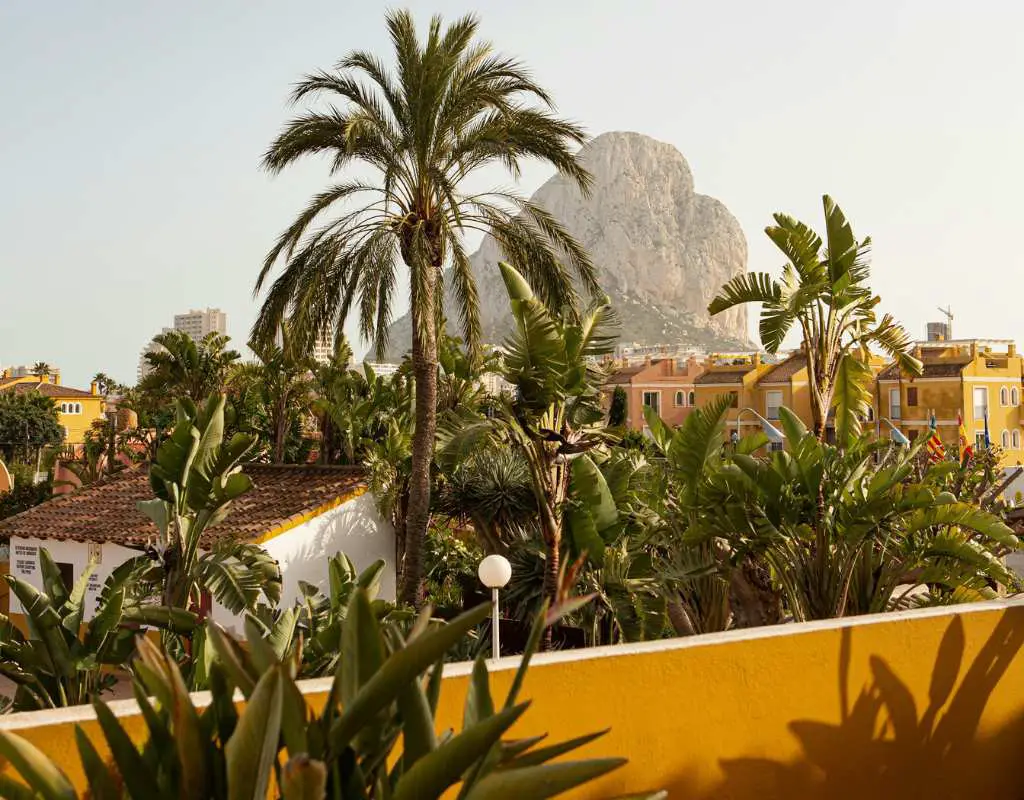
Visiting Seville in March
Seville is the ideal destination that perfectly balances historical attractions and modern developments. This famous Spanish city is one of the hottest parts of the country. Spring feels like summer, with temperatures reaching a pleasant high of 68°F (20°C).
Although we see temperatures rise in March in Seville, this season also brings a high chance of rain. On average, it will rain for about 9 to 10 days during the day, which can be heavy. The evening brings chilly hours as the temperature can be a low 48°F (9°C).
Don’t let the rain put you off because, despite that, you will see an average of 6 hours of sunshine every day in Seville. There are also plenty of spring festivals you can enjoy and exciting tours you can book. If you’re a foodie, you can go on a guided food tour .
Tip: Carry a compact umbrella that can fit in your bag and a waterproof jacket to stay dry in the rain.
Visiting Valencia in March
During March, Valencia is hyped up for their famous Falla festivities. The weather is warming up, and you do not need to wear layers of clothing. As the month begins, the city is transformed with parades and displays of colorful fireworks.
The temperature reaches comfortable levels. During the day, it can get a high temperature of 66°C (19°C). Sometimes, it may exceed close to 86ºF (30ºC), while at night, it can drop to around 46°F (8°C). The weather is typically mild and pleasant, allowing you to participate in the many free Valencia activities and attractions .
Final Thoughts on Spain’s Weather in March
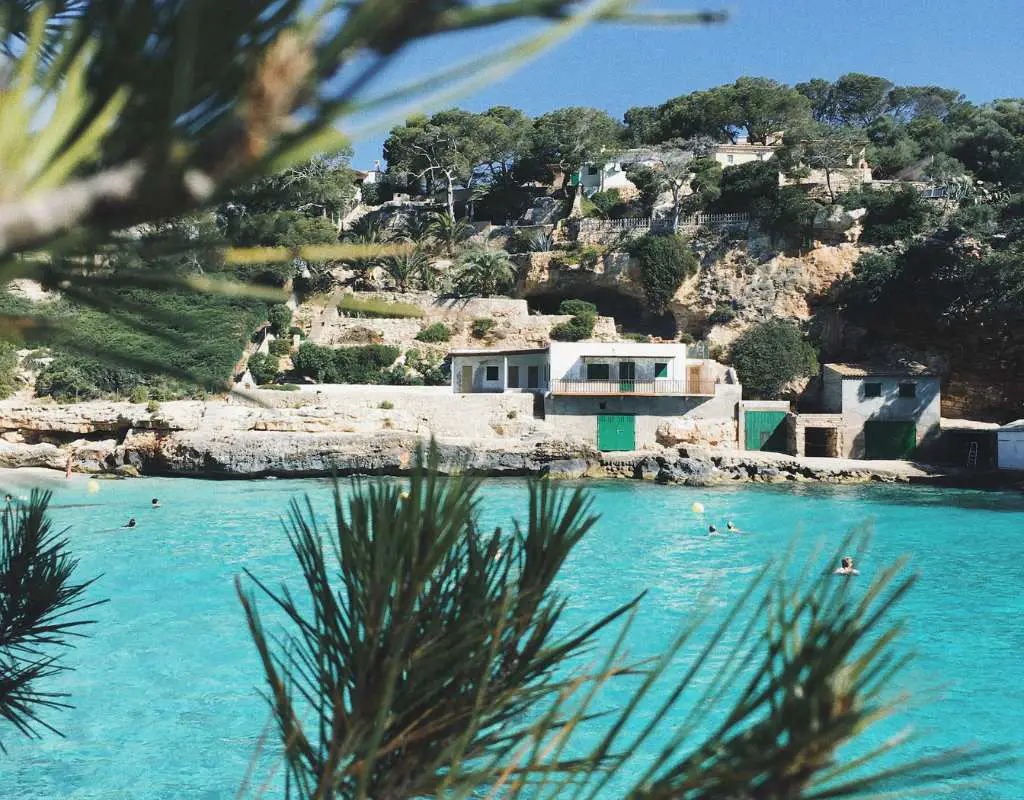
With the warm and beautiful weather and so many cities to see in Spain, what could be stopping you from booking your trip to Spain in March? It is a time of the year when the country’s temperature rises after a dreadfully cold winter, and because there are fewer tourists, you can have fun without the high prices.
If you’re still unsure what to pack for your trip, check out our handy guide for first-timers, what to wear in Spain , to ensure you’ve packed all the right outfits.

Spain in July: Weather, Activities, & More
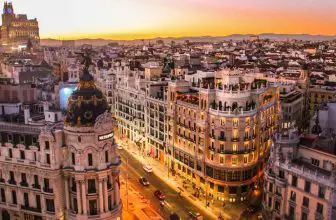
Spain in February: Weather & Things to Do in Spain

Spain in December: Weather & Things to Do
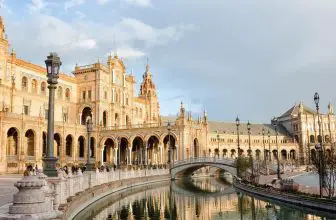
Spain in April | Weather, Festivals & Things to Do When Visiting
Leave a reply cancel reply.
Save my name, email, and website in this browser for the next time I comment.
- 8 Luxury Hotels in Gran Canaria | Boutiques, 5-star, & Resorts
- Málaga To Ronda Day Trip | Is It Better By Train, Plane, or Car?
Traveling in Spain aims to help tourists and locals find the best adventures, and tours in Spain. We collect live prices from trusted tour and ticketing operators. We’ll sometimes link out to our affiliate partners, such as Amazon LLC, and make a small commission at no extra cost to you.
Privacy Overview

Shopping cart

Spain in March: Explore Cities, Culture, and Festivals
Spain in March is a great option if you’re seeking a fantastic break but don’t want to pay peak season prices. March also provides some nice weather as the cold temperatures start to retreat, making the beaches a viable option.
Spain in spring offers mild temperatures, more budget-friendly options, and some great fun. The season has some wonderful parties, and with fewer crowds, you’ll have the opportunity to explore the country’s hidden gems.

Hi, we’re Timon & Filipa!
We travel across Spain in our motorhome, Speedy, and update TravelSpain24 with fresh content, practical tips, and personal stories from the road. Our goal is to help you experience Spain beyond the typical tourist trails.
March Weather in Spain
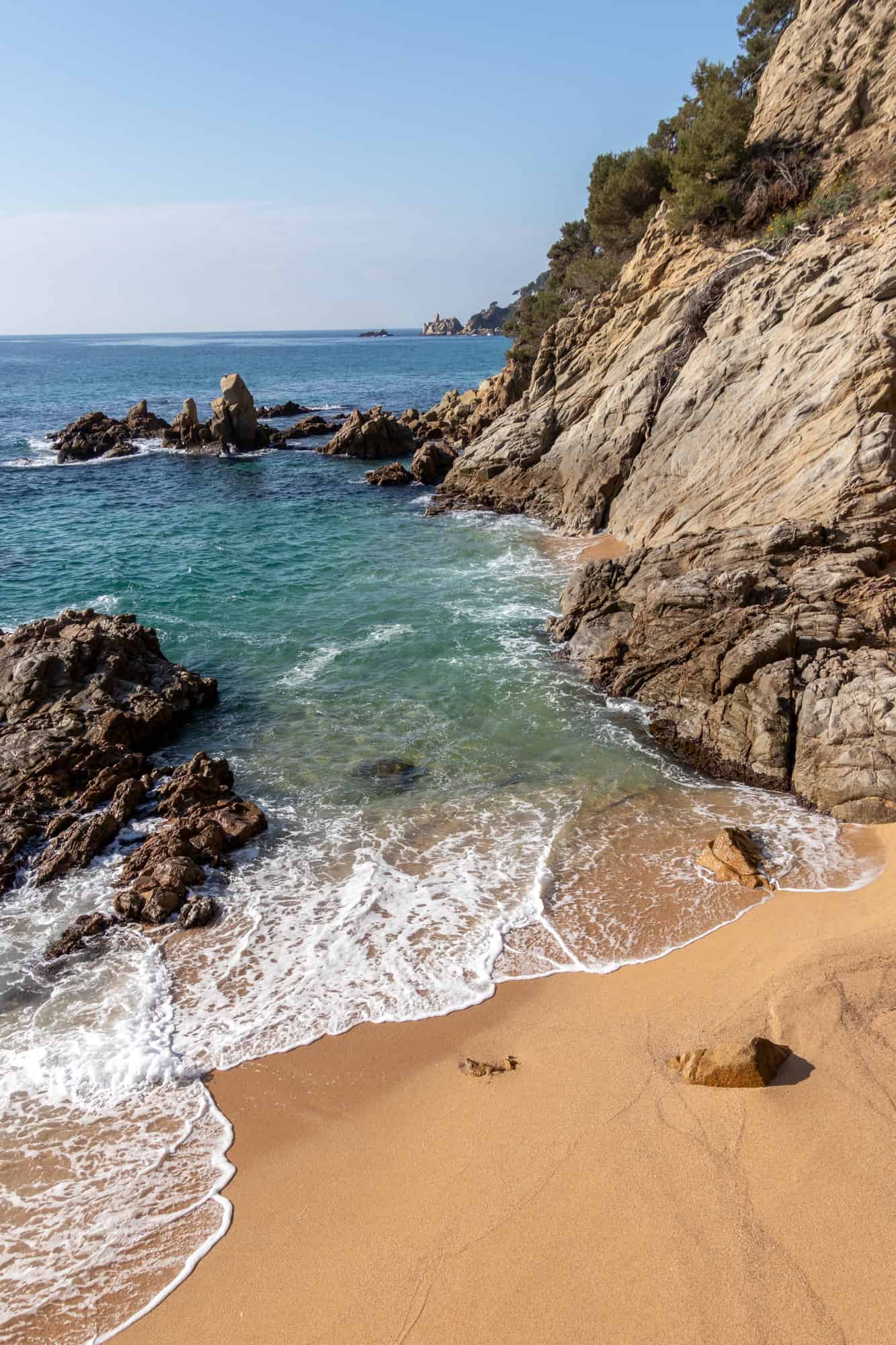
March marks the start of spring in Spain, so while the weather may still be a little on the chilly side, you can expect pleasant and sunny days. However, the weather you can expect will depend on where you plan on staying.
The weather in Northern Spain is dramatically different compared to the south. In the southern areas of Spain, including Andalucia, March offers warm days and pleasant evenings, making them ideal for exploration during the day and taking advantage of the restaurant terraces and open-air bars at night. While you may need to pack a sweater or light jacket, you should be able to fully enjoy your break without giving much thought to the weather.
In the northern areas, Spain’s climate gets a little more unpredictable. Although there are still warm days and cooler evenings, March does tend to bring showers. Areas such as Asturias can be prone to unexpected showers, where the weather can switch from bright and sunny to rainy in a matter of minutes. For this reason, it is a good idea to have an umbrella or a rain jacket in your bag for a quick deployment if you feel a few spots of rain.
Temperature-wise, Spain tends to vary from 50ºF (10ºC) to the high 60ºF (16ºC) range in the southern areas to mid 40ºF (4ºC) in Madrid and other cities on the desert plateau. In the northern areas, temperatures in March tend to remain in the mid 50ºF range, but the thermometer may reach 60ºF late in the month.
Top Spanish Cities to Visit in March
Many cities in Spain are prone to stifling temperatures in the summer months, and this, together with large crowds of tourists, may discourage you from taking a Spanish city break. However, you can expect more tolerable temperatures and fewer fellow tourists in March, making a city break an appealing vacation prospect.
Spain has numerous large cities that attract tourists, offering insight into Spanish culture, cuisine, and history. You can find something of interest in practically any Spanish city, but some especially fascinating cities are ripe for exploration in March.
Madrid in March
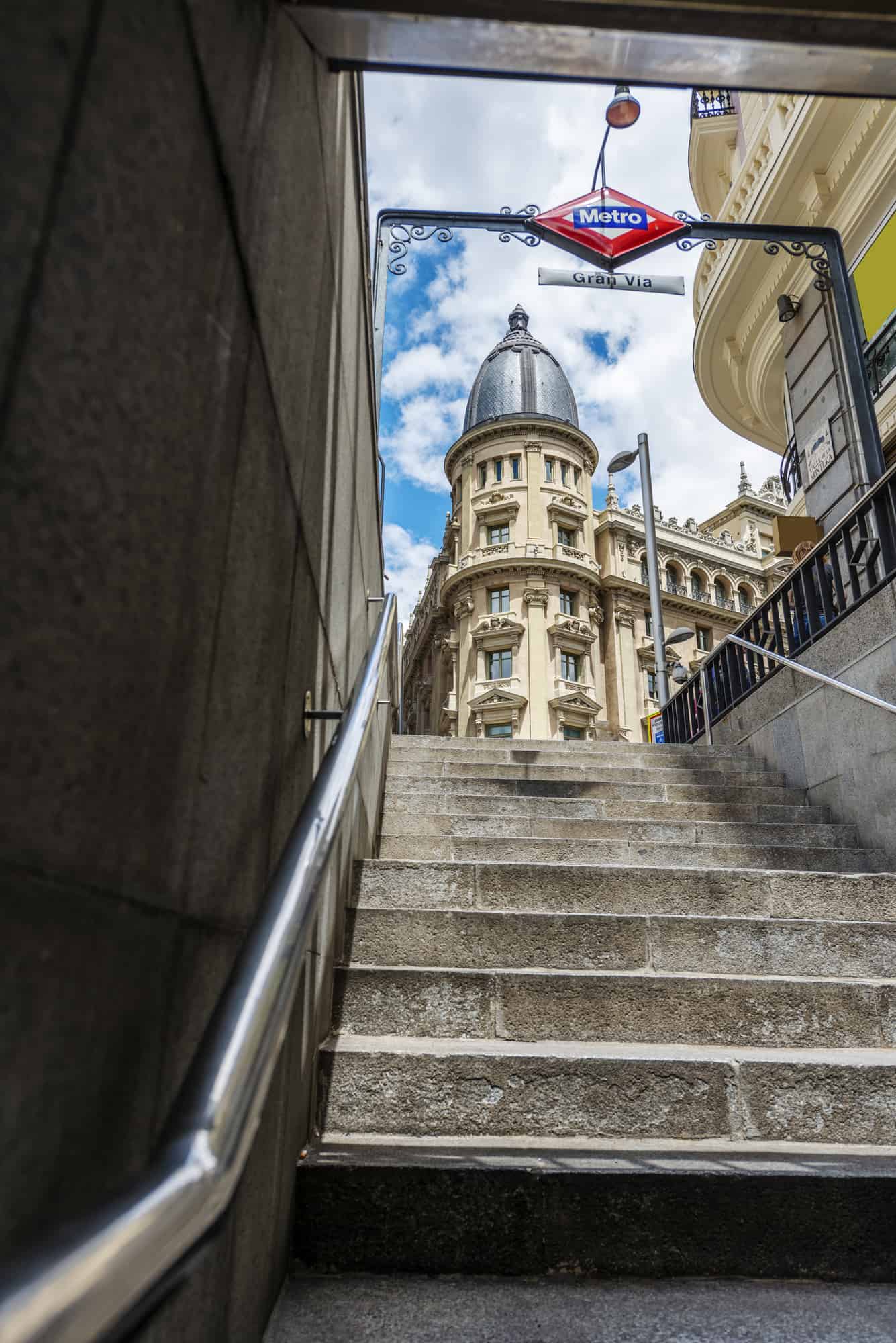
Madrid is the capital city of Spain, home to about three million residents. It also welcomes around four million visitors annually, turning it into a bustling and vibrant city, especially in the peak season.
Visiting Madrid in March offers a different experience. With milder weather and fewer crowds, it becomes an ideal time for a visit. Even though it’s off-peak season, there’s still much to see and do in March.
In March, you can discover the Festival International de Arte Sacro. This festival is where artists specializing in sacred music showcase their talents. There are almost 60 performances annually at various venues across the city, including the Basilica Pontificia de San Miguel.
Nature lovers will appreciate the blossoms of almond and cherry trees, adding a splash of color and beauty to the city’s parks and streets. This natural spectacle provides a serene contrast to the urban landscape.
For those seeking cultural experiences, March is an excellent time to catch some of the best flamenco shows in Madrid . The passionate dance and music of flamenco are deeply rooted in Spanish culture, and seeing a live performance is an unforgettable experience.
With March being outside the peak tourist season, you’ll find a greater variety of accommodations. From luxurious hotels to charming local stays, deciding where to stay in Madrid becomes easier and more enjoyable during this time.
Barcelona in March
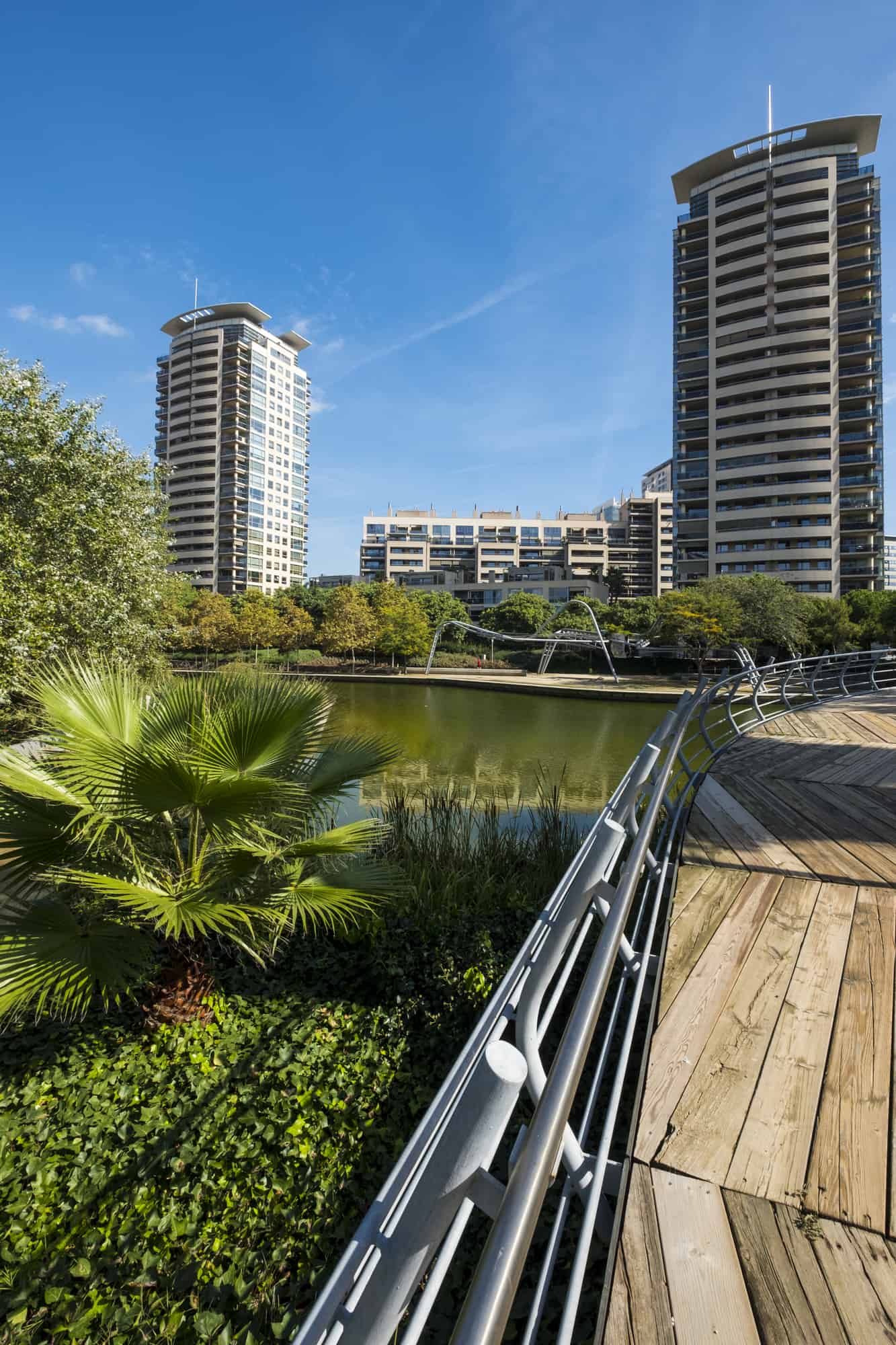
In March, Barcelona starts to wake from its winter slumber, and there are a whole host of outdoor activities to enjoy. You can get a welcome tour of the city in a private tuk-tuk to get a lay of the land before planning your visit in full. With the mild weather, you can explore the city and immerse yourself in the city’s culture.
Depending on how many days in Barcelona you have planned, you could see the Sant Medir celebrations. This occurs in the Gracia neighborhood on March 3 or 4, and horse-drawn parade floats are winding their way around the streets. You can also catch sweets as they are thrown to the crowds.
If you enjoy rallying, there is an annual rally in Barcelona in mid-March. This rally has been taking place for over 65 years, and vintage cars race along the coastal roads. There is live music, beer, and wine tastings, and much more along the rally route.
Seville in March
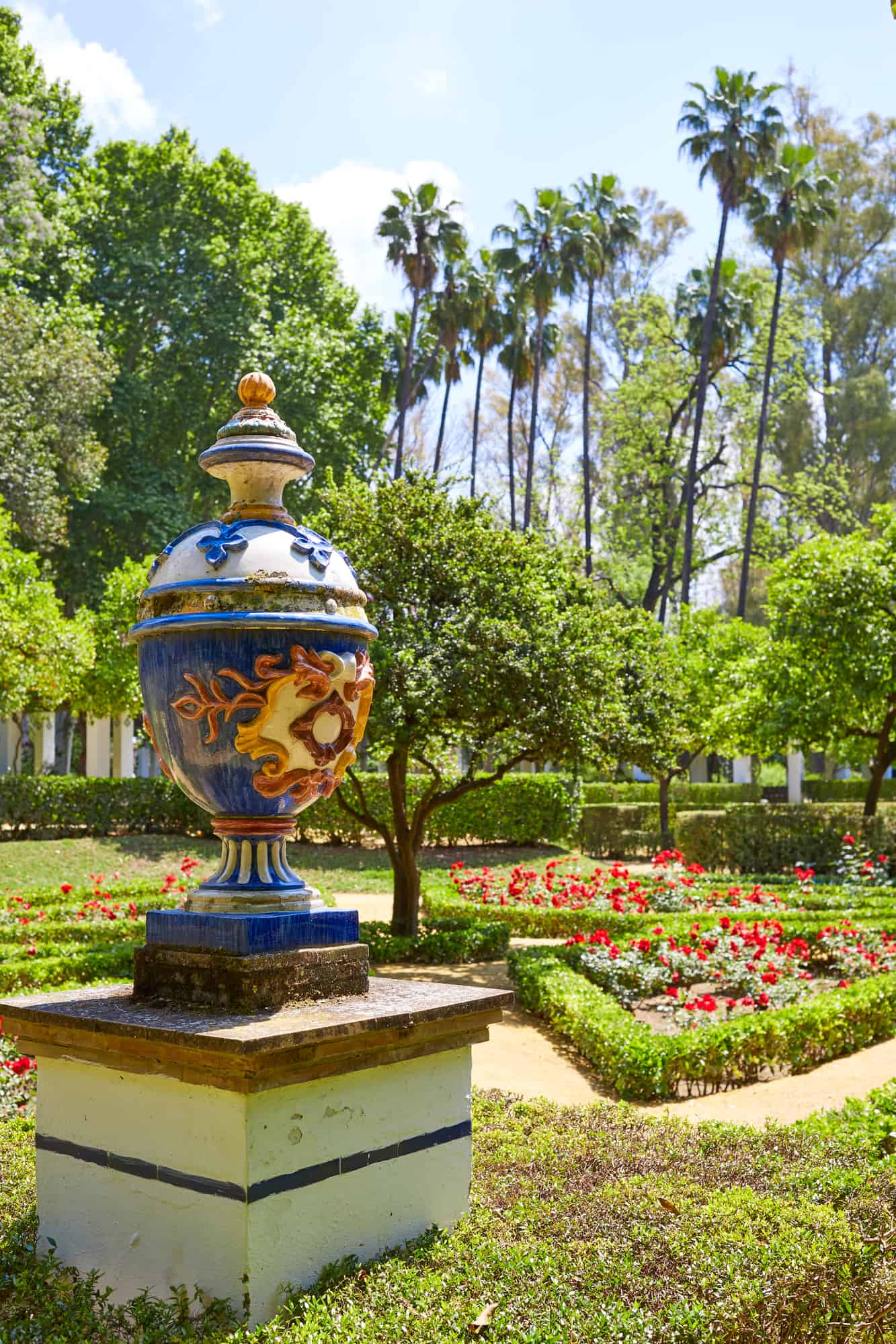
Seville can be stiflingly hot and uncomfortable in summer, so March is considered one of the best times to visit Seville . The warm temperatures bring the streets to life in March with vibrant activities. While it isn’t typically warm enough to sunbathe by the pool, mid-40s to low-70s (7ºC to 20ºC) temperatures are ideal for walking around the city all day.
March is Seville’s wettest month of the year, but typically, there are only 10 days of rain during the month. This means that you can make the most of the outdoor activities. For example, you can walk the cobbled streets of Barrio Santa Cruz. This is one of the oldest neighborhoods in the city, and it is considered one of the prettiest parts of Seville. You can discover the whitewashed buildings and even stop off at the street of kisses (Calle de los besos.)
With fewer crowds to worry about, March is also a good time to discover the city from a different perspective. Consider taking a Guadalquivir River boat trip to see the iconic architecture from the water.
Valencia in March
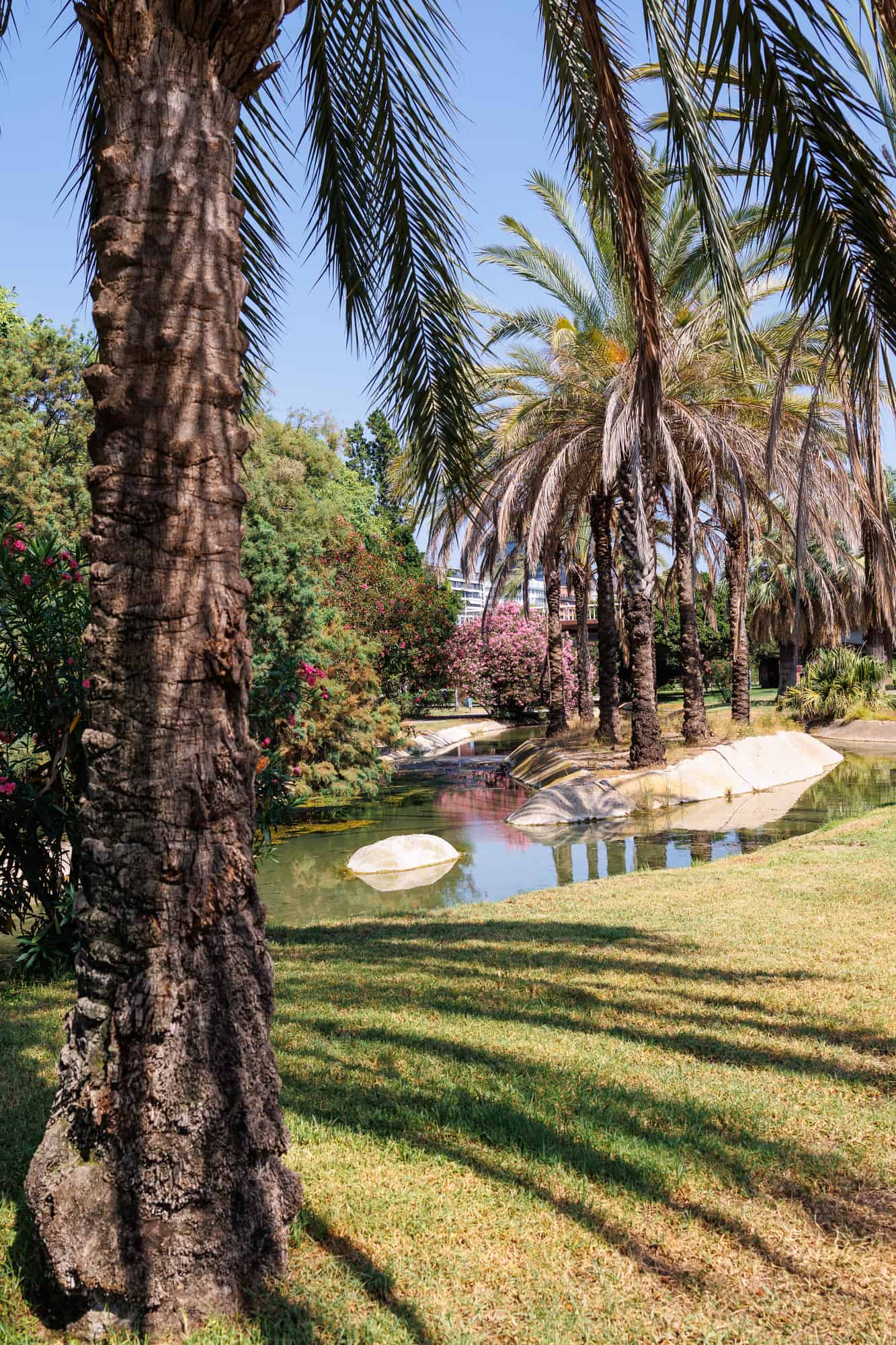
Valencia is a beautiful city that receives approximately two million tourists each year. This means the streets of Valencia’s Old Town can become extremely packed during the peak summer. Fortunately, in March, the crowds are considerably thin, so you can take your time to explore everything the city offers.
From spending the day exploring the museums, cathedral, and Plaza de Toros to enjoying an evening drink at one of the fantastic Valencia rooftop bars, you can pack your itinerary with exciting things to see and do.
Since Valencia has lots of traffic-free areas, you can walk or enjoy a segway tour to visit all the must-see attractions and immerse yourself in the culture of the city.
Granada in March
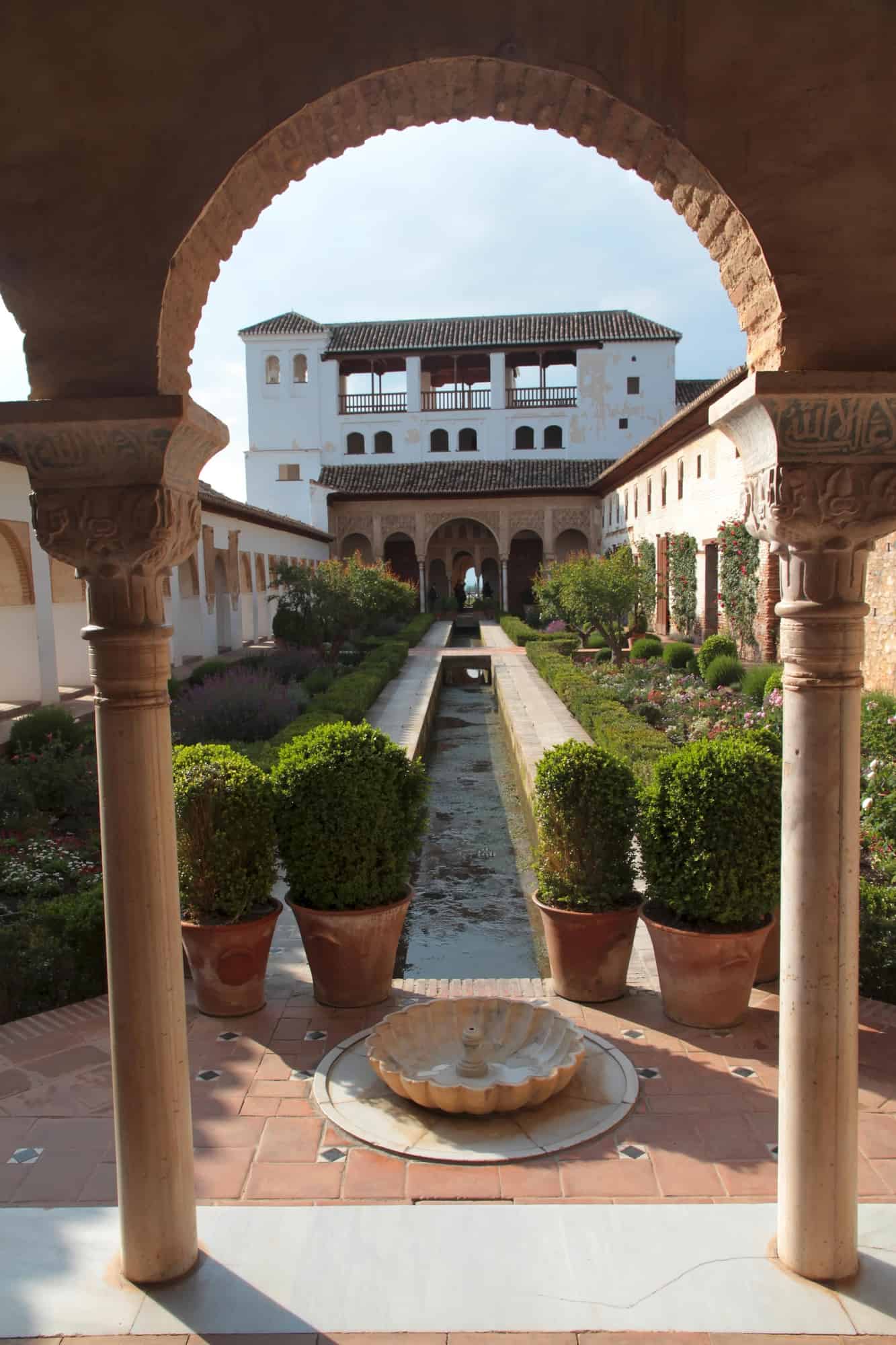
Granada is not on the list of the three largest cities in Andalucia, but it still has much to offer. Nestled below the Sierra Nevada, the city has its own distinct charm. There are cobbled streets and quaint cafes to warm up with churros and chocolate if the day feels a little cool.
One reason to visit Granada is if you want to combine a city break with some winter sports. The Sierra Nevada is one of the Spanish mountain range options for skiing, snowboarding, and more. In March, you should still find plenty of powder to enjoy. So, you can go from skiing in the morning to a vibrant city in the afternoon.
Don’t forget to include a visit to the Granada Cathedral and Royal Chapel during your stay.
March Activities in Spain
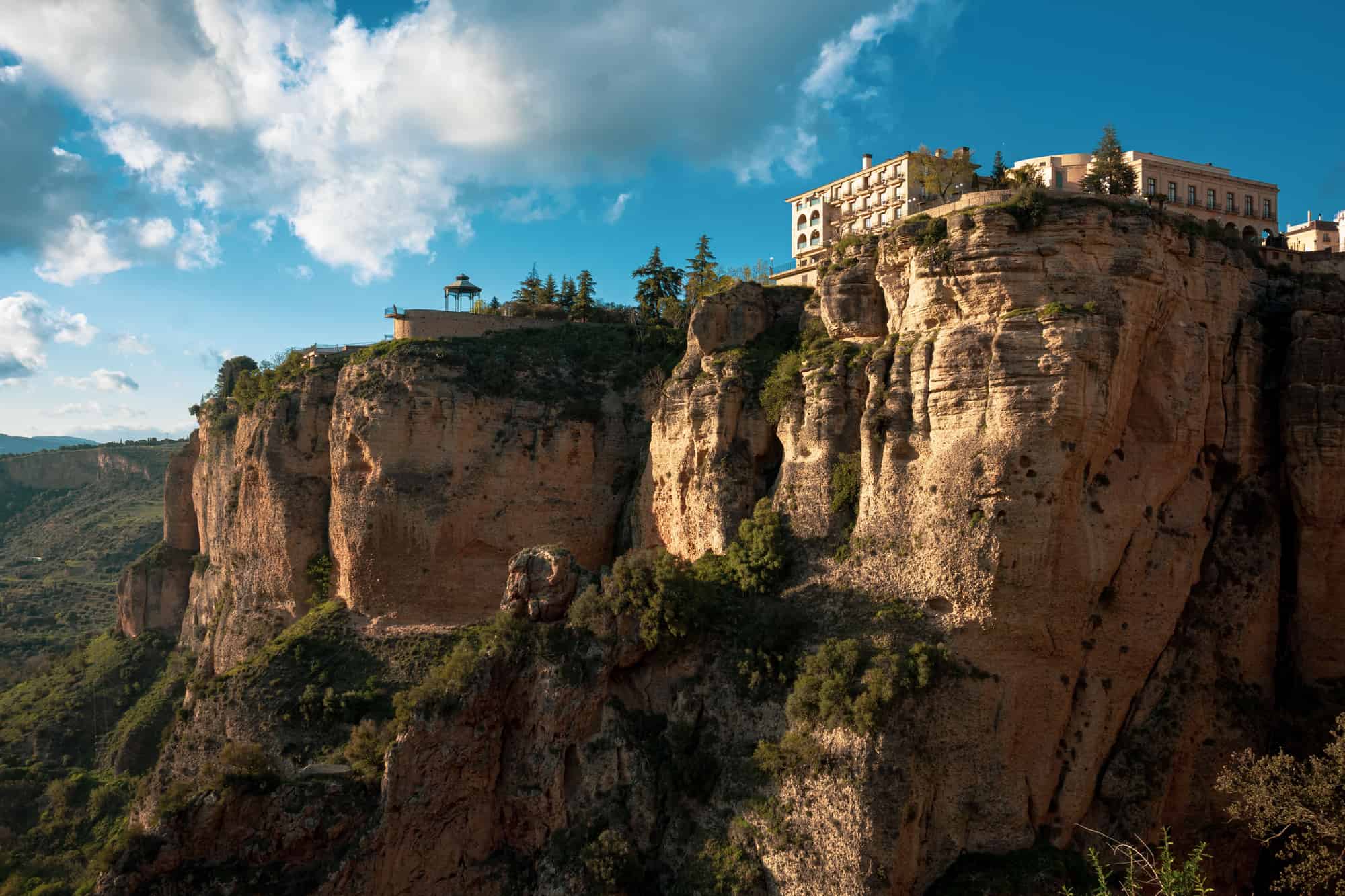
Given the milder weather, March in Spain is the ideal time to tackle those activities you wouldn’t consider in the sweltering heat of summer. From taking an exciting city break to exploring the countryside of Spain , there is plenty to see and do.
There are plenty of tours that you can take to get a greater insight into the unique culture of your destination city. We’ve already discussed some of the top cities to visit in March, but you can also try smaller cities and coastal areas to make the most of fewer tourists.
Take bus trips to see multiple cities, like this full-day trip from Malaga to Ronda and Setenil .
On the other hand, if you prefer to get out into nature, consider taking in the almond blossoms that bloom at this time of the year. The Jalon Valley offers a beautiful experience of amazing colors. Some excursions track through the woods and vineyards with stops to sample wine and food.
You can also wander the local markets, a feature of most Spanish towns and cities that showcase seasonal produce and local crafts.
Of course, if you do experience a rainy day or two, there are also plenty of indoor activities to enjoy. Spain is packed with museums, cathedrals, and exhibition centers that can offer a fantastic day. From the Picasso Museum in Malaga to the Valencia aquariums , there are many ways to stay warm and dry on a showery day.
Must-Attend Events in March
Spain has a relatively full calendar of events throughout the year, and March is no exception. In fact, March has several must-attend events that you may want to incorporate into your itinerary.
These events can be a fantastic way to immerse yourself in Spanish culture, participate in fun activities, or even try some dishes that are only available at certain times of the year. Of course, the events vary according to where you will be in the country, but some of the highlights include:
Las Fallas in Valencia

Las Fallas is one of the highlights of the Festivals in Valencia calendar. It runs from March 1 to March 19 and impacts the entire city. These festivities take over the entire city, combining art, tradition, and satire that is a must-see for anyone.
The origins of Las Fallas date back to an old carpenter’s tradition where the arrival of spring was celebrated by burning pieces of wood that were used to prop up lights in winter . This bonfire also had old belongings and rags, which gave the wooden structure a human-like appearance.
Today, the celebrations of Las Fallas include music, fireworks, religious activities, and even street paella. You can even take a Las Fallas walking tour to see the highlights.
Semana Santa Preparations

Semana Santa, or Holy Week, is Spain’s Easter celebration. While Easter is often in April, some years, it lands in late March. Since Spain is a Catholic country, Easter is an important event each year.
Cities begin gearing up for Holy Week with a variety of cultural and religious events. This can include parades, music concerts, and more. Most towns and cities have a procession where a crucifix is carried through the streets on Good Friday, with participants wearing somber costumes. However, Easter Sunday has a more celebratory tone with bells ringing, processions, and music.
Enjoy some traditionally associated dishes with this celebration. This includes Mona de Pascua, a sponge cake topped with egg decorations, and Flores fritas, a cookie molded by hand in the shape of a flower that has a crunchy texture.
Easter Week has several bank holidays. Typically, businesses are closed on Thursday, Friday, and Sunday of Easter Week.
Andalusian Fairs and Spring Markets
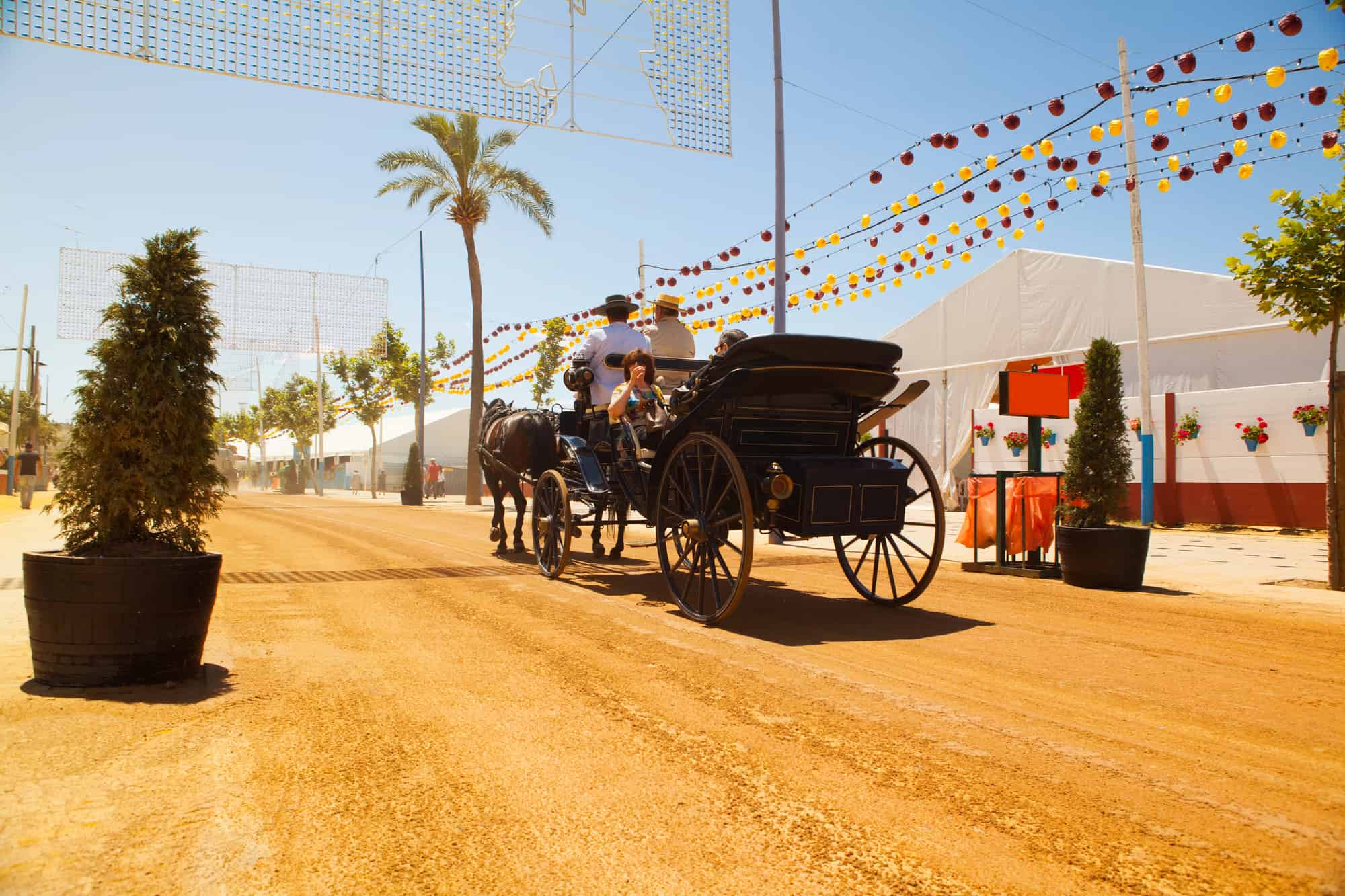
Spring is the start of the fair season in Andalucia. Most towns and cities have a Feria with fairground rides, concerts, and other activities. If you’re wondering whether Seville is worth visiting , the Seville Fair may influence you.
The Seville Fair occurs after Easter, so it can occur in late March or mid-April. This is a whole week of drinking, eating, dancing, and socializing. Horseback and carriage rides, bullfights, and music are in the small hours.
There are also some fantastic spring markets in Andalucia, where fresh, seasonal produce is showcased along with local specialties. For example, the Alcaiceria market in Granada is packed with spices, Arabic silks, and craftwork that would make an excellent souvenir for your visit.
Spring Food Festivals
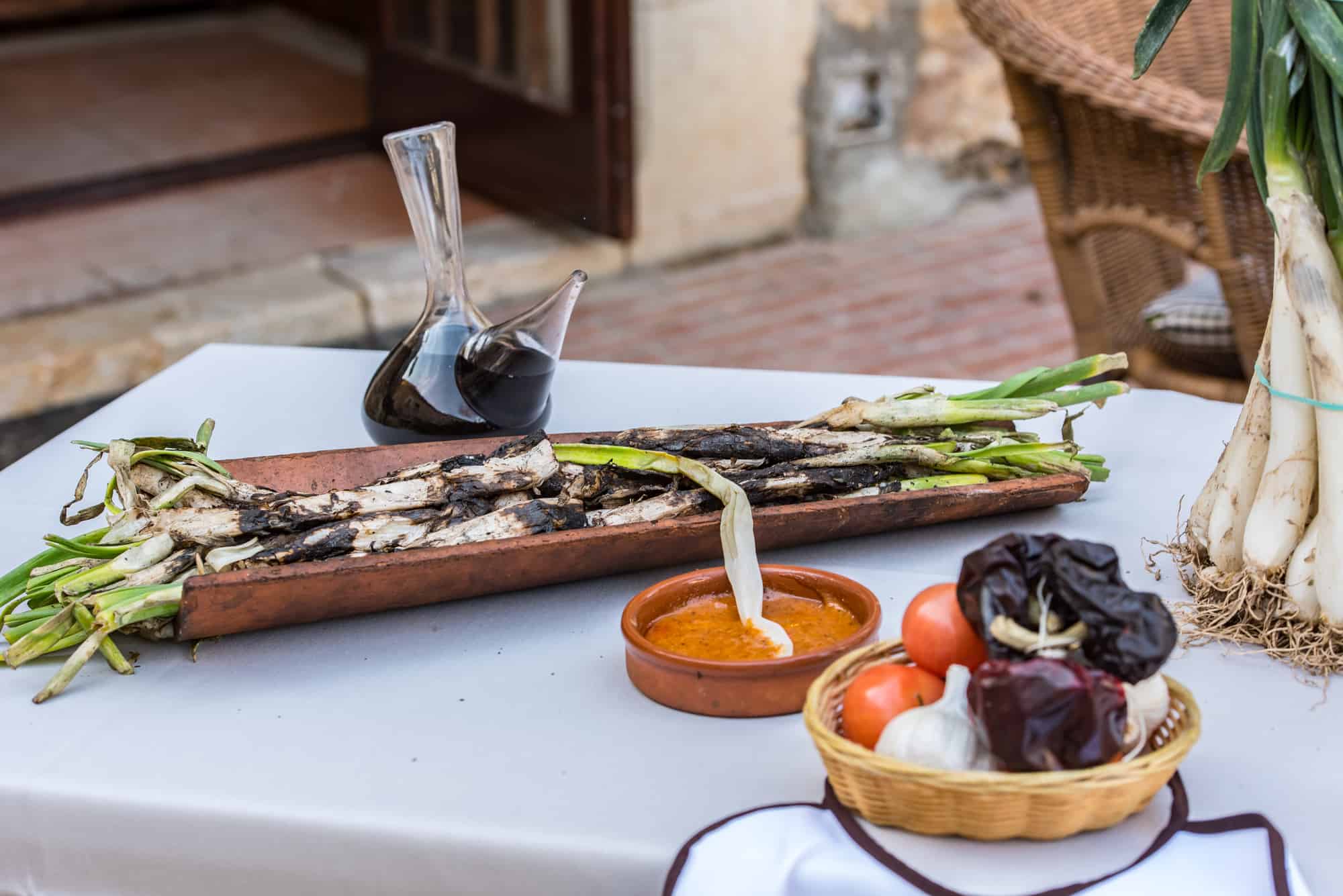
Many of Spain’s dishes are based around seasonal produce, and there are a number of delicious fruits and vegetables in season in March. From kiwi, pineapple, and strawberries to artichokes and green asparagus, you’ll see these items in dishes at local restaurants across Spain.
Many towns and cities across Spain also highlight these delicious dishes in spring food festivals. For example, in Catalonia, the locals have calçotadas to celebrate the calçot. This vegetable is a cross between a leek and a spring onion, and it is only in season from January to March. During this time, calçots are grilled and dipped in sauce, while there are eating competitions, parades, traditional music, and fares, particularly in towns such as Valls near Tarragona.
There is also the Artichoke Festival in Benicarló, Valencia. This festival is usually held in early Marchand. There are cooking competitions, food markets, and gastronomy demonstrations.
Travel Tips for March
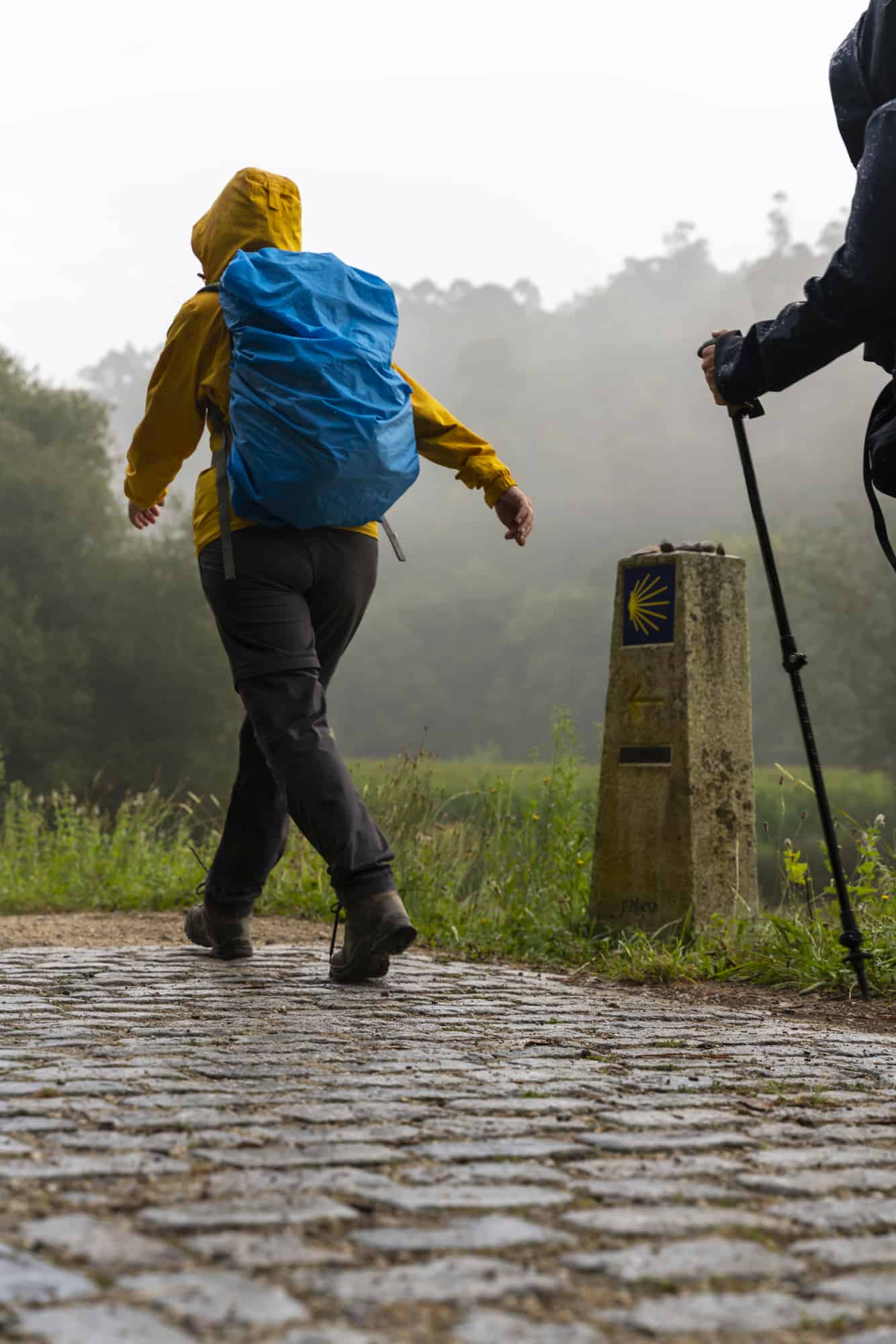
While March can be a great time to visit Spain, some travel tips can help you to experience Spain like a local and avoid tourist traps. These include:
- Consider Your Transport: Some of the best airlines to fly to Spain offer deals on car rental, but this may not be necessary. While Spain is a large country, its public transport system is solid, particularly if you’re planning a city break. Many of Spain’s major cities have comprehensive public transportation systems, which negate the need for a rental car. Public transport can also be a good way to see different parts of Spain without worrying about navigating routes as you drive.
- Think Layers: Spain tends to have mild weather in March, so you’ll need to think about packing layers. Long-sleeved shirts, light jackets, sweaters, etc., can be beneficial when you’re out early in the morning and into the evening, when you may appreciate that additional layer of clothing. However, during the day, when the temperatures warm up, you can easily shed a layer of clothing to remain comfortable.
- Eat Like the Locals: While many Spanish dishes are available throughout the year, eating seasonally is a great way to enjoy local cuisine and save money. Look for seasonal dishes and produce on the menus at local restaurants and cafes.
- Consider Your Accommodation Options: While you may only look at a certain type of accommodation during summer vacations, March is off-peak season. So, you can either get cheaper accommodation deals or enjoy an upgrade. Many hotels offer reasonable deals in March that may be out of your budget in the summer months.
Safety and Customs in March

Spain is considered a safe destination for travelers, but there are still a few things to consider to stay safe and adhere to local customs. For example, there are some religious festivals and celebrations in the streets, churches, and cathedrals.
On these occasions, you may need to think carefully about how you’re dressed. Typically, you need to have your arms and legs covered above the knee. So, if you’re going to a cathedral on a warm day as part of your day out, carry a long-sleeved shirt that you can easily wear over your clothes.
Although March is quieter, you also need to be aware of pickpockets in crowded areas, such as markets and festivals. Unfortunately, opportunists are everywhere, so ensure you protect your valuables. Having a separate change purse with smaller notes and coins is a good idea to pay for little items without flashing your cash.
Conclusion: Ready for Spain in March
While many tourists flock to Spain in summer, March is certainly not the worst time to visit Spain . In fact, with fewer crowds, milder weather, and different activities to enjoy, you may find that March is the ideal time for your Spanish vacation.
If you’re not a big fan of trying to see the sights along with masses of tourists, you’re likely to appreciate the fact that March provides an opportunity for an authentic insight into Spanish culture, cuisine, and activities, allowing you to experience its unique charm in your own time.
Search the site
Popular destinations.

Barcelona is a fantastic holiday destination! This city has a special place in our hearts. See more
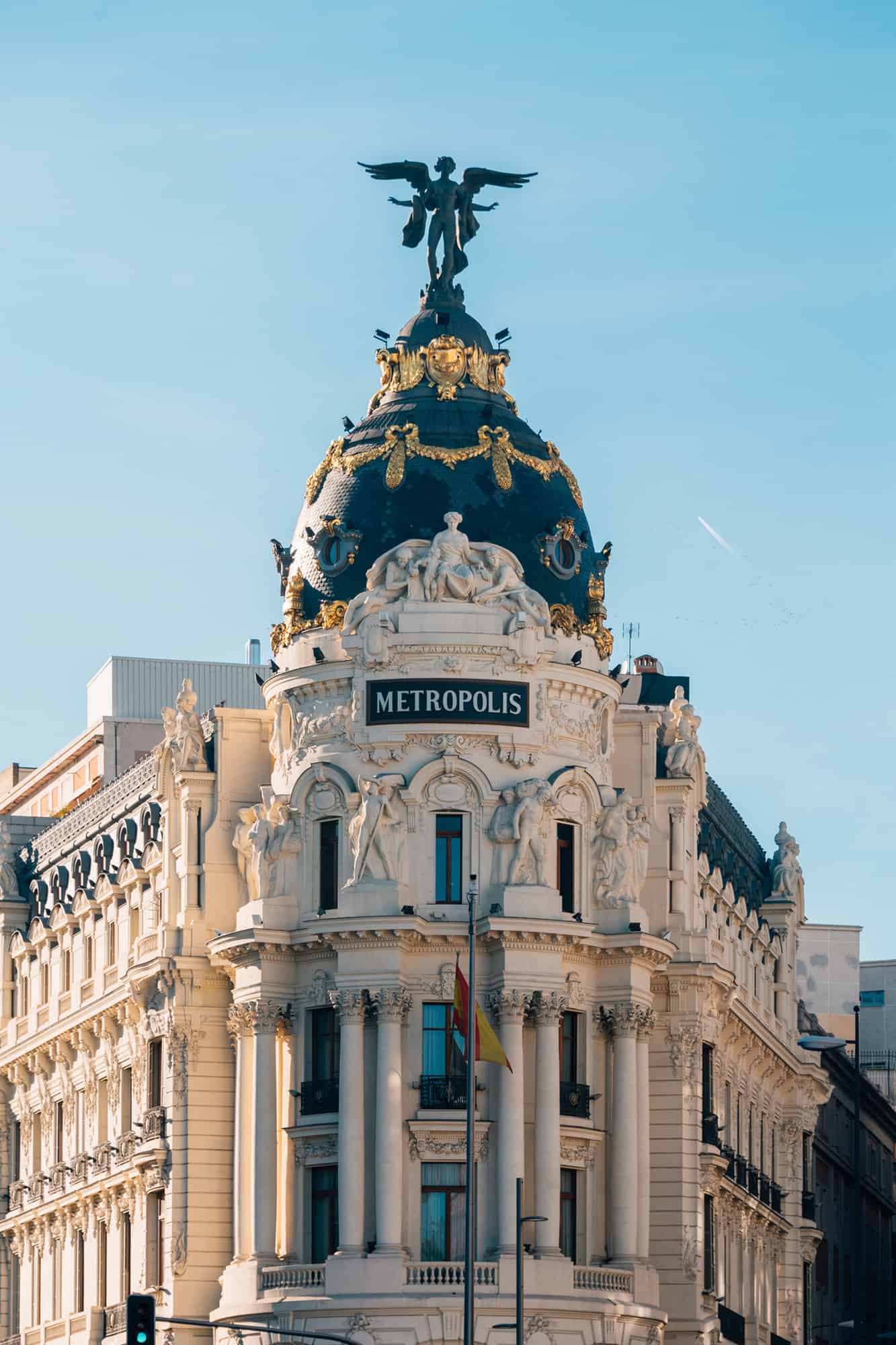
Madrid, the heart of Spain, is a city where every corner buzzes with life and history. See more
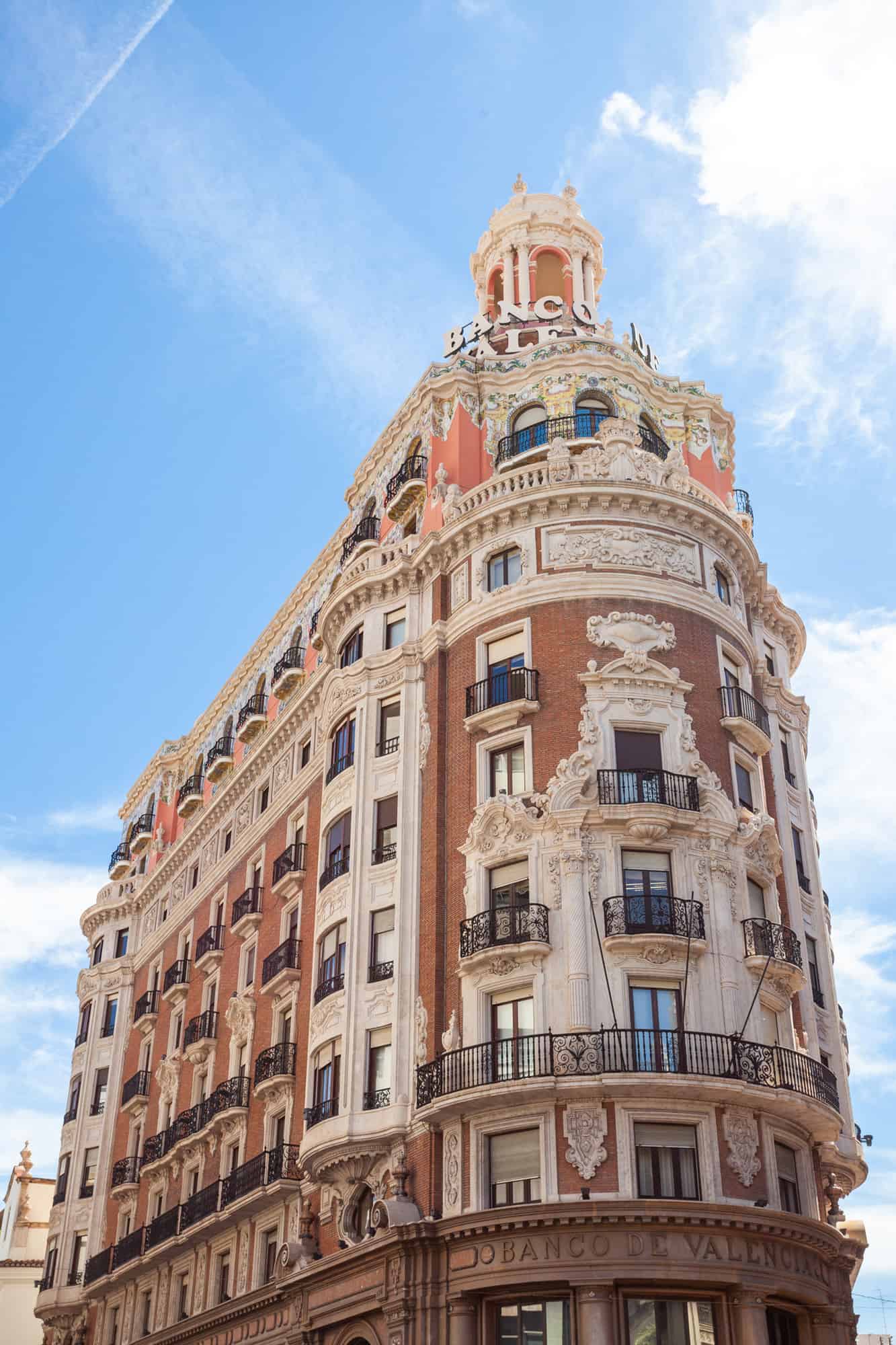
Valencia is a popular tourist destination with fantastic accommodation options. See more
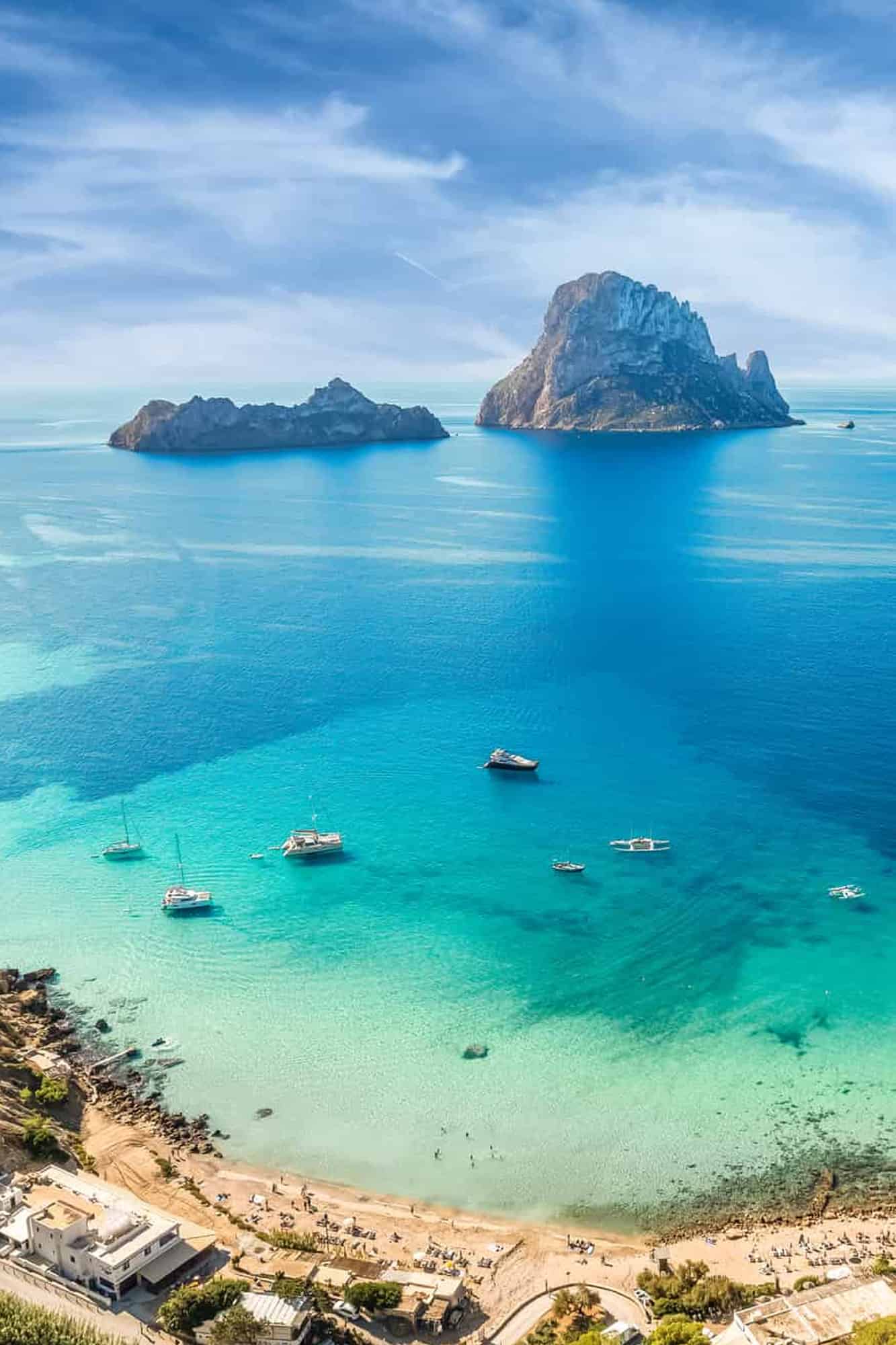
Mallorca is one of the Balearic Islands, a holiday paradise with Europe’s finest beaches. See more
Just letting you know When you buy something through our links, we’ll earn a small commission—don’t worry, it won’t cost you any extra! It’s a win-win, right?
Discover Hotels With Booking.com
Book Exciting Tours With Viator.com
Rent a Car With Discovercars.com
Flights with Cashback With WayAway.io
Exclusive Heymondo Travel Insurance Offer
Planning a trip? Make sure you’re covered! We’ve teamed up with Heymondo to give our readers a special deal: 5% off travel insurance . Grab this deal and know you’re looked after on your next trip.
Related Posts

January in Spain: From Festive Celebrations to Winter Fun
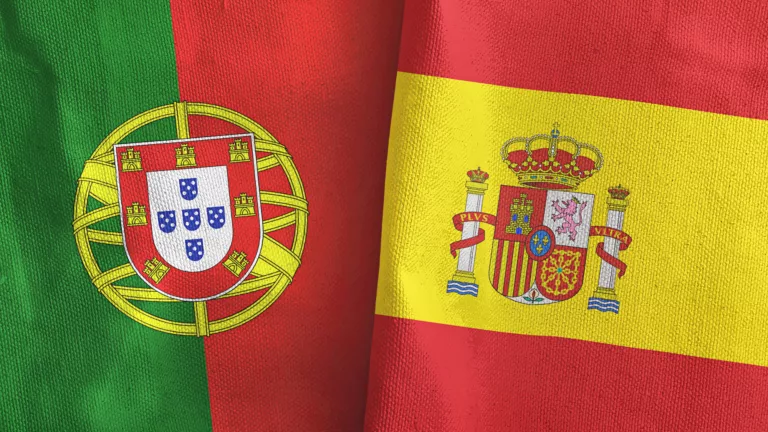
Is Portugal part of Spain?

Grocery Stores in Spain

Spain In March : An Elaborate Guide to a Smooth Spain Vacation
Spain in March is a great option for those who want to seek enjoyment within bounded budget barriers. As the cold weather is alleviating during this stretch of year, beaches of Spain begin fetching tourists towards itself. Spring season here brings the reinvigorated sense of fun and passion. Also, you wouldn’t want to miss the great parties like the Fallas Festival that this country offers during this month. Spain is more of a place with hidden gems. The more you explore, the more you keep finding places which are peaceful and eye pleasing. Right from quaint villages to late night beach parties. You name it and Spain has everything to offer you, just be prepared to experience the unexplored !
Madrid Airport and Barcelona Airport are the main International entry and exit points. You plan your trip in such a way you enter into one city and exit the country. From New Delhi or Mumbai you can easily get a one stop flight which will take you to either of the cities in 12-14hrs.
Spain Tour Package Starting @ ₹74,660
Pristine beaches. Exotic Stays. Tapas & wines. Quirky Festivals
Weather in Spain in March

Even though the winter eases, nights during this period may still be chilly but the days are quite sunny and pleasant. This is true for Spain’s northern Atlantic coast.The average temperatures in San Sebastián will likely range between 50 Fahrenheit to 60s. Similar goes with Madrid but might show a dip into the 40s at night as it is located in a desert plateau.
The Mediterranean coast will have pleasant sunny weather but a dip in the ocean might not be a good idea as the water would be too chilly for that. This might not be the case with the water in the south of Andalusia.
Spain come alive truly at night, when after finishing the day’s work people head out for tapas, wine and dancing until next morning. If you wish to join the party with them note that it can be chilly at nights in March so carry jackets and pullover accordingly. Pack an umbrella if you plan to visit in northern part of the country as the chances of rains are still high over there. Sunlight is good enough for a beach dat in the south but it won’t be a swimming season yet.
Places to visit in Spain in March
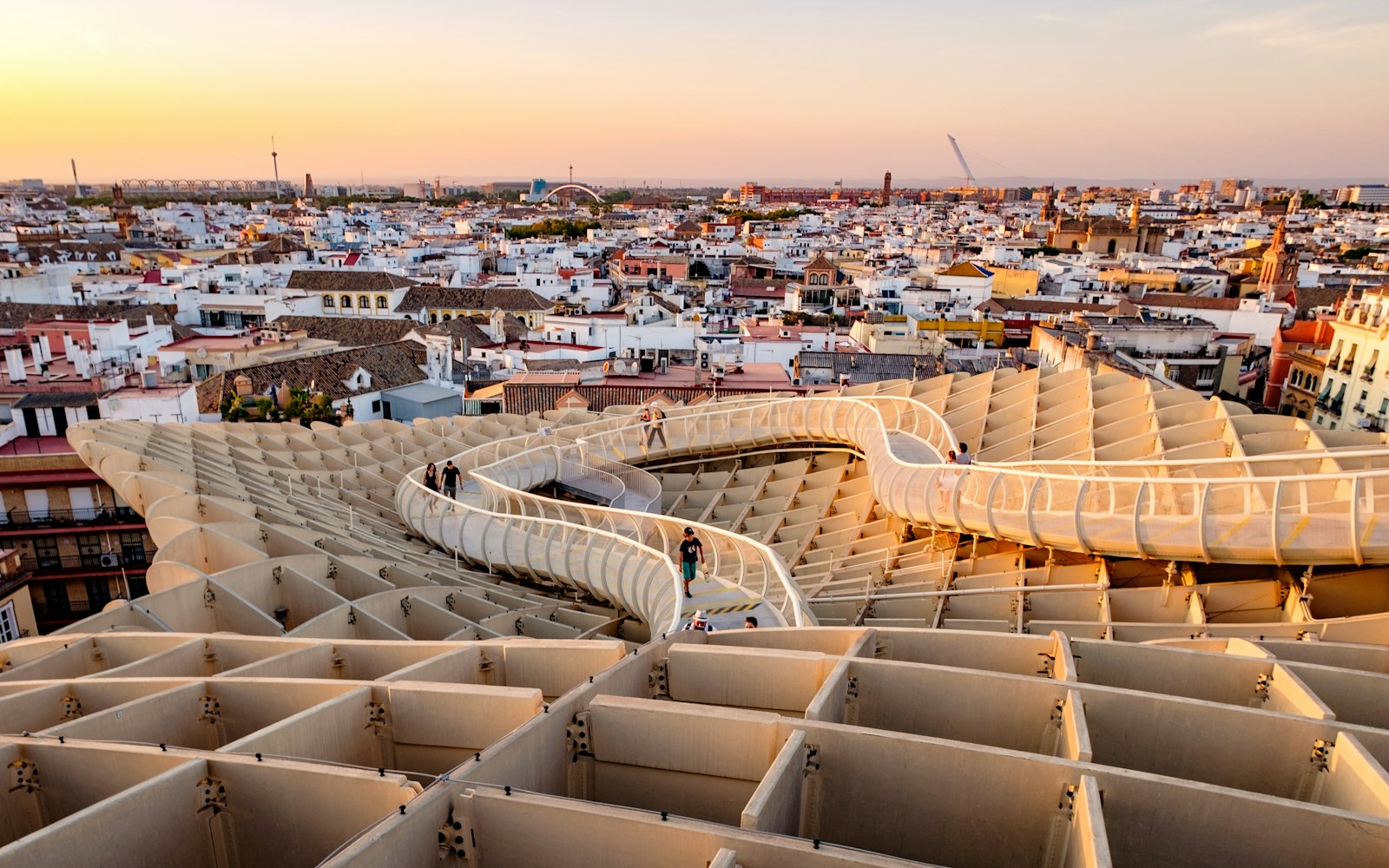
The Mediterranean coast will offer you with sunbathing weather and the north and the region of Catalonia with some showers. The atmosphere will get warmer as you travel towards the South. A great vacation plan to Spain in March should include historic cities like Granada and Seville and the Fallas Festival in the city of Valencia. The capital, Madrid, is full of exciting culture, cuisine and nightlife that you should not leave out. A combined trip to Madrid and Mediterranean coast would be a perfect idea for this month. You can visit Gaudi’s gothic masterpiece cathedral, La Sagrada Familia, in Barcelona. If you are in Andalusia, a visit to the medieval mountaintop town of Ronda with its renowned stone bridges is a must.
Also read : Best Things to do in Salamanca

- Sevilla : It is the capital of Andalusia in Southern Spain. To explore a real history here, take a trip to Real Alcazar, a fine example of Mudejar architecture.
- Cordoba : It was the most important city when Moorish were ruling Spain in the middle ages. Mezquita was a huge islamic mosque in 10th century which was later demolished and converted into a cathedral, though some parts still reflect the islamic architecture elements.
- Galicia : This town moreover looks like Ireland, with green and wet patches of landscape. Explore the wild regions of Cies Islands and Galicia National Park
- La Rioja : Spain is famous for its wine. But where does this wine come from. La Rioja is the place where you find hundreds of vineyards. Here you must also try tapas bars.
- Salamanca : It is considered to be one of the most beautiful cities of Renaissance period. Life in this city revolves around Plaza Mayor, which lined by cafes, bars and restaurants. This structure and area looks majestic after sunset when they are lit up. Most structure in this city are build with sandstones. University of Salamanca was founded 1218 and is one of the oldest institutes offering higher education.
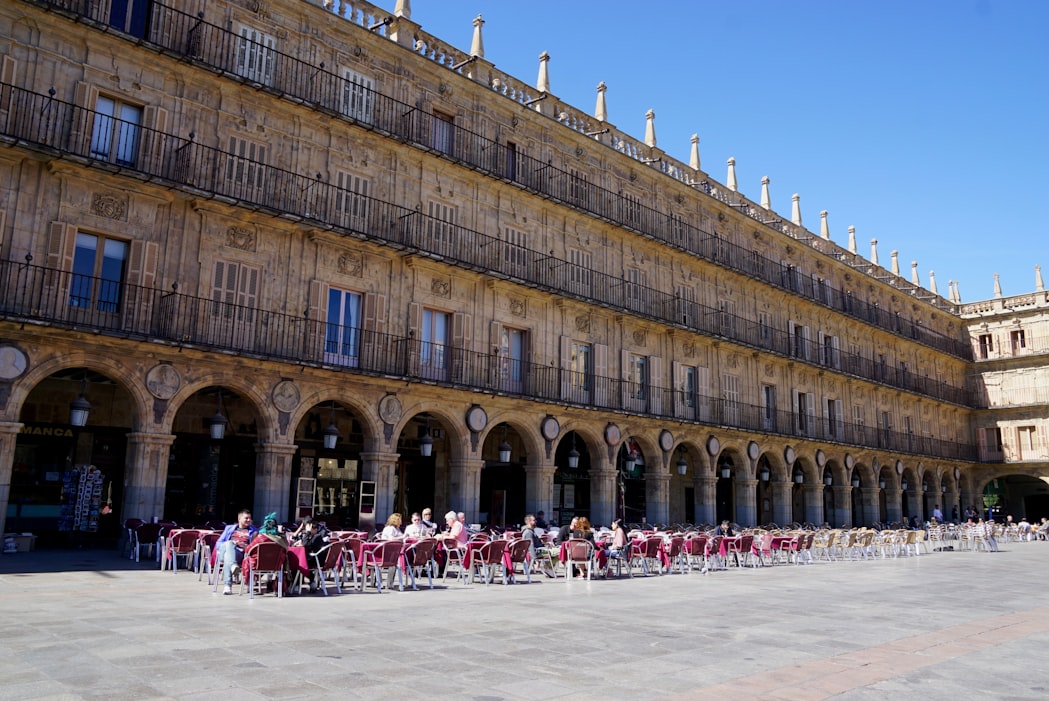
Also read : Shopping in Sevilla
Things to do in Spain in March
Culture, music, parties and festivals are always in abundance in Spain . If are in Barcelona try visiting the world renowned museums : Picasso Museum, Museu d’Art Contemporani(MACBA). You can do the same in Madrid, Prado Museum. If the weather is good you can try visiting El Retiro Park, it has amazing fountains, lakes and peaceful green spaces. If you are in Andalusia, be sure to visit medieval town of Ronda for its famous stone bridges.
Events to attend in Spain in March
- Las Fallas : The city of Valencia goes on fire during its wildest festival that is Las Fallas from March 15th to 19th. The city is engorged with drinking and dancing. Massive ninots ( paper mache and cardboard figures ) parade down the streets of Valencia. The final day involves the ceremonial burning of these ninots accompanied by fireworks and bonfires.
- Jerez Flamenco Festival : One of the Andalusia’s most enthusiastic annual festivals
- Sant Medir : Every year on March 3, costumed characters parade around the streets of Barcelona’s Gracia locality.
- Femas : Music enthusiasts shouldn’t miss this classic music festival that takes place in Seville.
- Classic Car Rally : An electrifying racing event happening in Mallorca.
We have the best travel experts here at Pickyourtrail. Feel free to check out our website and try making a customisable Spain itinerary. If you struggle in between our destination experts will reach out to you and help you plan the unforgettable trip to Spain . You can also follow us in Instagram & Facebook.
Nishant Gurav
11 posts published., related itineraries.
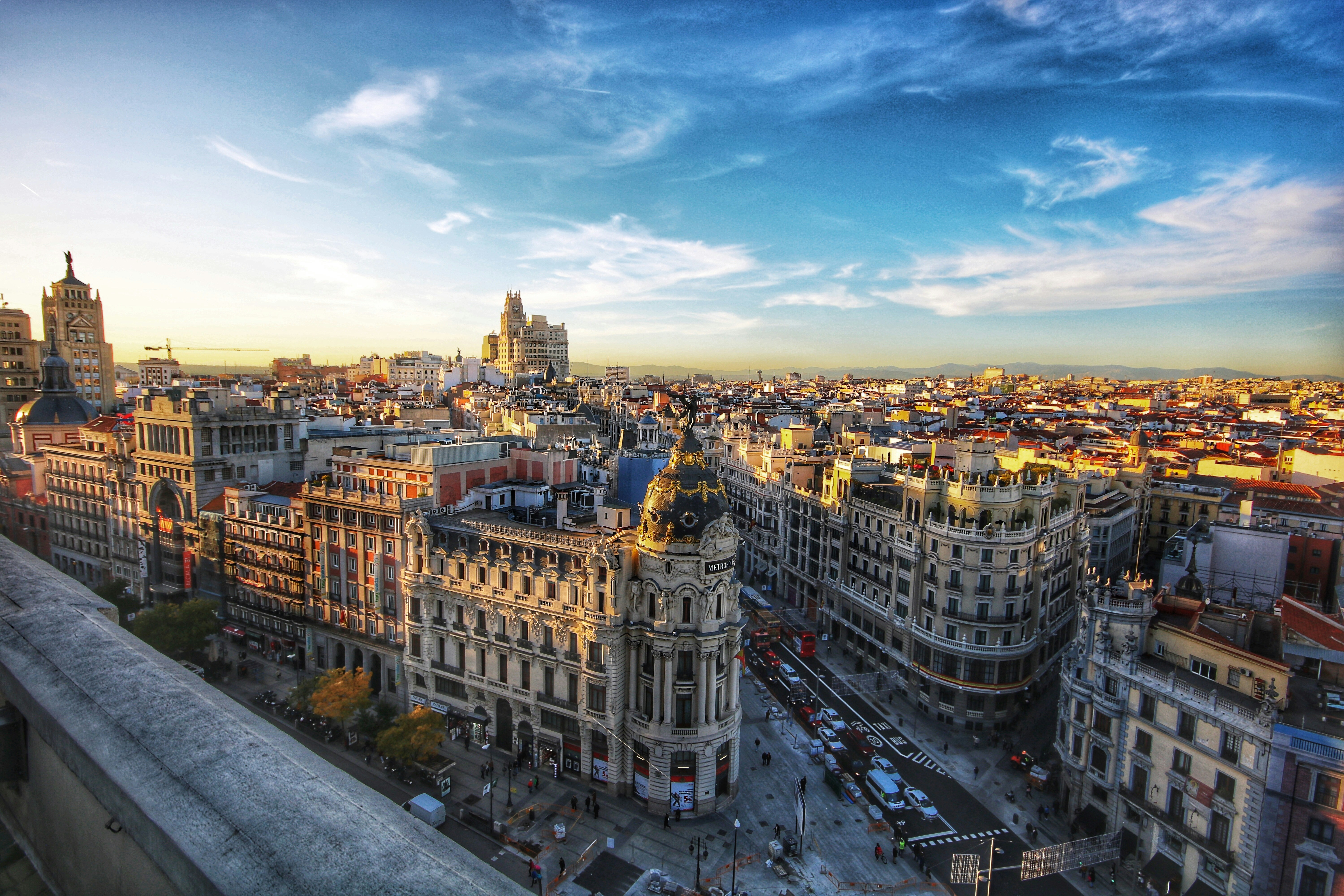
Enchanting Spain Journey: 10-Night Magical Tour Package
- Flights excluded
- 4 star accommodations
- 7 activities
- Shared transfer
₹ 1,85,760
Starting price/person
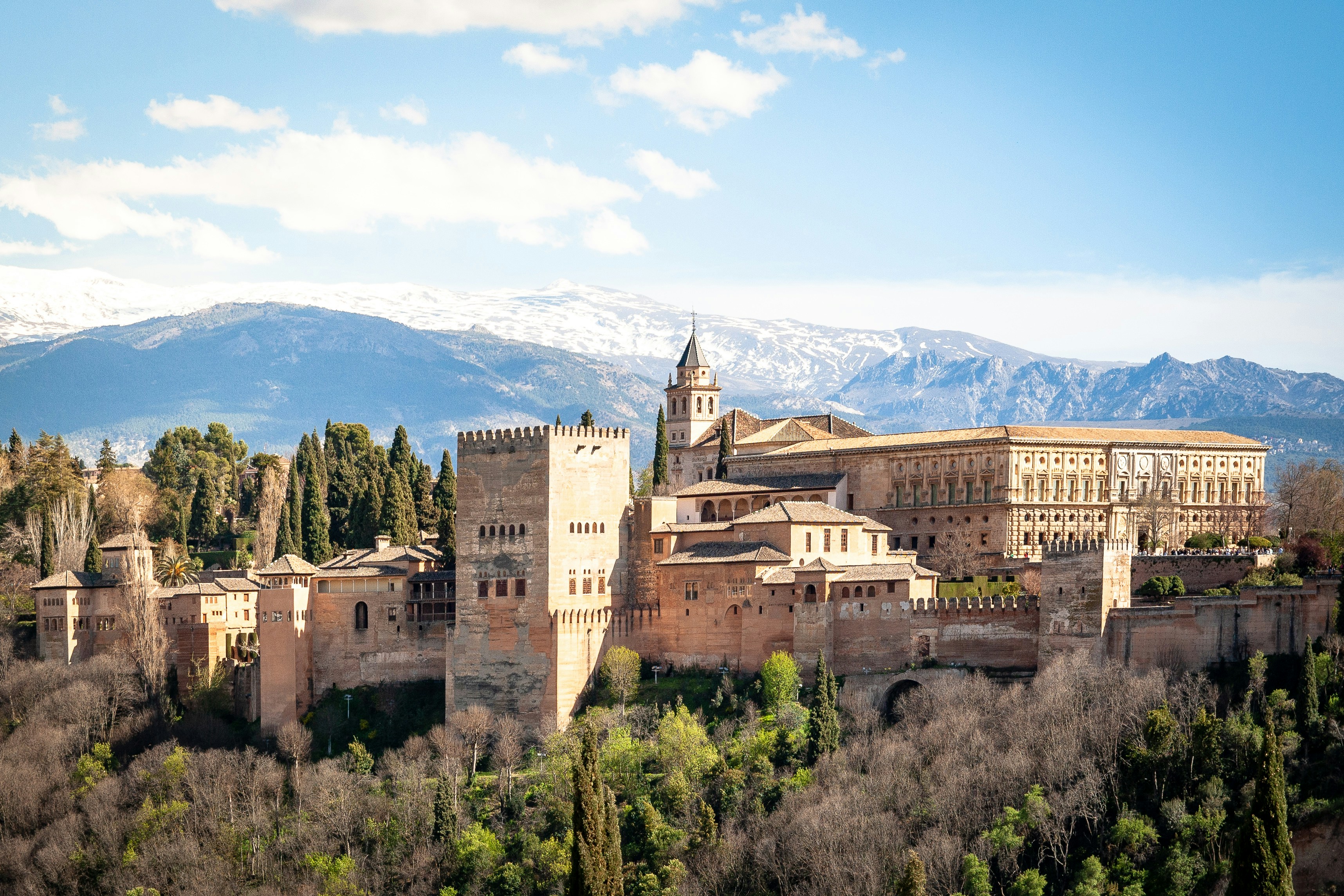
Spectacular Spain Escape: 6-Night Amazing Holiday Packages
- 3 star accommodations
- 4 activities
₹ 50,725

Thrilling Spain Adventure: 10-Night Exciting Packages
₹ 1,40,850.
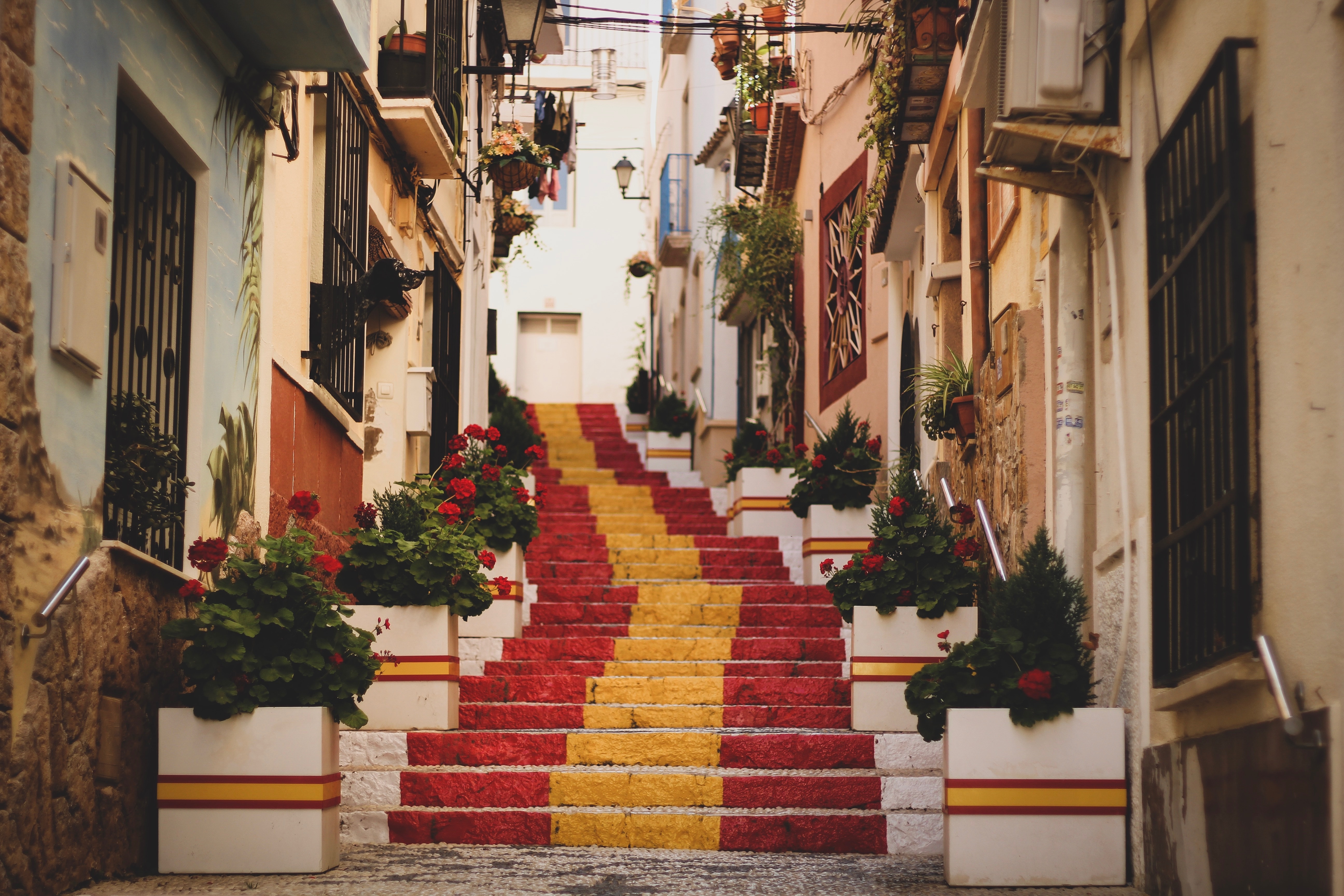
Captivating Spain and Ibiza Retreat: 7-Night Scintillating Vacation Packages
- 3 activities
₹ 1,23,879
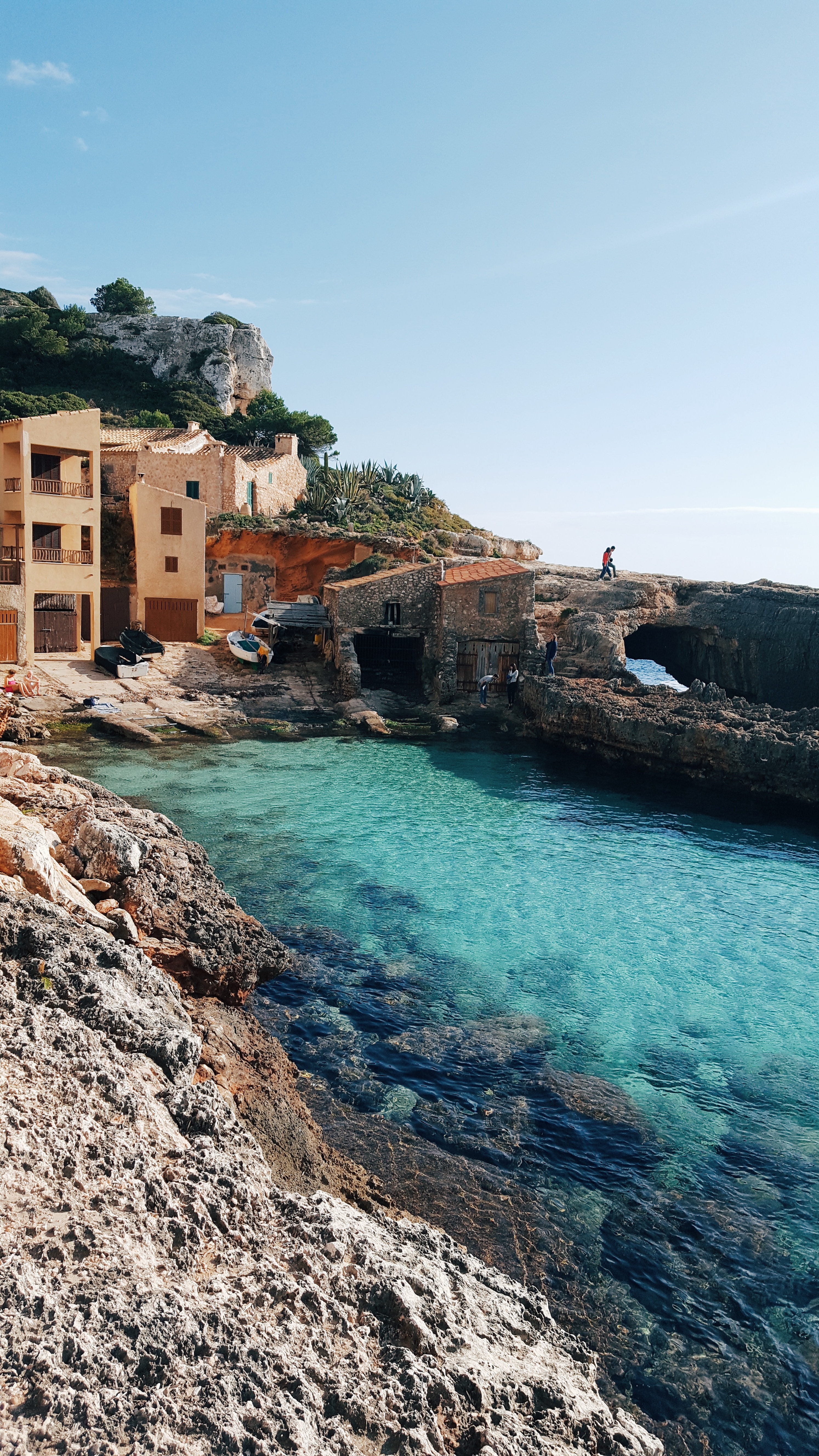
Timeless Spain Portugal Getaway: 10-Night Classic Holiday Package
- 5 activities
₹ 2,27,828

Timeless Spain Journey: 13-Night Classic Travel Packages
- 1 star accommodations
- 11 activities
₹ 1,54,617

Exquisite Spain Getaway: 6-Night Majestic Packages from India
- 6 activities
₹ 1,20,549
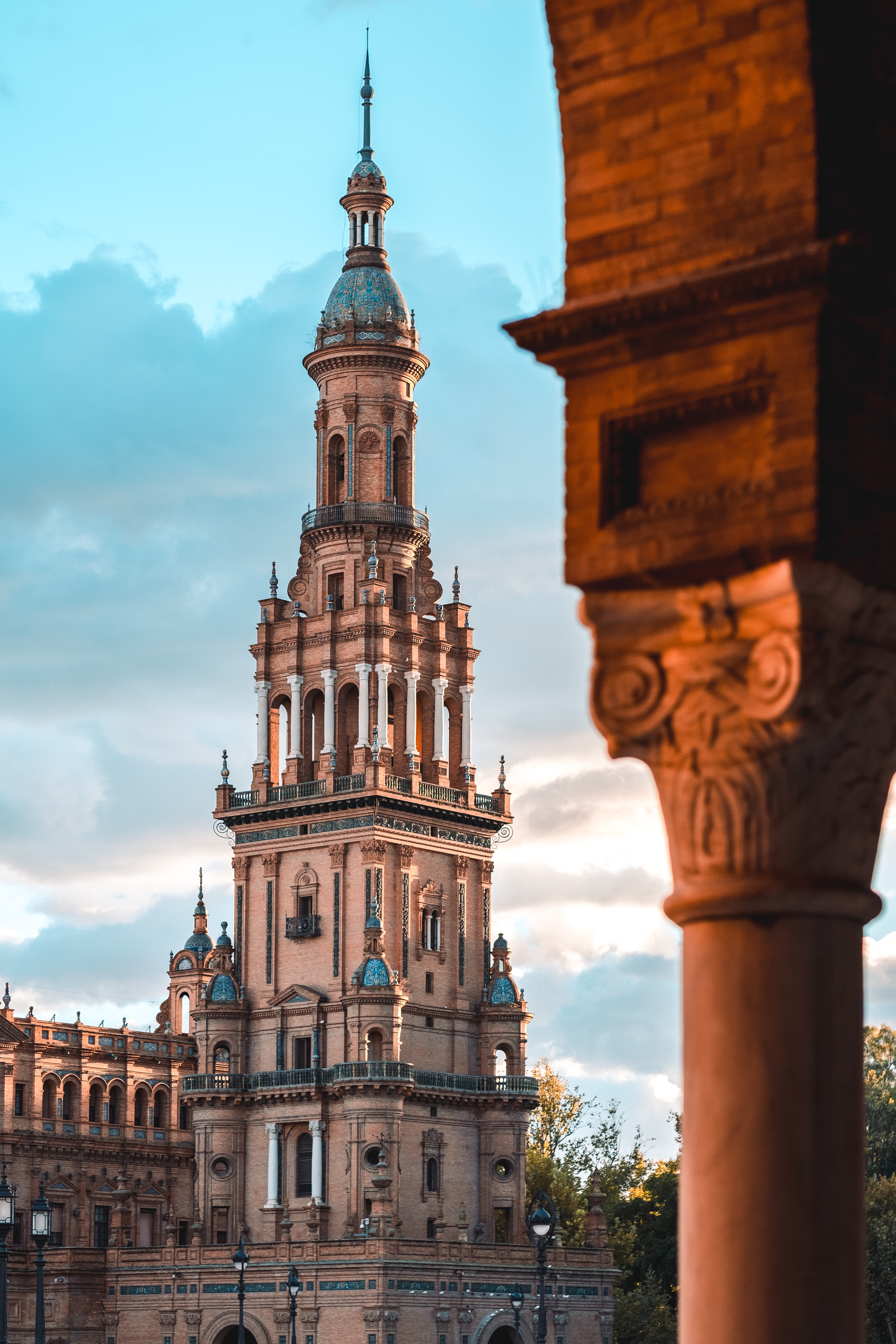
Thrilling Spain Adventure: 10-Night Tour Packages from India
- 8 activities
₹ 1,54,185

Unforgettable Madrid Escape: 10-Night Breathtaking Spain Tour Package
₹ 1,43,018, spectacular spain sojourn: 17-night magnificent packages from india.
- 13 activities
₹ 2,44,402
Related posts, how to reach spain from india – a great getaway, spain visa for indians-a detailed guide on the process to obtain one, 9 top things to do in ávila, spain in 2024, 10 best & most famous festivals in europe to experience in 2024, top 9 best things to do in spain 2024, where to go in may – best places across the world | updated 2024, 8 best things to see and do in girona spain in 2024, 7 christmas secrets from 7 countries, spain in august- an elaborate guide to get the best of your spanish holiday, 10 days in spain: an ideal spain itinerary, a spanish shopping tale – 9 top places to shop in spain, 10 best souvenirs to bring back from spain.
Book a vacation completely online
Our community is growing fast
Sign up for exclusive PYT Club membership and access jaw-dropping deals before the rest of the world!
- Signup with Email
- Facebook community
- Telegram Community

Access exciting travel deals at best prices
- New Zealand
- South East Asia
- United Kingdom
- United States
- Switzerland
- Travelogues
- Travel News
- Guest Posts
- Write for us
Spain in March
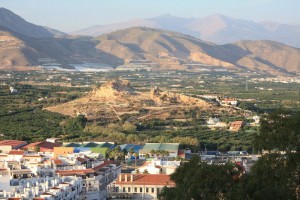
- Las Fallas in Valencia is definitely the biggest Spanish festival in March. Literally translated to mean ‘the fires’ in Valenciano – Las Fallas is a massive festival in Valencia , celebrated with bonfires all over the city. Huge statues made of cardboard, wood, papier-mâché are created, usually in the form of human or cartoon figures. They are paraded throughout town, and on the last night of Las Fallas, they are then set on fire.
- Jerez Flamenco Festival is another event not to be missed. Held throughout the month of March, flamenco performances put up by both veteran artistes and newcomers take place in the town of Jerez de la Frontera. The festival is a spectacular show that displays the cultural arts of Jerez, so be sure to join in if you’re around the area in March.
- Group Enquiry? NEW
- Spain in March
Things to Do in Spain in March
Quick navigation, essential information, weather conditions of spain in march.
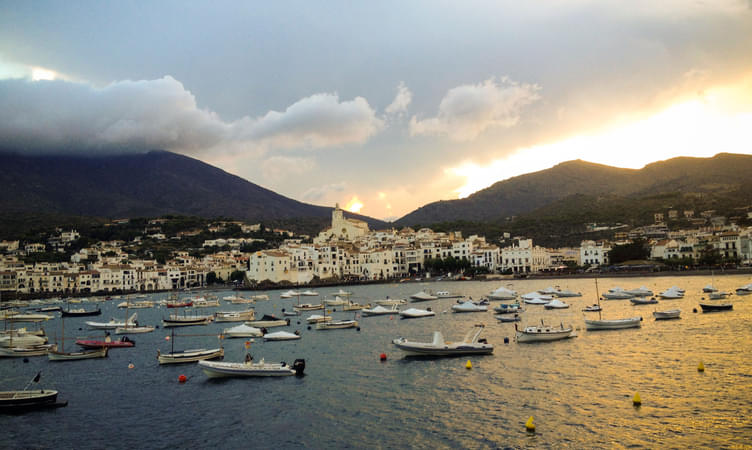
Best of United Kingdom
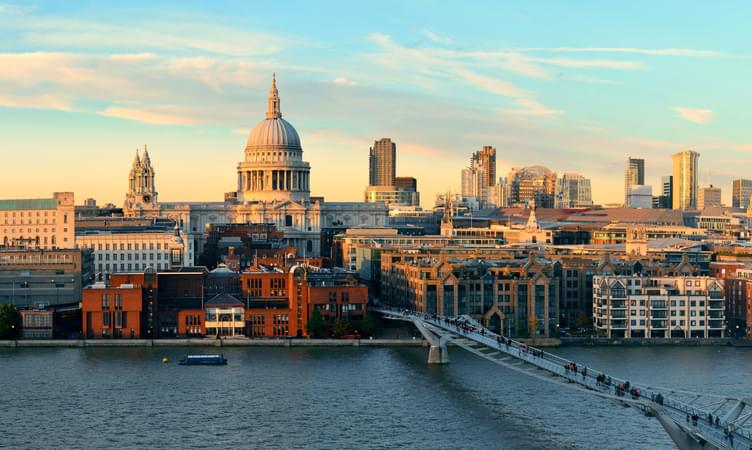
What to Pack for Spain Trip
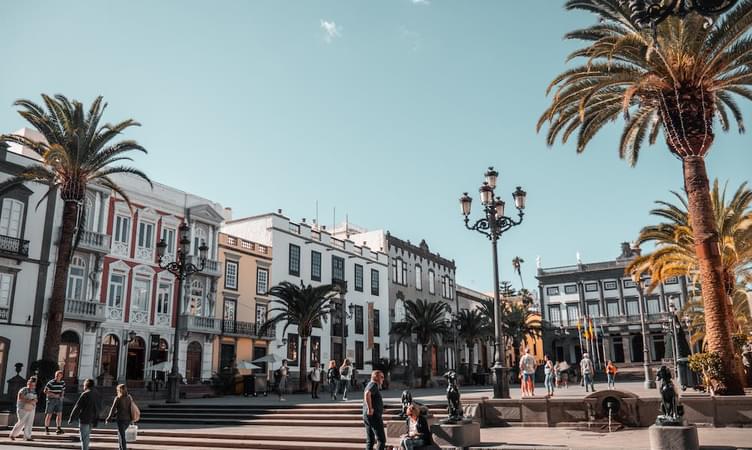
Best of Greece

Things to do in Spain in March
Experience semana santa in seville.

- Experience the profound spirituality and artistic grandeur of Semana Santa, one of Seville's most iconic religious festivals.
- As you wander through the labyrinthine streets, marvel at breathtaking floats adorned with Baroque sculptures of the Virgin Mary and Jesus, which locals have spent months meticulously preparing.
- Capture the festival's unique blend of solemnity and celebration; bars and eateries are buzzing with families enjoying traditional Spanish fare.
- If you're considering what to do in Spain in March, missing Semana Santa in Seville would be a cultural oversight you'll regret.

Best of Iceland

Ski in the Pyrenees

- Few experiences match the thrill of skiing in the Pyrenees, especially in March when the snow conditions are ideal yet the slopes are less crowded.
- Avid adventurers can engage in snowboarding and snowshoeing, alternative winter activities that are just as exhilarating.
- March skiing offers the added benefit of vibrant local festivals celebrating the end of winter, adding a cultural layer to your trip.
- Among the top things to do in Spain in March, this activity offers a perfect balance of outdoor thrill and cultural immersion.

Best of Switzerland

Taste Tapas in San Sebastian

- San Sebastian, a culinary haven, especially shines in March with its prized pintxos bars, or bars that are known for their traditional as well as avant-garde tapas.
- Enjoying tapas in this Basque city is one of the standout activities to do in Spain in March.
- One cannot overlook the artistry behind each tapas dish; many are culinary masterpieces, often served atop a slice of rustic bread, showcasing local ingredients like Iberico ham and Idiazabal cheese.
- Don't miss the 'Gilda,' a classic pintxo made of anchovy, olive, and guindilla pepper; it's considered a Basque 'miniature work of art.'
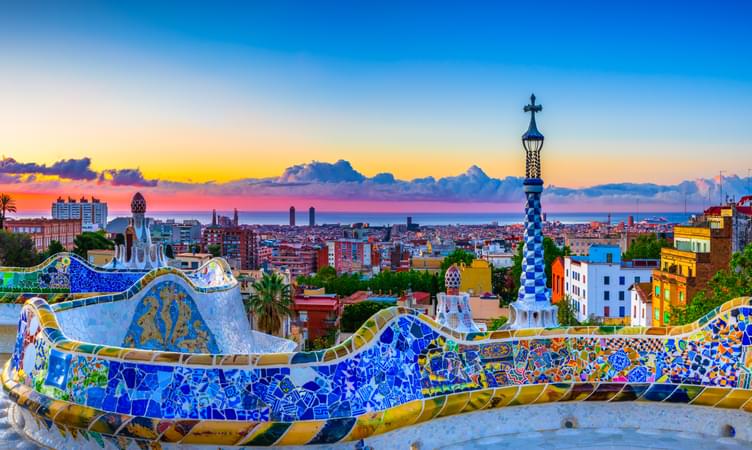
Best of Barcelona

Enjoy the Almond Blossom in Mallorca

- Mallorca's almond blossom season in March offers a visual spectacle, transforming the island into a dreamy pink and white paradise.
- While visiting, you'll find that local photographers and artists are drawn to the orchards, capturing the ethereal beauty of these blossoming trees.
- Don't miss the local fairs and markets where vendors often sell almond-related products like marzipan, cakes, and cosmetics.
- It's the best of both worlds; this activity pairs the serene beauty of nature with rich, local culture, becoming one of the must-do activities in Spain in March.

Best of Paris

Take a trip to Andalusia

- Embarking on an Andalusian adventure is one of the best things to do in Spain in March, as it lets you dodge the summer crowds while basking in mild temperatures, creating an intimate travel experience.
- Begin your journey at the Alhambra in Granada, where you can traverse palatial halls and lush gardens, capturing the Moorish history with each step.
- Next, find your way to a local flamenco tablao in Seville, where you can get introduced to Andalusia’s cultural heartbeat.
- Set aside an evening for a gastronomic escapade; sample Andalusian tapas like salmorejo and grilled sardines, paired with local wines to tantalise your taste buds.
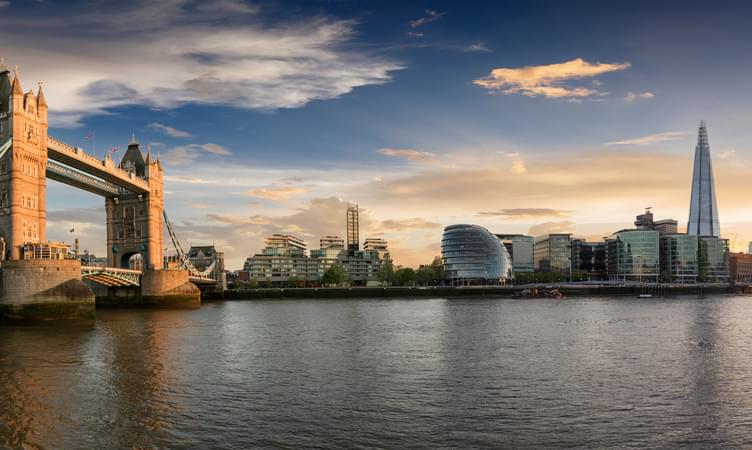
Best of London

Discover the Canary Islands
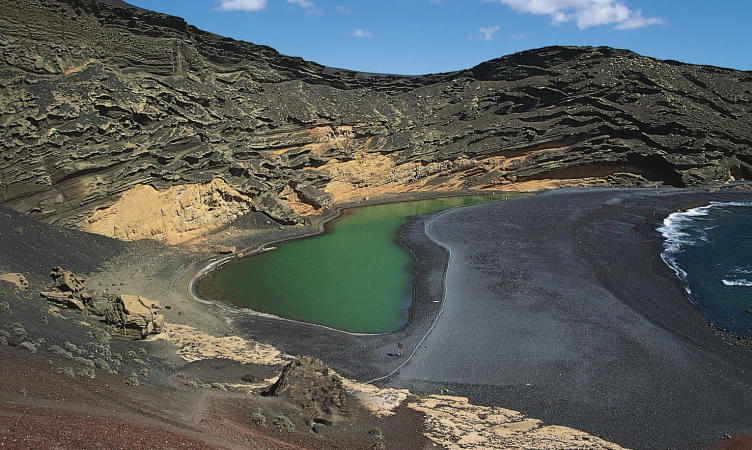
- Sun-kissed beaches, less crowd, and pleasant temperatures make the Canary Islands a go-to destination for unique activities to do in Spain in March.
- Your first pitstop should be Tenerife's Teide National Park, boasting Spain's highest peak and a moon-like landscape that's a playground for trekkers and nature photographers alike.
- Don't miss the Carnival of Santa Cruz, held in March, a dazzling spectacle of costumes and dance, immersing you in Canarian culture.
- For ocean lovers, Gran Canaria offers scuba diving to explore vibrant marine life, making the experience both adrenaline-pumping and educational.
- Culminate your journey with a Canarian culinary fiesta; indulge in local dishes like 'papas arribadas and fresh seafood, offering an authentic taste of island life.
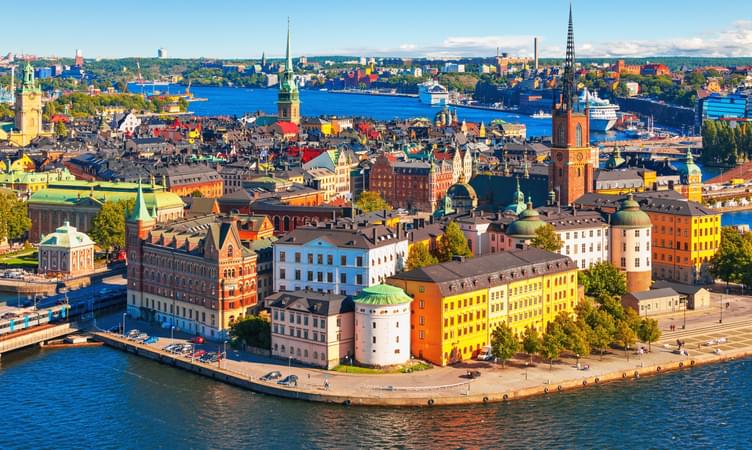
Best of Sweden

Hike in Picos de Europa

- Hiking Picos de Europa in northern Spain offers an unparalleled experience, especially ideal when considering outdoor adventures in Spain in March.
- Escape the crowd as March still evades peak tourist season, giving you exclusive vistas of snow-capped peaks and emerald-green valleys.
- You'll find trails suitable for all skill levels, from the Cares Gorge for beginners to the strenuous ascent to Torre de Cerredo for seasoned hikers.
- Enjoy bird watching opportunities; March brings an array of migratory birds like the Griffon Vulture and the Golden Eagle back to the mountains.
- Don't forget to carry a camera to capture the ethereal Fuente Dé cable car ride, a breathtaking experience elevating you over 753 metres in under 4 minutes.
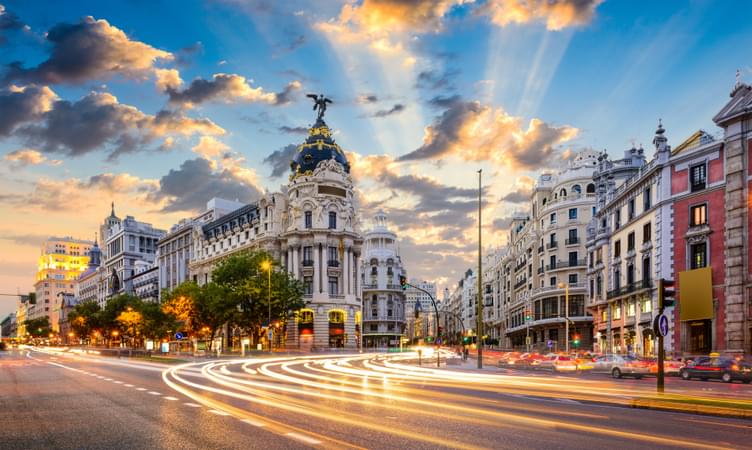
Best of Madrid

Visit Park Güell in Barcelona

- A visit to Park Güell in Barcelona stands as a vivid highlight among the things to do in Spain in March, offering both culture and stunning landscapes.
- March’s mild weather allows you to comfortably roam the iconic Gaudi-designed terraces and sculptures, avoiding the harsh summer crowds.
- Inhale the scent of early spring blooms that accentuate the park’s intricate designs, elevating your sense of wonder in this UNESCO World Heritage site.
- Witness breathtaking panoramic views of Barcelona, heightened by the crisp March air, ideal for photography.
- Delight in authentic Spanish guitar performances often staged within the park, creating a magical, localised experience.

Best of France

Spain in March: Explore the Prado Museum

- A visit to the Prado Museum stands out as one of the intellectual and culturally enriching things to do in Spain in March.
- March's mild temperatures make the walk along the museum's historic Paseo del Prado exceptionally pleasant, adding a natural touch to your art expedition.
- You'll be captivated by the Spanish Golden Age section, showcasing works from Velázquez and Goya, masters who have influenced generations of artists.
- A lesser crowd in March ensures you can savour El Greco's mystical spirituality and Rubens' vivacious forms without much interruption.

Best of Mykonos

Wine tasting in La Rioja

- Elevate your senses with wine tasting in La Rioja, a must-experience indulgence among the things to do in Spain in March.
- March’s budding vineyards provide a picturesque backdrop, ideal for photo opportunities and making your wine journey even more memorable.
- Benefit from the expertise of sommeliers who guide you through reds and whites, helping you detect nuanced flavours and distinct terroirs unique to La Rioja.
- Discover the process of winemaking from grape to glass, as the offseason allows for more in-depth, intimate tours.
- Engage in wine-paired local cuisine, featuring seasonal ingredients that perfectly complement your chosen vintage.
People Also Ask About Spain
What are the best activities to do in spain with kids.
- Splashing Around in Siam Park, Tenerife: If water adventures call out to your family, spending a day at Siam Park in Tenerife is one of the top things to do in Spain in March. Acclaimed as one of the world's top water parks, it offers everything from exhilarating water slides to a tranquil floating river. Kids will be delighted by the numerous splash zones and wave pools, ensuring a day full of aquatic fun.
- Exploring El Retiro Park, Madrid: In the heart of Madrid, El Retiro Park acts as an urban oasis perfect for families. You can rent paddle boats on Retiro Pond or enjoy an afternoon puppet show. With dedicated play areas and an abundance of green spaces, it’s the ideal location for a picnic or a leisurely day out in nature.
- Strolling Down La Rambla, Barcelona: When visiting Spain in March with your family, take a walk down La Rambla in Barcelona, which is like entering a world of street performances and marketplaces. Captivating human statues, enticing food stalls, and engaging street artists make for a fun-filled afternoon. Kids can learn about local culture and try authentic Spanish treats all in one go.
Is March a good time to visit Spain?
What is special about spain, how to reach spain.
- By Air: The most straightforward way to get to Spain is by air. Major international airports like Adolfo Suárez Madrid–Barajas Airport in Madrid and El Prat Airport in Barcelona have flights from a multitude of global cities.
- By Train: Spain's extensive rail network offers another excellent entry point, with Eurostar and Renfe services connecting key cities like Madrid, Barcelona, and Valencia to other European capitals.
- By Sea: For a different kind of journey, consider taking a ferry. Services run from Italy's Genoa and Civitavecchia ports to Barcelona, while ferries from Tangier in Morocco bring you to multiple ports along Spain's southern coast.
How many days are enough to explore Spain?

Spain Top Attractions
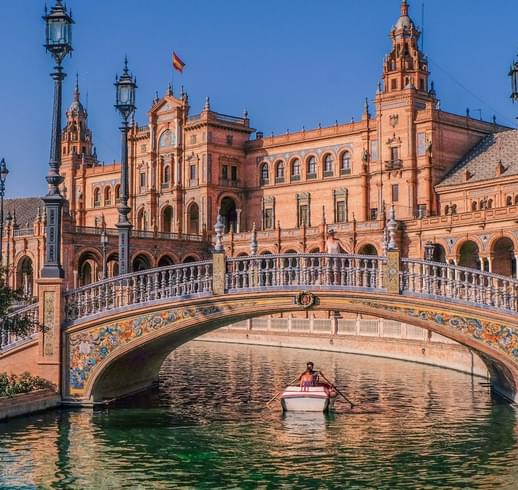
The Alhambra palace, also known as "The Red Palace", is a fortress complex situated in the city center of Granada, Spain. The word "Alhambra" stands for red which has been driven from the Tapia's reddish color used on the palace's outer walls.The monument's building is one of the finest examples of Islamic architecture and a well-preserved palace in the Islamic world. The palace's construction was completed chiefly between 1238 to 1558 during the rule of Ibn al-Aḥmar.Formerly a citadel, Alhambra palace hosts quite an interesting story that you get to explore on your trip to this historical place. The palace is located surrounded by natural beauty, offering a panoramic view to all visitors.It is constructed on a plateau that overlooks the Albayzin Granada's quarter. Alhambra was once the home of all Moorish Kings; it had now been transformed into a famous palace visited by thousands of history buffs all around the year.As you walk by the palace, get in awe of all the vibrant flowers and massive fountains all around. On your tour of Alhambra, observe its intricate architectural design and details, making it the most sought-after destination in Alhambra.You can Checkout: Alhambra Tickets Online
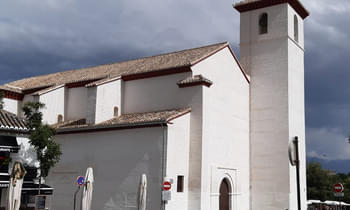
The San Nícolas Church was built on the site of a former mosque, of which only the cistern remains. Together with the church of San Cristóbal, it is the oldest of the Mudejar churches in Granada which was destroyed during the civil war and was restored very recently. San Nícolas Church is one of the most important religious buildings in Granada and is a fine example of Gothic architecture.One of the most notable features of San Nícolas Church is its large nave, which is illuminated by a series of stained glass windows. The nave is flanked by two rows of columns that support a high barrel vault ceiling. At the far end of the nave is the choir loft, which houses a large organ.The church also contains a number of tombs and monuments, including those of Fernando de Valor, Juan de Padilla, and Francisco Pacheco. Visitors can admire the stunning architecture, enjoy the peaceful atmosphere, and learn about the history of this important religious site.If you are planning a trip to Granada, then Checkout: Granada Tour Packages

The Cathedral of the Incarnation popularly known as Catedral de Granada is a famous Roman Catholic Church in the heart of Granada city. Unlike many Cathedrals in Granada, the construction of this structure did not start until the 16th century. Whereas its foundation was laid somewhere between 1523 to 1708 as this church is one of the prime examples of Baroque architecture, Renaissance architecture, and Plateresque architecture.Some prime architects involved in its construction include Diego Siloe, Felipe Bigarny, Enrique de Egas and Juan Gil de Hontañón. The facade of Catedral de Granada was completely different from the general standards of the Baroque architecture style.Alonso Cano, a famous architect in Catedral de Granada, was more sympathetic towards the Classic style. He decided to follow the same architectural style as the rest of the Catedral. The place features a rectangular base of its five naves. All these are staggered in height, with the central one being the largest.There are two towers located at the foot of the Cathedral. The facade consists of three pillars with semicircular arches, the same as San Andrés de Mantua of Leon Battista Alberti. The facade also features a bell tower which offers an incredible view to all tourists.Click Here to Book: Catedral de Granada Tickets
More Spain Attractions
Spain travel guides.

Spain Reviews

Popular Nearby Places Around Spain
More things to do in spain, more on spain tourism, popular related destinations.

Best Domestic Packages
Best international packages, domestic honeymoon packages, international honeymoon packages, places to visit in india, international places to visit, things to do in india, international things to do, popular on thrillophilia.
- We assure the privacy of your contact data.
- This data will only be used by our team to contact you and no other purposes.
Your enquiry has been received successfully. Our destination expert will reach out to you soon!
- Greek Islands
- South Africa
- Philippines
- South Korea
- French Polynesia
- Dominican Republic
- Saint Vincent & the Grenadines
- Czech Republic
- Ras Al Khaimah
- Saudi Arabia
- A-Z Destinations & Map
- Escorted Group Tours
- Escorted Tours
- F1 Packages
- Family Holidays
- Golf Holidays
- Multi Centre Holidays
- Rail Holidays
- Short Breaks
- Solo Holidays
- Ultra Luxury Holidays
- Exclusive Deals
Spain in March 2024: A Guide For Everything To Know!
Social share:.

March in Spain remains one of the key destinations to visit, owing to the diverse colours and festivities it has on offer for visitors. As winter bids adiós, spring breathes life into the landscapes, painting them with blossoming flowers and lush greenery. The streets come alive with lively fiestas, where locals and travellers unite in joyous celebration. One such spectacle is Las Fallas in Valencia, a riotous affair of towering sculptures, fireworks, and music, honouring St. Joseph. In Seville, the air is filled with the intoxicating aroma of orange blossoms during the Feria de Abril, a flamboyant flamenco-filled extravaganza.
Meanwhile, in Barcelona, the streets pulsate with the rhythm of drums during the Mercè Festival, an electrifying blend of Catalan traditions and modern artistry. Whether you’re marvelling at the intricate details of fallas, swirling in flamenco rhythms, or savouring delectable tapas, Spain in March promises an unforgettable sensory journey. This blog is going to be a great help for you as we have mentioned all the important points to help you plan your trip in a better way.
Is March a good time to go to Spain?

March is an enchanting time to explore Spain. As winter wanes, the country emerges into spring, offering mild temperatures and blooming landscapes. The tourist crowds are still sparse, allowing for a more intimate experience of Spain’s rich culture and heritage. Whether wandering through historic streets adorned with blossoms or savouring delicious cuisine in quaint cafes, March provides a perfect balance of pleasant weather and authentic Spanish charm. Additionally, March hosts vibrant festivals like Las Fallas in Valencia and the Feria de Abril in Seville, offering unique insights into local traditions and customs. With fewer tourists and a lively atmosphere, March beckons travellers to discover the beauty and warmth of Spain without the summer hustle and bustle.
What to Expect from the Weather in Spain in March 2024?
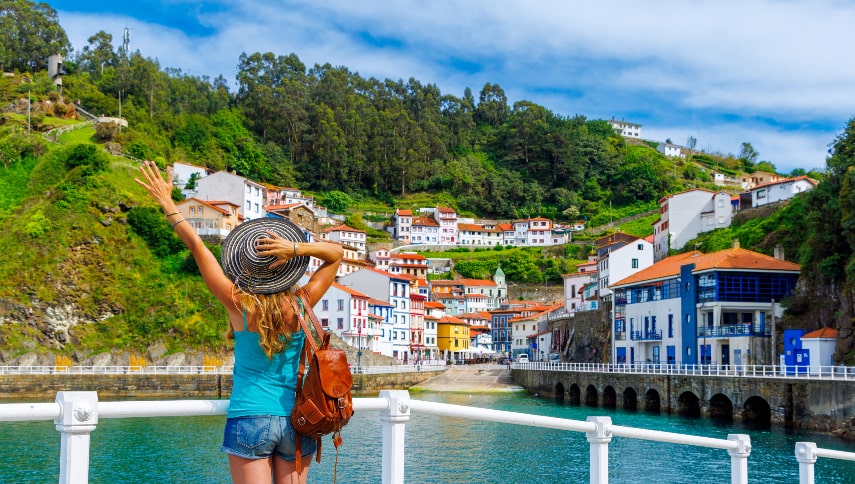
Expect pleasant weather in Spain during March 2024. Temperatures vary across regions, with coastal areas enjoying milder conditions. In southern regions like Andalusia, anticipate daytime highs averaging around 18-22°C, ideal for outdoor activities and sightseeing. In central Spain, temperatures range from 12-16°C, while northern regions may experience slightly cooler weather, averaging around 10-14°C. Rainfall tends to decrease compared to previous months, but occasional showers are still possible, especially in northern areas and mountainous regions.
On average, expect around 40-60 mm of rainfall throughout the month. Overall, March offers a pleasant transition from winter to spring, with comfortable temperatures and the occasional refreshing rain shower adding to the allure of Spain’s diverse landscapes.
What to Wear for the Weather in Spain in March 2024?
Dress like a stylish local as you embrace Spain’s March weather in 2024. Layering is key for the varying temperatures across regions. Opt for light, breathable fabrics like cotton and linen to stay cool during sunny afternoons. Pack a mix of long-sleeved shirts, lightweight sweaters, and a versatile jacket for chilly mornings and evenings. Pair these with comfortable pants or skirts and stylish yet practical footwear for exploring cobblestone streets or hiking scenic trails. Don’t forget a wide-brimmed hat and sunglasses to shield yourself from the bright Spanish sun. And of course, accessorise with a colourful scarf or statement jewellery for that extra touch of flair. With a well-curated wardrobe, you’ll be ready to savour every moment of your Spanish adventure in style.
Visitor Arrivals: Is Spain Crowded During March?
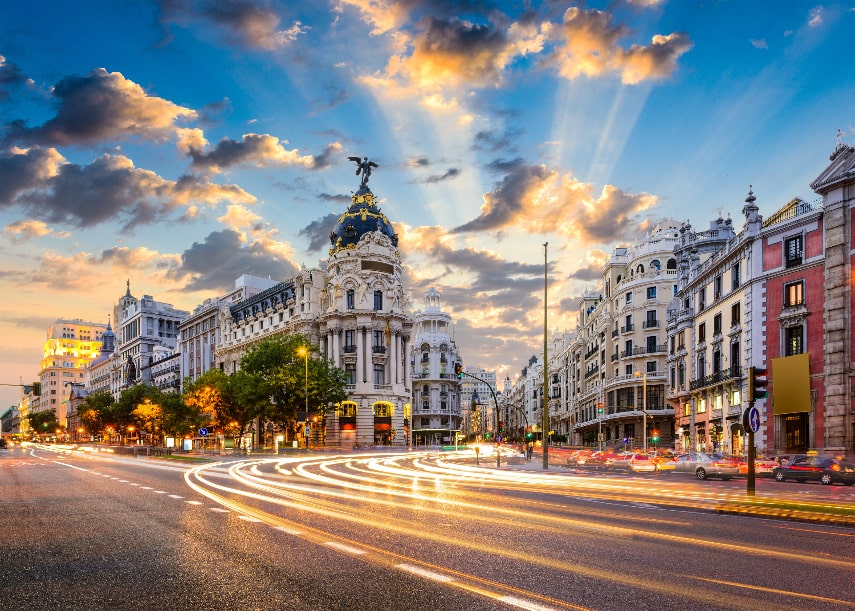
March in Spain strikes a delightful balance between a lively ambience and manageable crowds. While not as bustling as peak summer months, you’ll still find a vibrant energy in popular tourist destinations. Expect a pleasant buzz of activity in cities like Barcelona, Madrid, and Seville, where locals and visitors mingle amidst charming plazas and cultural landmarks. Coastal areas may see a slight uptick in visitors, particularly during Semana Santa (Holy Week) celebrations.
However, compared to the summer rush, March offers a more relaxed atmosphere, allowing you to explore attractions with greater ease and enjoy authentic experiences without feeling overwhelmed by crowds. Embrace the spirited ambience of Spain in March, where you’ll find the perfect blend of liveliness and tranquillity.
Average Costs of a Trip to Spain in March

Embarking on a Spanish adventure in March can be both affordable and rewarding. When planning your trip, consider that airfare prices from the UK to Spain can vary depending on factors like departure city and booking time. On average, expect to spend around £100 to £200 for a return flight per person. Accommodation costs also vary widely depending on location, amenities, and the type of lodging you prefer.
Budget travellers can find hostel beds or budget hotel rooms for as low as £20 to £50 per night, while mid-range hotels typically range from £60 to £120 per night. Luxury resorts and boutique hotels may cost upwards of £150 to £300 per night. Transfers within Spain, whether by public transportation, taxi, or rental car, add to the overall expenses. Budget around £20 to £50 per day for transportation costs, depending on your itinerary and mode of travel.
Overall, a week-long trip to Spain in March could cost anywhere from £500 to £1500 per person, including flights, accommodation, and transfers. By planning, being flexible with travel dates, and exploring budget-friendly options, you can enjoy a memorable Spanish getaway without breaking the bank.
Things to Do in Spain in March

Immerse yourself in the rich tapestry of experiences Spain offers in March. From vibrant cities to quaint villages, the country beckons with a plethora of cultural delights waiting to be discovered. Wander through historic streets lined with architectural marvels, savour the tantalising flavours of Spanish cuisine at bustling markets and cosy taverns, or simply soak up the warm sunshine on picturesque beaches. Whether you’re exploring ancient ruins, hiking scenic trails, or delving into the pulsating nightlife, Spain in March promises an unforgettable journey filled with endless possibilities. Embrace the rhythm of Spanish life as you uncover the hidden gems and timeless treasures that await around every corner.
Best Spain foods to try in March

During March, indulge in Spain’s culinary wonders, featuring fresh ingredients and seasonal specialities that tantalise the taste buds. Begin your gastronomic journey with hearty stews like Cocido Madrileño, a comforting dish blending chickpeas, meats, and vegetables, perfect for warming up chilly evenings. Sample Bacalao al Pil Pil, a delectable Basque dish of cod cooked in olive oil, garlic, and chilli, boasting rich flavours that epitomise Spanish coastal cuisine.
Don’t miss the vibrant flavours of Gazpacho, a refreshing Andalusian soup made from ripe tomatoes, peppers, and cucumbers, offering a delightful taste of spring. And of course, indulge in the timeless classic of Churros con Chocolate, crispy fried dough dipped in thick, velvety chocolate sauce, a sweet treat that pairs perfectly with the crisp March air.
Spain in March Travel Tips to Remember
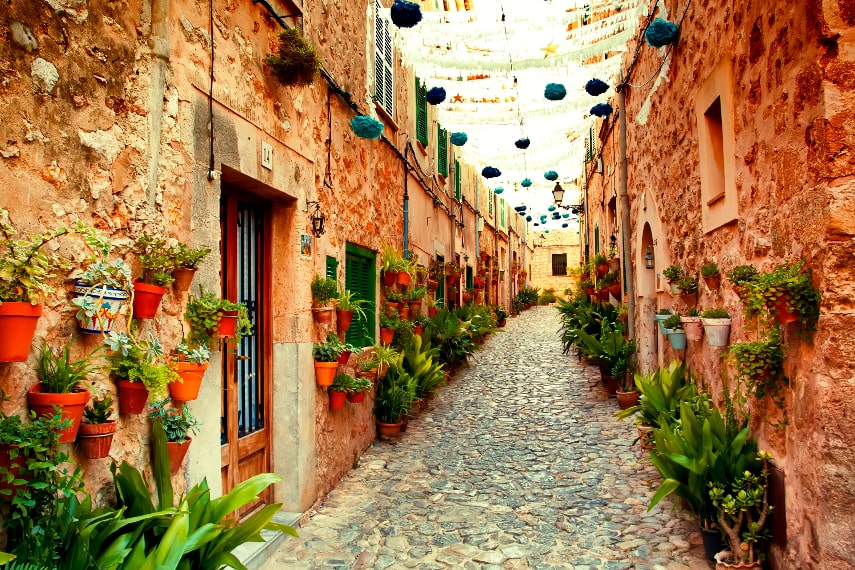
While you plan your trip to Spain during the third month of the year, there are some things that you need to keep in mind. Here are some of the most important tips that you should know!
- Be prepared for fluctuating weather conditions across regions. While southern Spain tends to be warmer, northern areas may still experience cooler temperatures and occasional rain showers. Pack layers and a waterproof jacket to stay comfortable.
- Keep in mind that Semana Santa (Holy Week) falls in March or April, attracting crowds to cities like Seville and Granada. Plan accommodation and transportation if visiting during this period.
- Research local festivals and events happening during your visit. March hosts various celebrations such as Las Fallas in Valencia and the Feria de Abril in Seville, offering unique cultural experiences.
- Consider that March may coincide with spring break holidays in some countries, leading to increased tourist numbers in popular destinations. Book accommodations and activities ahead of time to avoid last-minute hassles.
- Spain observes daylight saving time, typically starting at the end of March. Adjust your plans accordingly to make the most of daylight hours.
- Familiarise yourself with the siesta tradition, especially in smaller towns and rural areas, where shops and businesses may close for a few hours in the afternoon. Plan your activities around these breaks.
- In most places, tap water in Spain is safe to drink. Carry a refillable water bottle to stay hydrated while exploring, saving money, and reducing plastic waste.
- Respect local customs and traditions, such as dressing modestly when visiting religious sites and being mindful of meal times and tipping practices. Enjoy the laid-back Spanish lifestyle and immerse yourself in the local culture.
Read Also: Best time to visit Spain | Spain in April | Italy in March
FAQs for Spain in March
In March, the warmest part of Spain is typically the southern region, particularly Andalusia. Cities like Seville, Malaga, and Granada experience relatively mild winters and early springs, boasting daytime temperatures ranging from 18-22°C (64-72°F). The Mediterranean climate of Andalusia brings sunny days and minimal rainfall, creating ideal conditions for outdoor exploration and leisurely strolls through historic streets or along scenic coastlines. With its enchanting blend of Moorish architecture, vibrant culture, and delicious cuisine, Andalusia offers a welcoming retreat from the lingering chill of winter, making it a popular destination for travellers seeking warmth and sunshine in March.
Beaches in Spain start to warm up but may not reach peak summer temperatures. Coastal areas, particularly in the south, like Andalusia and the Costa del Sol, experience milder weather compared to the interior regions. Daytime temperatures typically range from 16-20°C (61-68°F), offering pleasant conditions for sunbathing and coastal walks. While the water may still be a bit chilly for swimming, the sunny weather and relatively mild temperatures make beach visits enjoyable. Additionally, with fewer crowds than in peak summer months, March provides a tranquil opportunity to soak up the coastal scenery and relax by the shimmering Mediterranean Sea.

Recommended Posts

Where is Hot in May in Europe? The 10 Best Places To Go
As spring blossoms across Europe, May brings a delightful warmth that entices travellers from the UK. Imagine strolling through charming...

April Holiday Destinations: The 15 Best Places to go
Escape the lingering chill of spring in the UK and embrace the vibrant hues of April in destinations where blossoms...

August Holiday Destinations: The 14 Best Places to Go
One can discover the tropical paradise adorned with vibrant coral reefs, pristine beaches, and lush rainforests throughout August. There is...
Leave a Comment Cancel reply
Your email address will not be published. Required fields are marked *
Save my name, email, and website in this browser for the next time I comment.
- Affordable Luxury Travel Recommends
- Thailand Travel Guide
- Travel News
UK Public Bank Holidays & School Holidays 2024, 2025 & 2026
Where is hot in april in europe the 10 best places to go, july holiday destinations: the 12 best places to go, december holiday destinations: the 12 best places to go, may holiday destinations: 12 best places to go.
WHY BOOK WITH US
PERSONALIZED ITINERARIES
PRICE GUARANTEE
5-STAR REVIEWS
TRUST & EXPERIENCE
Subscribe to our newsletters to see the latest deals

Affordable Luxury Travel, based in London’s Fitzrovia, is the latest addition to the successful and long established Moresand Ltd.
IMPORTANT LINKS

QUICK LINKS

Our Key Industry Partners

© 2024 Affordable Luxury Travel. All rights reserved. A trading division of Moresand Ltd
Welcome Back!
Login to your account below
Remember Me
Retrieve your password
Please enter your username or email address to reset your password.

Weather in Spain in March (2025): The Ultimate Guide
The weather in Spain in March is like opening a surprise gift – you never quite know what you’re going to get. One day you might need a scarf and a warm jacket, and the next, just a light sweater will do.
This unpredictability is part of the charm, but it can make it a bit of a struggle to figure out where to go or what to pack when visiting this month
As someone living in Spain, I’ve experienced March’s unpredictable weather first-hand. This means that whether you’re planning to explore Madrid’s vibrant art scene or soak up the coastal beauty of Malaga, I’ve got some insights that will help.
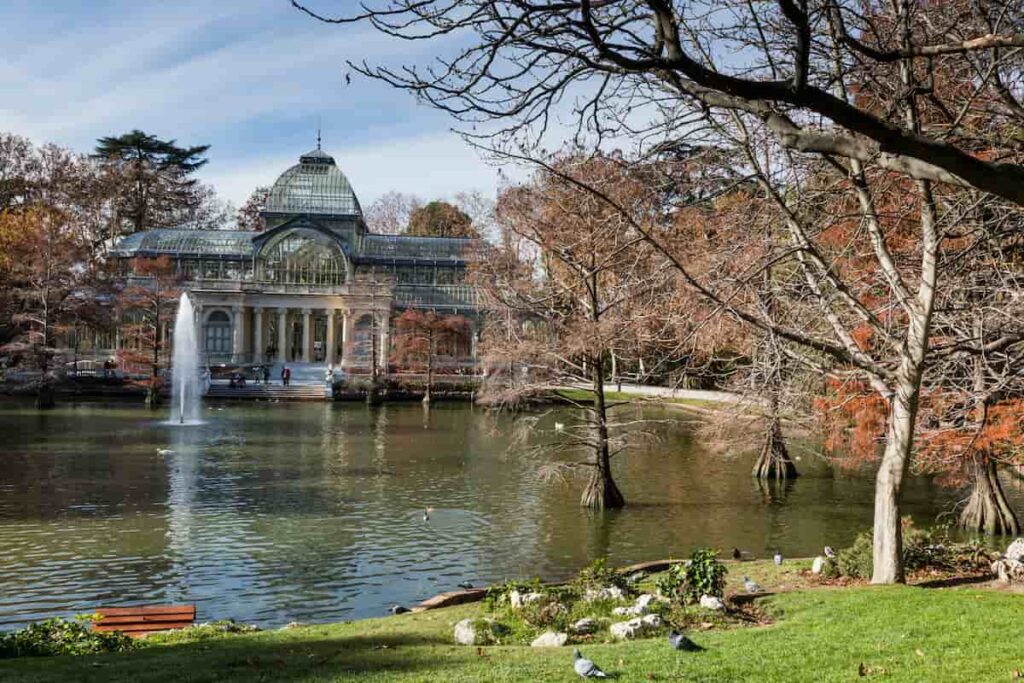
Table of Contents
Weather in Spain in March
In March, Spain’s climate varies significantly from north to south. You’ll experience warmer temperatures and abundant sunshine in the south, particularly in Andalucia. The north, however, can be quite cold, with places like Basque Country receiving more rainfall.
In southern Spain, daytime temperatures in cities like Malaga can be quite pleasant, averaging around 20°C (68°F). Expect lots of sunshine, with moderate weather conditions that are ideal for exploring or enjoying the outdoors.
It’s a different story in the north, as areas such as Galicia, Asturias, and the Basque Country often have colder and wetter conditions. The average daytime temperature dips to about 13°C (55°F), while nighttime can see temperatures as low as 5°C (41°F).
Rainfall is also more common in the north compared to the south, with an average of 80ml (3.15 inches) in the northern regions throughout March.
While the weather is generally moderate overall, it’s always wise to check up-to-date climate information closer to your travel date. Pack accordingly, with layers for varied temperatures and waterproof gear if you’re heading north.
Not sure exactly when you’re coming to Spain? If you might be coming slightly earlier, take a look at what the weather is like in Spain in February .
Maybe planning to visit a bit later? Check out the weather in April in Spain to see what you can expect.
How Hot Is Spain in March?
In March, Spain’s temperatures begin to warm up. You’ll find that daytime temperatures are generally pleasant, with averages from 11°C to 17°C (51.8°F to 62.6°F). It’s not uncommon for there to be a few warmer days, particularly in the southern regions, where they can peak around 20°C (68°F).
Spain presents diverse weather conditions across its regions in March. In the northern parts, including cities like Santiago de Compostela, you can expect cooler and wetter conditions. In contrast, the Mediterranean coast typically offers milder and drier weather.

Here’s a quick look at what to expect in different areas:
- Northern Spain (Galicia, Asturias, Cantabria): You’ll see average daytime temperatures of 11°C to 15°C (51.8°F to 59°F), meaning cooler temperatures with more rainfall
- Central Spain (Madrid, Castilla-La Mancha): Here, expect daytime temperatures around 12°C to 17°C (53.6°F to 62.6°F), with less rainfall than the northern region and occasional warm days
- Southern Spain (Andalusia, Costa del Sol): Much warmer around here than the north, with average daytime temperatures ranging from 15°C to 20°C (59°F to 68°F). This means you can expect warmer days with more hours of sunshine
Throughout the country, temperatures dip at night, often by several degrees, so it’s wise to pack layers for your trip. The beginning of March can still see winter-like weather, especially in the interior and northern regions, while the end of the month tends to be noticeably warmer.
You won’t have to worry about extreme temperatures, but do prepare for variability depending on where you’re traveling within the country. Keep in mind that, while it’s generally dry, there’s always a chance for rain, so it might be a good idea to bring a waterproof jacket just in case.
Which Part of Spain Is Warmest in March?
In March, Spain’s warmest region is typically found in the south, especially in Andalucia. Cities like Malaga enjoy a temperate climate, making them an attractive destination in early spring. You’ll find the weather quite pleasant, with temperatures often higher than the rest of the country.
Malaga and the surrounding Costa del Sol boast mild temperatures in March, with averages ranging from 11°C (51.8°F) to 20°C (68°F). While it’s not yet summer, you’re likely to experience plenty of sunshine, a key aspect of this region’s beautiful weather. It’s a perfect escape from the colder northern parts of Europe.
The climate in Andalusia in March can vary, but it’s generally mild with a low chance of rain. The average rainfall during this month is around 82ml (3.2 inches).

This makes Andalusia, particularly its coastal areas, one of the warmest and driest in Spain during March.
Despite the warmer temperatures, it’s wise to bring a mix of clothing suitable for cooler evenings but also lighter wear for the day. The temperate climate provides an opportunity to explore the outdoors comfortably, whether you’re walking along the beaches or visiting historical sites.

What’s your perfect destination for your dream trip to Spain?
Want to discover a city or live your island dreams?
Embrace the food scene or step through the pages of history?
Whatever your travel style, discover the perfect Spanish city to add to your trip here!
Which Part of Spain Is Coldest in March?
The northern regions of Spain typically experience the coldest temperatures in March. You’ll find that areas within the Basque Country, Galicia, and Asturias have lower average temperatures during this time. Climate information reflects chillier nighttime temperatures, which can be particularly crisp in these regions.
In the Basque Country, cities like Bilbao have average March temperatures that can drop to around 6°C (42.8°F) at night. Asturias, with its proximity to the Cantabrian mountains, sees similar cold conditions.
Galicia, while being coastal and thus milder, still has nights where the mercury can fall to approximately 7°C (44.6°F).
These northern areas are also more likely to see rain during March, where the cool Atlantic fronts bring precipitation. When planning your visit, it’s wise to pack accordingly, with warm clothing for the evenings and waterproof gear for the occasional shower.
That said, this part of the country also offers beautiful landscapes and cultural experiences that are worth the brisk weather. Pack layers, and you’ll be ready for the diverse climates of Spain’s northern territories.
Weather in Different Regions of Spain in March
Weather in southern spain in march.
March in Southern Spain signals the onset of spring, bringing milder temperatures and more sunshine. This period is characterized by a noticeable shift from the cooler winter months, offering pleasant conditions for outdoor activities.
- Temperature: The region typically experiences average highs of around 20°C (68°F), with lows dipping to about 10°C (50°F) during the night. This range makes for comfortable days and cooler evenings.
- Average days of rainfall: Expect around 6 days of rainfall in March, though this can vary slightly from year to year.
- Average amount of rainfall: Rainfall averages around 30 mm (1.18 inches), indicating relatively dry conditions with occasional showers.
- Sea temperature: The average sea temperature is about 16°C (61°F), which is still a bit cool for swimming for most people.
- Number of hours of sunlight: Southern Spain enjoys about 7 to 8 hours of sunlight per day in March, with increasing daylight as the month progresses.

Weather in Northern Spain in March
March in Northern Spain is a transitional month, with the last hints of winter weather giving way to the first signs of spring. The region experiences more variability in weather compared to the south.
- Temperature: Average temperatures range from highs of about 15°C (59°F) to lows near 5°C (41°F), making it cooler than the southern regions.
- Average days of rainfall: Rainfall is more frequent in the north, with around 10 to 12 rainy days in March.
- Average amount of rainfall: The region receives about 80 mm (3.15 inches) of rain, reflecting its wetter climate.
- Sea temperature: The sea temperatures are cooler, averaging around 13°C (55°F), which is generally too cold for swimming.
- Number of hours of sunlight: Northern Spain gets approximately 6 to 7 hours of sunlight per day in March, with longer days towards the end of the month.
Weather in Barcelona in March
March in Barcelona marks the transition from the mild winter to a more temperate spring. The city begins to experience warmer days, ideal for exploring its many outdoor attractions.
- Temperature: Average daytime temperatures hover around 17°C (63°F), while nighttime lows average about 9°C (48°F), creating a pleasant climate for both day and night activities.
- Average days of rainfall: Expect approximately 5 days of rain in March, though this can vary.
- Average amount of rainfall: The rainfall averages around 35 mm (1.38 inches), indicating a relatively dry month with occasional showers.
- Sea temperature: The sea temperature averages about 14°C (57°F), which is generally considered too cool for swimming by most people.
- Number of hours of sunlight: Barcelona enjoys around 6 to 7 hours of sunlight per day in March, with the days gradually getting longer as the month progresses.
Weather in the Canary Islands in March
March in the Canary Islands offers a pleasantly warm climate, distinct from the cooler temperatures found in mainland Spain. The islands are known for their year-round mild weather, making them a popular destination in early spring.
- Temperature: Average temperatures range from highs of around 22°C (72°F) to nighttime lows of 16°C (61°F), offering warm and comfortable conditions throughout the day and night.
- Average days of rainfall: Rainfall is infrequent, with about 3 days of rain during the month.
- Average amount of rainfall: The islands receive an average of only about 20 mm (0.79 inches) of rain, highlighting their dry and pleasant climate.
- Sea temperature: The average sea temperature is around 19°C (66°F), which is more inviting for swimming compared to the colder waters off mainland Spain.
- Number of hours of sunlight: The Canary Islands enjoy about 7 to 8 hours of sunlight per day in March, benefiting from their geographical location closer to the equator.

Weather in Mallorca in March
March in Mallorca brings the early signs of spring, with a gradual increase in temperatures and a mix of sunny days and occasional rain. It’s a quieter time on the island, ideal for those who prefer a more peaceful visit.
- Temperature: The average high temperature is around 17°C (63°F), while the lows can drop to about 8°C (46°F) at night. This range offers a mild climate suitable for various outdoor activities.
- Average days of rainfall: March sees about 6 to 8 days of rain, indicating a mix of wet and dry days.
- Average amount of rainfall: The rainfall averages around 40 mm (1.57 inches), suggesting occasional showers interspersed with dry periods.
- Sea temperature: The sea temperature averages about 15°C (59°F), which is typically considered too cool for most people to swim.
- Number of hours of sunlight: Mallorca enjoys roughly 6 to 7 hours of sunlight per day in March, with increasing daylight as spring approaches.
Weather in Ibiza in March
March in Ibiza is characterized by the awakening of spring, with the island shaking off the last of its winter chill. The weather is mild, perfect for exploring the island’s natural beauty without the summer crowds.
- Temperature: Average temperatures in Ibiza during March range from highs of 17°C (63°F) to lows around 9°C (48°F), offering a comfortable climate for outdoor exploration.
- Average days of rainfall: The island typically experiences about 5 to 7 days of rain in March.
- Average amount of rainfall: Ibiza receives an average rainfall of about 35 mm (1.38 inches), leading to a blend of sunny and rainy days.
- Sea temperature: The average sea temperature is around 15°C (59°F), which is generally cool and not ideal for swimming.
- Number of hours of sunlight: Expect about 7 hours of sunlight per day in Ibiza during March, with the days gradually lengthening as the month goes on.
Weather in Madrid in March
March in Madrid is a time of gradual warming, as the city transitions from the cold of winter to the milder temperatures of spring. It’s a period of variable weather, with some days feeling like spring and others retaining a hint of winter chill.
- Temperature: Daytime highs average around 15°C (59°F), while nighttime temperatures can drop to about 5°C (41°F), resulting in chilly evenings.
- Average days of rainfall: Expect about 8 days of rainfall in March, though these are usually light showers.
- Average amount of rainfall: Rainfall averages around 25 mm (0.98 inches), indicating occasional rain amidst mostly dry conditions.
- Number of hours of sunlight: Madrid experiences approximately 6 to 7 hours of sunlight per day in March, with increasing daylight as the month progresses.
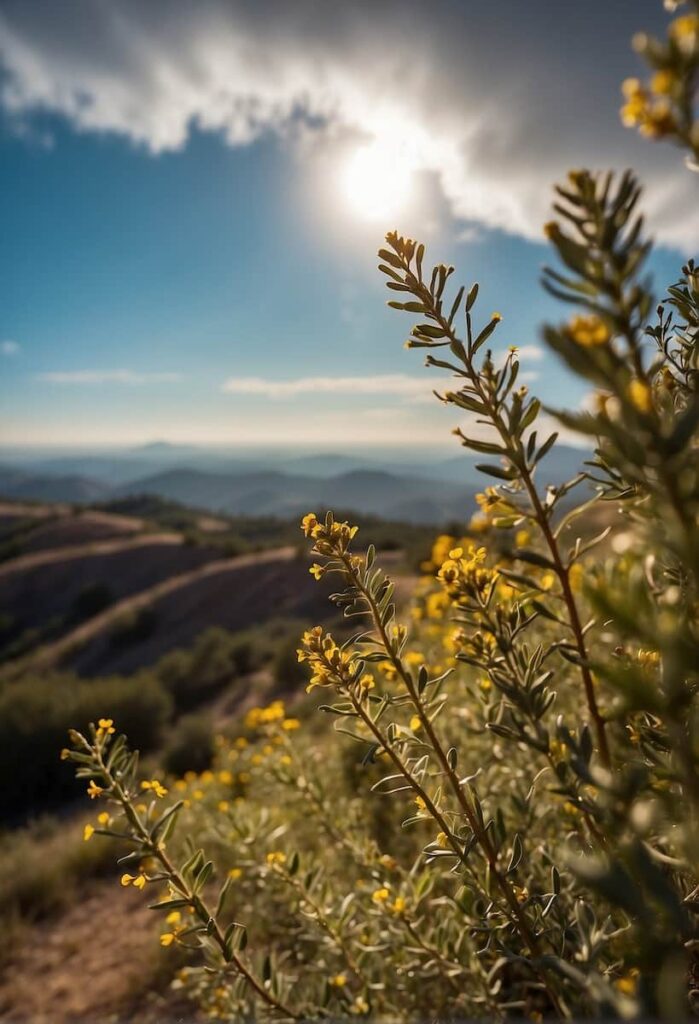
Weather in Tenerife in March
March in Tenerife is characterized by its mild and pleasant climate, making it a popular destination for those seeking a warm escape from colder northern climates. The weather is typically spring-like, with comfortable temperatures throughout the day and night.
- Temperature: Average high temperatures are around 22°C (72°F), with lows at night around 16°C (61°F).
- Average days of rainfall: Rainfall is relatively low with about 3 to 5 rainy days in the month.
- Average amount of rainfall: The island receives an average of about 15 mm (0.59 inches) of rain, ensuring mostly dry and sunny days.
- Sea temperature: The sea temperature averages around 19°C (66°F), which can be refreshing for swimming.
- Number of hours of sunlight: Tenerife enjoys about 7 to 8 hours of sunlight per day in March, benefitting from its equatorial proximity.
Weather in Costa del Sol in March
March in Costa del Sol marks the beginning of milder weather, with the region shaking off the cooler temperatures of winter. This period is ideal for enjoying the region’s outdoor attractions without the peak summer crowds.
- Temperature: Average temperatures range from highs of about 18°C (64°F) to lows of 10°C (50°F), offering a pleasant climate for various activities.
- Average days of rainfall: There are around 5 to 7 rainy days in March, though rainfall is typically light.
- Average amount of rainfall: The region sees an average rainfall of about 40 mm (1.57 inches), indicating some rainy days but generally dry conditions.
- Sea temperature: The average sea temperature is around 16°C (61°F), which is a bit cool for swimming but suitable for other water activities.
- Number of hours of sunlight: Costa del Sol enjoys about 7 hours of sunlight per day in March, with the days gradually getting longer as spring approaches.
Weather in Valencia in March
March in Valencia is one of its biggest months for tourism due to Las Fallas festival – and luckily the weather usually performs, showcasing the onset of spring with its milder temperatures and a mix of sunny and cloudy days. It’s an excellent time for visitors to explore the city and its surroundings.
- Temperature: The average high temperature is around 18°C (64°F), while the lows at night can drop to about 9°C (48°F), offering a comfortable climate for sightseeing.
- Average days of rainfall: Valencia experiences around 5 days of rain in March, though the showers are often brief.
- Average amount of rainfall: The average rainfall is about 35 mm (1.38 inches), ensuring that there are plenty of dry days to enjoy the outdoors.
- Sea temperature: The sea temperature averages about 14°C (57°F), which is generally considered too cool for swimming.
- Number of hours of sunlight: Expect around 7 hours of sunlight per day in Valencia during March, with increasing daylight as the month progresses.

Is March a Good Time to Visit Spain?
March is considered a good month to visit Spain due to mild weather and fewer crowds. You’ll find accommodation more available and often at lower prices than the high season. It’s a time when you can experience Spain alongside locals, with fewer tourists around.
Temperatures generally range from 10°C (50°F) to 17°C (63°F), although it can be cooler in the mornings and evenings and will depend on where you go. It’s usually drier than the winter months, but you might still encounter occasional rain, averaging around 20 ml (0.79 inches) throughout the month.
March is also part of the low tourist season, so you can enjoy less crowded attractions. With fewer tourists, this means you have a better chance of engaging in authentic interactions with locals.
For this reason, visiting Spain in March can also be cost-effective, as you’re likely to find better deals on hotels and rental properties. In addition, some attractions may offer off-peak pricing.
At the same time, in March, you can still enjoy skiing in the mountainous regions of Spain, while along the coast, the warmer days are suitable for leisurely walks and outdoor terrace time.
Which Part of Spain Is Best to Visit in March?
March is an excellent time to visit Spain as the weather starts transitioning from the chilly winter to a milder climate. For those fond of cultural festivities, Seville is a top choice with its lively atmosphere, along with Valencia for the famous Las Fallas festival.
In addition to those, you’ll find that Catalonia also offers a diverse experience – from Barcelona’s modernist landmarks to the serene beaches along the Costa Brava. Temperatures in Barcelona can rise to about 15°C (59°F) in March, making city exploration quite comfortable without the peak summer crowds.
Granada is another excellent spot to visit in March, especially for those who appreciate history and architecture. The Alhambra palace is less crowded, and the daytime temperatures hover around 15°C (59°F), perfect for walking through this UNESCO World Heritage Site.

However, Granada can be cooler than coastal cities and may experience occasional rain showers with average precipitation around 40 ml (1.57 inches).
For a serene experience, Llanos de la Concepción in the Canary Islands boasts spring-like conditions year-round, with March temperatures averaging 18°C (64°F). This less-touristy destination offers a peaceful getaway.
In Alicante , you can enjoy long sunny days with average temperatures of around 18°C (64°F) and minimal rainfall of about 26 ml (1.02 inches), ideal for enjoying the coastline.
Lastly, Ronda , with its dramatic cliffs and historic sites, offers crisp but sunny weather with temperatures averaging 15°C (59°F). The picturesque landscapes are even more accessible with fewer tourists this time of year.
Is it hot in Spain in March?
In March, you’ll find that Spain is not typically hot. The temperatures are mild, with early spring weather setting in. At the same time, you can expect conditions to vary depending on where you are in the country, with some parts being warmer than others.
As some examples of what you can expect when it comes to heat throughout Spain in March:
- Northern Spain : This region tends to be cooler with average temperatures ranging from 9°C (48°F) to 15°C (59°F). Rainfall is quite frequent, so you might encounter wet weather.
- Central Spain : Cities like Madrid have temperatures hovering between 6°C (43°F) and 17°C (63°F). Nights can still be quite chilly, and it’s not unusual to need a warm jacket.
- Southern Spain : Coastal areas and the southern part of Spain, including cities like Seville and Malaga, offer warmer weather. Here, temperatures often range from 11°C (52°F) to 20°C (68°F), which might feel pleasantly warm in the sunshine.
Remember to pack layers, as mornings and evenings will be cooler. Checking the local forecast before your trip is always a good idea because weather can be unpredictable.
Is it cold in Spain in March?
In Spain, March signals the transition from winter to spring. You might experience a mix of cool and mild temperatures throughout the country. Coastal areas are generally warmer, while inland and mountainous regions can be quite chilly, with many still having enough snow for winter activities to be on.
The weather varies greatly across Spain’s diverse regions in March. The north, including cities like Santiago de Compostela and Bilbao, often feels colder and sees more rainfall.
Here’s a quick look at average temperatures in different parts of Spain during March:
- Northern Spain : Average highs around 15°C (59°F) and lows of 6°C (42.8°F)
- Central Spain : Typically experiences highs of 16°C (60.8°F) and lows around 3°C (37.4°F)
- Southern Spain : Warmer, with highs around 20°C (68°F) and lows of 11°C (51.8°F)
- Coastal Spain : Places like Barcelona have average highs of 17°C (62.6°F) and lows around 9°C (48.2°F)
Remember, evenings can be cooler, so it’s wise to pack layers. In terms of precipitation, March isn’t the rainiest month, but you’ll still want to be prepared.
What to Pack When Visiting Spain in March
When visiting Spain in March, you’ll experience a range of weather conditions depending on the region. It’s important to prepare for both warm and cooler weather. Layers are key, as they allow you to adapt to the changing temperatures throughout the day.
Here’s a packing list you want to consider to prepare for the weather in Spain in March:
- Light jackets or sweaters: Evening temperatures can drop, especially in the northern regions.
- Comfortable pants and long-sleeve shirts: Ideal for cooler days with averages around 11-17°C (52-63°F).
- T-shirts and shorts: For warmer afternoons, particularly in the southern parts where it can reach above 20°C (68°F).
- Sunhat and sunglasses: The sun can still be strong.
- Scarf: It can serve as an extra layer and add a touch of style.
- Comfortable walking shoes: Streets can be cobblestoned and uneven.
- Compact umbrella: Occasional showers are common, so better to be ready, just in case.
- Water-resistant jacket: Useful for unexpected drizzles.
- Daypack: For carrying essentials during your explorations.
- Sunscreen: UV levels can be higher than you might expect.
Remember, southern Spain is generally warmer than the northern parts. Check the local weather forecasts as your trip approaches to fine-tune your packing list.
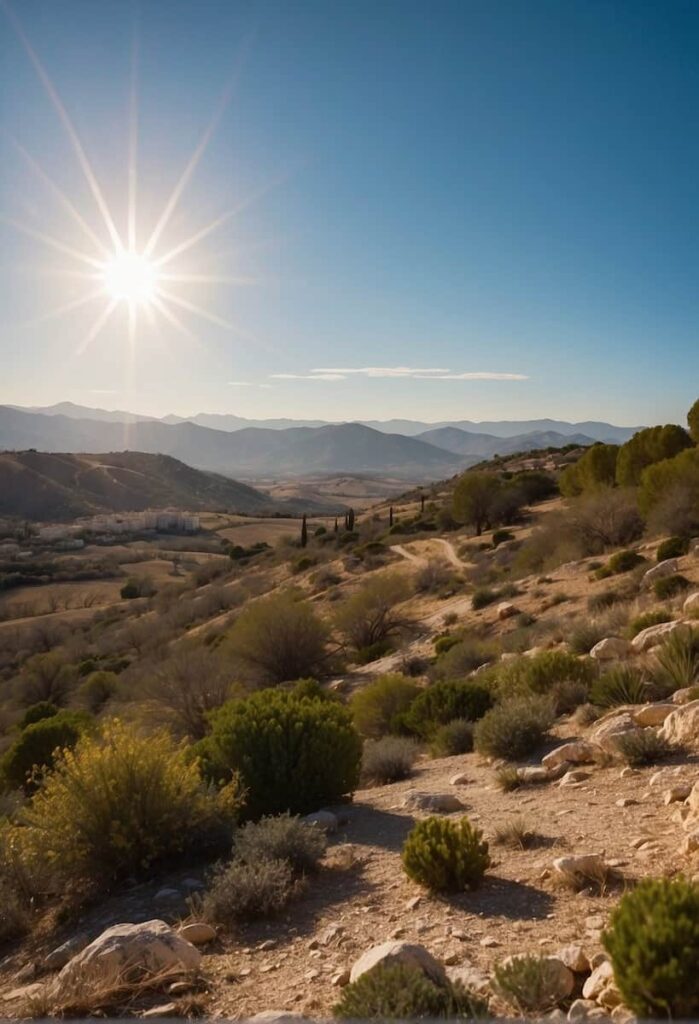
Main events in Spain in March
March in Spain is lively with various regional festivities and national holidays. You’ll find events related to history, art, and gastronomy. It’s a chance to experience traditional and contemporary Spanish culture up close.
- Las Fallas de Valencia : Witness Valencia’s explosive celebration of fire and satire. Giant papier-mâché figures are paraded and burned in a spectacle of flames.
- Festival de Jerez : Explore the heart of flamenco at Jerez de la Frontera. Immerse yourself in performances and workshops from world-renowned artists.
- Carnival : Catch the tail end of Carnival festivities with parades and masquerades in the Canary Islands and Cadiz.
- Holy Week (Semana Santa) : Though it peaks in April, preparations and minor events start in March. Religious processions and pageantry are a sight to behold.
- Barcelona Beer Festival : Indulge in craft beer tasting and food pairings in one of Spain’s most vibrant cities.
- Barcelona Marathon : Cheer on runners or join them in this annual marathon through Barcelona’s historic streets.
- Día de San José : Honor Saint Joseph on March 19th, with special focus in regions like Valencia where it coincides with Las Fallas.
- Málaga Spanish Film Festival : Discover Spanish cinema’s latest offerings in the sunny coastal city of Málaga.
- International Women’s Day : Attend talks, demonstrations, and events recognizing women’s contributions to Spanish society and history.
Where to go in Spain in March
March is an excellent time to visit Spain due to the mild weather. You’ll find fewer crowds and can enjoy a mix of cultural festivals and blooming landscapes. The temperatures vary across the country but generally range between 10°C and 20°C (50°F and 68°F), with cities in the south being warmer.
- Las Fallas Festival: Experience this unique festival with fireworks and parades in mid-March.
- City of Arts and Sciences : A futuristic complex that’s a must-see.
- The Alcazar : A royal palace with beautiful gardens, it’s less crowded in March.
- Flamenco Shows: Enjoy authentic flamenco performances in local tablaos.
- Museo del Prado : Explore one of the world’s finest art collections without the long lines.
- Retiro Park: Stroll the pathways and enjoy the early spring blooms.
- Sagrada Familia : Gaudí’s masterpiece has shorter wait times in March.
- Beaches: They’re more peaceful this time of year, ideal for walks.

- The Alhambra : Visit this iconic palace and fortress with comfortable temperatures.
- Sierra Nevada Mountains: Just a short drive away for those seeking outdoor adventures.
- Historic Center: Wander the streets, enjoying the blend of Moorish and Spanish architecture.
- Costa del Sol Beaches: While it might be too cool for swimming, the coast is beautiful for walks.
San Sebastian
- The Concha Beach: Experience the serene beauty without the summer crowds.
- Pintxos Bars: Sample Basque country’s famous small snacks in Old Town.
- Guggenheim Museum : Admire contemporary art and the unique building design.
- Casco Viejo: Visit the old quarter for a sense of local life and history.
- Mezquita : A stunning mosque-cathedral with fewer tourists in March.
- Patios: Explore patios filled with flowers that are starting to bloom.
Santiago de Compostela
- Cathedral of Santiago : The destination of the famous Camino pilgrimage, with a quieter atmosphere.
- Old Town: UNESCO World Heritage site with charming streets and historical buildings.
Spain’s varied landscapes and cultural heritage provide ample opportunities for exploration during March. Whether you’re up for city tours, festivals, or nature hikes, you’ll find suitable destinations.
The weather allows for comfortable touring, and with less rainfall than later months – around 30ml (1.18 inches) in the central region – outdoor plans are rarely disrupted. Keep in mind the northern regions can be cooler though, so pack accordingly.

What to Do in Spain in March
Spain in March offers a variety of activities as it ushers in the early signs of spring. The weather is generally mild, with temperatures ranging from 10°C (50°F) to 17°C (63°F), and occasional showers measuring around 40 ml (1.57 inches). This makes it a great time to explore the outdoors as well as take part in cultural events.
- Visit the Alhambra : Explore the famous Alhambra palace in Granada, where the weather is comfortable for walking tours.
- Attend Las Fallas Festival : Experience the vibrant Las Fallas in Valencia, a festival full of fireworks and effigies.
- Explore Madrid’s Museums : Take advantage of the cooler days to wander through Madrid’s trio of art museums without the heat.
- Ski in the Pyrenees : Hit the slopes for spring skiing in the Pyrenees, where you’ll find some snow remaining.
- See the Cherry Blossoms in Jerte Valley : Witness the valley as it’s blanketed in white blooms, usually towards the end of March.
- Sample Tapas in Seville : Enjoy diverse tapas in Seville, where the climate is perfect for evening patio dining.
- Walk the Camino de Santiago : Start the famous pilgrimage route – the weather is cooler, and the path isn’t as busy.
- Wine Tasting in La Rioja : Visit wineries in La Rioja region, offering tastings and tours amid fewer tourists.
- Watch a Flamenco Show : Catch an authentic flamenco performance, a must-do throughout the country.
- Attend a Football Match : Join passionate fans at a live football match, with the Spanish league in full swing.
- Visit Barcelona’s Parks : Stroll through Barcelona’s parks, which transition into verdant spaces in March.
- Fiesta de San José : Take part in honoring Fathers during Fiesta de San José, especially poignant in Valencia.
- Snorkel in the Canary Islands : Explore the underwater life in the Canary Islands, where the water temperatures are bearable.
- Join a Cooking Class : Participate in a local cooking class to learn how to make traditional Spanish dishes.
March is ideal for those looking to experience Spain’s culture without the peak season crowds. With moderate temperatures and lots to do, it’s a good time to have a more relaxed trip while still catching some unique Spanish experiences.
Whether you’re looking to be part of lively festivals, enjoy the outdoors, or simply savor the local cuisine, March in Spain has something to offer for every visitor.
Anna is the founder of Spain Inspired, where she shares insider tips and hidden gems to inspire thousands of visitors each month to take the road less traveled and explore Spain like a local. Having lived in Spain for some time now, Anna's made it her mission to help fellow travelers experience the very best of this stunning country - with some great wine and tapas along the way, ideally!
Leave a Reply Cancel reply
Your email address will not be published. Required fields are marked *
Save my name, email, and website in this browser for the next time I comment.
- Spain Tours
- Spain Travel Guide
- When to Visit Spain
Spain in March: Weather and Travel Tips
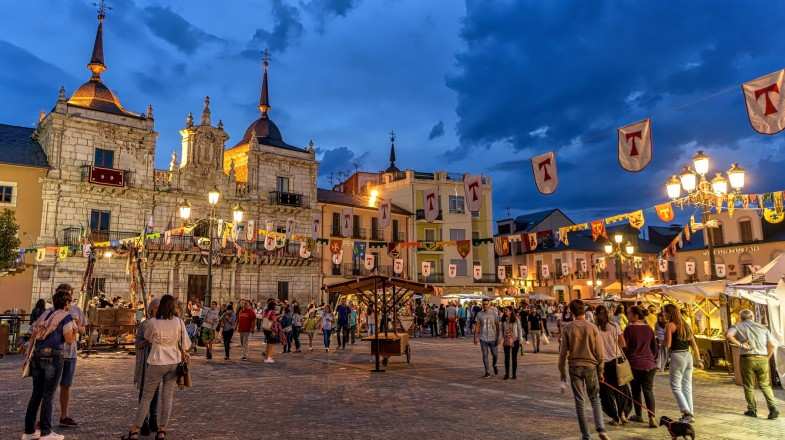
- 1.28K views
- ~ mins read
Spain comes to life in March after a long winter slumber. And even though temperatures are still chilly in some places, the freezing cold of winter is now only a distant memory. With fewer tourists and cheaper prices compared to the high season, you can cover cities such as Barcelona and go on a tour of Madrid during this time of year without breaking the bank. Plus, plenty of events and festivals are organized all over Spain in March, giving travelers a chance to fully immerse themselves in the local culture.
Spain weather in March

March is an unpredictable month when it comes to Spain. This means that even though a day may have a sunny start with a clear blue sky, there is a chance that you will get caught in a sudden shower in the afternoon. Coastal areas of the country’s south see the warmest temperatures at this time, with mercury breaching the 19℃ mark in Malaga . However, nights can be quite chilly with temperatures below 9℃. In Madrid, the average temperature is 10℃, with highs of 16℃ and lows of 4℃. Temperatures along the northern coasts of the country are similar to that in Madrid, but rains are more common in this part of the country.
For in-depth information, check out our travel guide on the best time to visit Spain .
Weather in Spain in March - Rainfall and Temperatures
Why visit spain in march.
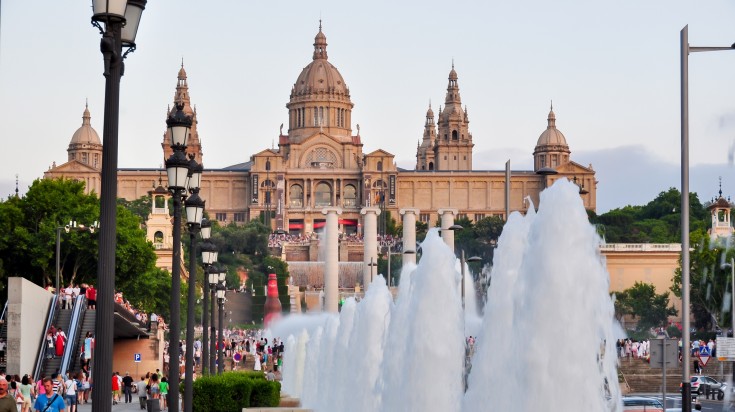
A trip to Spain in March has numerous perks, not least the warm weather. Below are some of the reasons why you should consider a vacation in Spain during this month.
- Festivals and events: The Spanish people like to celebrate the beginning of the spring season with pomp and show. If you’re holidaying in València , celebrate Las Fallas from March 3 to 19 with the locals. This is when each neighborhood in the city creates a massive puppet, some reaching 15 meters in height, out of paper-mâché and wood frames. But this is not all. Las Fallas also sees tons of events. Each day starts with La Despertà, which involves a band of musicians marching all over València playing music. At 2:00 pm, it is time for Masceltà, a firework display. This festival ends with one puppet being proclaimed a winner, while all others are burned in a huge pyre! Other popular events include Barcelona's Sant Medir festival (this is when sweets and toffees are scattered throughout the streets) and the Magdalena Festival in Castellón de la Plana.
- Fewer tourists: Despite numerous festivities, March is a low season in Spain. This means that you will be among a handful of travelers in the country. Grab this opportunity to tick destinations off your bucket list and fully immerse yourself in the authentic Spanish culture.
- Cheap prices: As March is a low season, you can expect to pay less for your accommodation and other activities. You will even find some of the guided tours in Spain cheaper in March than in July.
- City tours: March is an ideal month to go out on city sightseeing tours . The weather at this time of year is warm enough for you to spend a day outside, exploring atmospheric streets and visiting landmarks. Go museum-hopping in Madrid, marvel at the architectural monuments of Córdoba, and amble down the streets of Valencia.
Where to go and what to do

Given the risk of showers during March, you will have to check with the weatherman before heading for nature reserves in the country. However, even if you exclude them from your itinerary, you will be left with plenty of things to do in Spain !
Having covered its major cities, you might want to head for ancient towns such as Besalú, Albarracín, or visit Ronda . If you prefer bigger cities, go to Granada , Madrid, or take a trip to Barcelona . Barcelona is home to numerous masterpieces of modern architecture, including Sagrada Familia and Guell Palace, while Granada has a treasure trove of Moorish architecture. Some of the highlights of this city are the famous Alhambra and Cartuja Monastery. If you love art, then head for the Spanish capital city, home to some of the finest museums in the world, like El Prado and the Picasso Museum.
Need help figuring out how to fit them all into your trip? Our guide on how many days to spend in Spain will come in handy.
What to bring

Sudden changes in temperatures and weather conditions are common during the month of March in Spain, and you will have to be careful while packing. Warm clothes that can be worn in layers will help you deal with Madrid’s chilly nights, while an umbrella or a raincoat will come in handy in case of a shower. March, which coincides with the beginning of the spring season in Spain, sees the whole country erupt in joyous celebrations. Although the brutal cold of winter has faded by this time of year, it can get chilly in some parts of the country. Barring a few showers, there is nothing to stop you from discovering the country during this month, especially since the prices are low and landmarks less crowded.
A 7-day-trip to Spain would be sufficient to get around most of the major highlights of the country during this early spring month. But, if you need help planning your custom trip to Spain , feel free to reach out to our local travel experts . You can also browse through our trips to Spain in March for instant inspiration.
More Information
Spain in February Spain in April
Related Articles
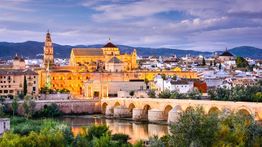
Best Time to Visit Spain
Spain is a country of lovers and adventurers.... read more

Spain in January: Fine Weather, Lower Prices
Spain is a winter paradise as much as it is a... read more
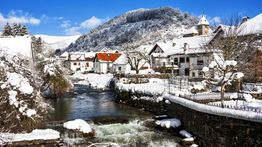
Spain in February: A Unique Perspective
February, most definitely, is an underrated m... read more
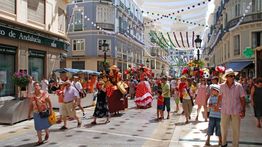
Spain in April: Celebrations and Local Delicacies
As flowers blossom and temperatures rise, the... read more

Spain in May: Weather and Travel Tips
From the beautiful Pyrenees Mountains to the ... read more

Spain in June: All You Need to Know
From the sunny beach of Costa del Sol to the ... read more
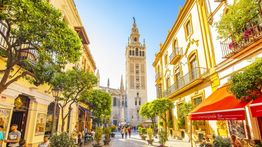
Spain in July: Great Outdoors and Warm Weather
From the crowded beaches of Tossa de Mar to t... read more

Spain in August: Summer Festivities with Fewer Crowds
August sees an uptick in tourist activities i... read more

Spain in September: Fewer Crowds, Better Rates
As September makes way for the cooler Mediter... read more

Spain in October: All You Need to Know
A trip to Spain in October is likely to be a ... read more

Spain in November: Exploring in the Rain
November is rarely taken into account when pl... read more

Spain in December: Festivities in Low Season
Spain in December can be a great month to exp... read more
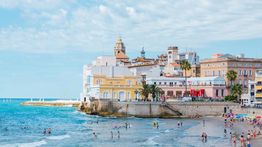
Summer in Spain: All You Need to Know
Boasting a mild, temperate Mediterranean clim... read more
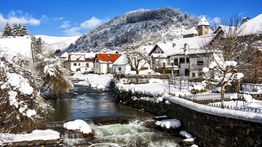
Winter in Spain: Top 5 Destinations
When you think of Spain, you most likely conj... read more
Related Categories
- How Long To Stay In Spain
- Spain Hikes/Treks
- Spain Travel Advice
- Top Spain Attractions
- What To Do In Spain
- When To Visit Spain
- Where To Go In Spain
- Previous Post

Popular Destinations
- Europe Tours
- Everest Base Camp Trek
- Italy Tours
- Argentina Tours
- Canada Tours
- Sri Lanka Tours
- Chile Tours
- Antarctica Tours


Seville in March
Home > Blog > Seville in March
Seville is the capital of Andalucia, Spain, and is well known for being one of the most popular cities in Europe to visit on holiday. With beautiful architecture, varied cultural heritage and an infectiously energetic atmosphere, this is a destination absolutely jam-packed with different things to see and do.
There is no bad month of the year to visit Seville, but those who prefer to take their holidays in a location’s off-season will find that March is the best time to come to this city and make the most of its attractions and hospitality. You won’t get the blissful temperatures of the summer, but you will be able to enjoy many popular sightseeing spots to yourself along with cheaper prices for accommodation and travel.
Jump to…
Reasons to Visit Seville in March

- Because of the high chances of rain, Seville is quite empty throughout most of March which is ideal for those who like to explore a place without lots of other tourists
- Despite March being the wettest month of the year, there are only 10 days of rain on average which means you’re unlikely to have wet weather for the entirety of your trip
- If Easter falls in March then you may get to experience Seville’s Semana Santa celebrations, which are some of the most impressive in the whole country
Weather in the Seville in March

Seville enjoys classically southern European weather, with hot summers and mild weather the rest of the year that gets particularly chilly over the winter months. March sees temperatures start to rise as April approaches, but also brings with it quite a high chance of rain that can put some people off visiting at this time of year.
Temperature
The average high temperature in Seville in March is a very pleasant 20°C, which can feel very warm on days when the sun is out and the sky is clear. The average low temperature is 9°C which is often surprisingly cold in the evenings compared to daytime weather, so if you’re planning on being out at night remember to pack a warm layer.
Sea Temperature
The average water temperature in Seville in March is only 17°C, and most people don’t attempt swimming in the water because it feels very cold. However, if you’re used to cold water swimming or just want to enjoy a refreshing dip in the water then conditions are still suitable and can be very pleasant on days when the sun is out.
Clouds and Rainfall
March is actually the wettest month of the year in Seville on average, which can put some travellers off visiting. However, on average there are only around 9-10 days which see rain during the month, although showers can last for a while and be very heavy. Make sure you pack an umbrella, and you’ll be fine.
Sunshine Hours
Despite the chances of rain, there is an average of 6 hours of bright sunshine every day in Seville in March, so it’s a good idea to pack sun cream as well as a raincoat! Sunrise is between 7.30 am and 8 am every morning, and sunset happens at around 7.30 pm in the evening.
Where to Go in Seville in March

Barrio Santa Cruz
Barrio Santa Cruz is one of the oldest neighbourhoods in Seville, originally the Jewish quarter of the city and now one of the best places to go if you want to enjoy a more authentic atmosphere. It’s a popular spot for tourists, but visiting in March means you shouldn’t have to worry about crowds and can wander around to your heart’s content.
This neighbourhood is characterised by its cobbled streets and whitewashed buildings, and is easily one of the prettiest parts of the city. The narrowest street in Seville can be found in Barrio Santa Cruz, which is known as calle de los besos ; the street of the kisses.
Alameda de Hercules
The Hercules Boulevard, or Alameda de Hercules, is a huge public park found in the middle of Seville’s historic district. Recently given a modern upgrade, it is the oldest public garden in Europe and nowadays is home to bars and restaurants, green spaces and plenty of places to sit and socialise.
Alameda de Hercules is a brilliant place to enjoy a drink or a meal on days when the weather is mild and sunny, as there are plenty of different dining options around the park that give you the perfect excuse to sit and people watch as you enjoy classic Spanish cuisine. It’s a very bohemian part of the city, and there are plenty of outdoor entertainment and art events organised within the park throughout the year which only adds to this atmosphere.
What to Do in Seville in March

Eat Tapas like a Local
When in any part of Spain, it’s essential that you dine out at a tapas bar at least once and enjoy this cultural way of eating. Every area in the country has its own tapas specialities, and in Seville these include a prawn dish known as albóndigas de choco y gambas and stuffed aubergines that are locally called berenjenas rellenas .
Admire the View from Las Setas
Seville’s Metropol Parasol, locally known as ‘Las Setas’, is a huge wooden structure in the middle of the city that was built by German architect, Jürgen Mayer-Hermann. Visitors can travel to the top of the 30m installation and enjoy incredible panoramic views across the top of Seville, although you might want to skip this activity if you don’t have a head for heights!
Visit the Casa de Pilatos
There are many spectacular buildings to visit in Seville, but if you’re after something a little bit more special then why not take a trip to Casa de Pilatos, which is one of the city’s best-kept secrets. This beautiful civil palace was built and decorated in a mix of Italian Renaissance, Gothic and Spanish Mudéjar architectural styles, and also has a beautiful set of gardens which are lovely to explore on days when the weather is warm and dry.
Crowds and Cost
The high season for tourism in Seville runs from February to June, with the Easter week of Semana Santa being perhaps the busiest time of the whole year. If these celebrations fall in March then you will find it very hard to book accommodation in the city unless you plan your holiday well in advance, and may find that prices for travel are higher than usual as well.
Visiting Seville at the start of March will mean that the city is quieter, especially if Semana Santa doesn’t happen until April. Bear in mind that popular attractions will probably be busy however, so if you’re not a fan of crowds you’ll want to sightsee early in the mornings before everyone else arrives.
March festivals and events

Semana Santa
The dates of the Christian religious celebration of easter change every year, but in some cases Holy Week, or Semana Santa, will fall in March. Easter is celebrated all over Spain, but Seville hosts one of the biggest processions to commemorate the event which makes it a brilliant part of the country to visit during this festival.
The major event of Semana Santa in Seville is the parade through the city of various floats and statues of religious figures that are adorned with flowers and other colourful decorations. Members of the brotherhoods associated with each of the city’s churches participate in the procession as well, along with nazarenos wearing their traditional hooded robes.
Frequently asked questions about Seville in March
Is seville warm in march.
The average temperature during the day in Seville is 15°C, which will feel pleasant enough when the sun is out. It can get hotter towards the end of the month, but overall the weather is mild with a cool breeze and a fair chance of rain.
How many days do you need in Seville?
Whilst it is possible to see most of Seville’s highlights in 24 hours, it is much better to give yourself 2-3 days to explore the city properly. If you have even more time, you can also plan day trips to other nearby locations such as Ronda or Málaga.

If you’re looking for a European holiday destination that has the perfect balance of historical attractions and modern developments, then Seville is the ideal place for your next trip. Once you’ve enjoyed exploring the neighbourhoods and soaking up the city’s historic culture, you can then live it up in the evenings and enjoy some of the finest and most varied nightlife in all of Spain.
Seville is known as being one of the hottest parts of Europes in the summer, which can make it difficult to enjoy exploring the city if you’re particularly unused to the heat. Visiting in March offers a great solution to the problem, as not only will you be able to enjoy fresh and mild weather throughout your holiday, you’ll also get Seville with half the number of other tourists as you would over the summer months, making your experience of the city far more relaxing.
Want to find out more about the top destinations in Europe to visit in March? Read our guides to Malta and Madeira , or take a look at our rundown of Where to Go in March .
Some of the links on this page are affiliate links, which means we can earn a small commission when our visitors click on them. This helps us to keep our content free and accessible for everyone, but you’ll never be charged for engaging with them.

About Contact Blog

© 2020-2024 The Travel Aisle


Marbella in March: Weather, Things to Do and Local Tips
Are you visiting Marbella in March? This guide includes everything you need to know about this beautiful coastal city in March.
Marbella is one of the most visited towns near Malaga because of its lovely weather, surroundings and lifestyle.
Being from the local area, I can assure you Marbella has many fantastic things to do all year round – from visiting its picturesque historic centre and beaches to luxury shopping.
Yes, it’s known for being a summer destination, but if you’re looking for a more relaxed and authentic experience in Marbella, you won’t regret visiting in March. And you get to experience Easter.
So, what things can you do in Marbella in March? What’s the weather like?
Let’s dive in!

This post contains affiliate links, and as an Amazon Associate, I earn from qualifying purchases. If you click through and purchase something, I receive a small commission on the price at no extra cost to you. This helps me keep the content up to date and make other improvements to the blog.
Table of Contents
Weather in Marbella in March
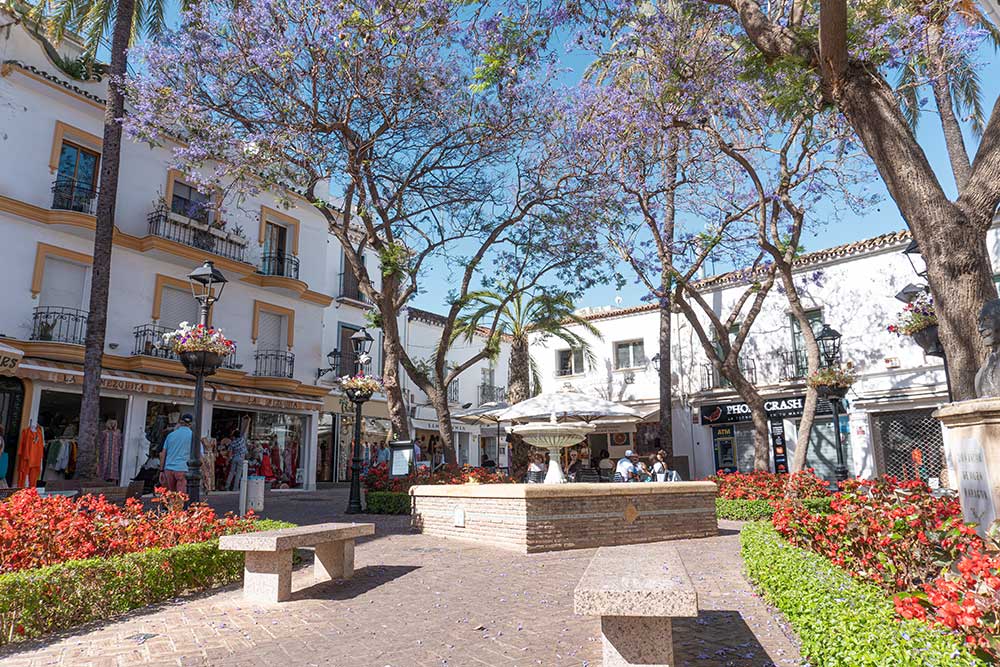
As happens with Malaga, Marbella is pretty mild in March. You can enjoy beautiful warm and sunny days; however, be aware of the temperature drop during the night; it can be as low as 9 degrees Celsius (48ºF).
When it comes to rainfall, it usually rains 5 or 6 days, so there’s a small chance of rain when you plan your holiday in March. However, rain in Marbella isn’t very strong and doesn’t last for long either.
Another good thing about visiting Marbella during this time is you can enjoy 8 hours of sunshine, whereas European cities like Paris or London have fewer hours. And if you go at the end of the month, there are more sunshine hours because of the daylight saving time, which usually takes place on the last Sunday of March.
Here’s an overview of Marbella weather in March:
- Maximum temperature: 18ºC (64ºF)
- Minimum temperature: 9ºC (48ºF)
- Average temperature: 14ºC (57ºF)
- Rainy days: 5 (approx 12 mm per month)
- Water temperature: 16ºC (61ºF)
- Average humidity: 62%
Things to do in Marbella in March
1. see the easter processions.

Easter (Semana Santa) is one of the most unique events in Spain because of the way we celebrate it. Whether you’re religious or not, I recommend seeing the Easter processions.
Semana Santa usually takes place at the end of March, so if you’re in Marbella at that time, check out the event calendar.
The processions in Marbella happen in the historic centre, and if you’ve never been to Marbella Old Town is worth knowing that the streets are narrow and it gets busy. If you really want to see the processions, you need to be early.
A smart way to see the processions without spending quite a long time stood up is to have a coffee at an outdoor terrace in Orange Square.
Marbella Processions are beautiful, but choose Malaga over Marbella if you want to experience this traditional event on a bigger scale.
2. Wander Marbella Old Town

Regardless of the season, Marbella Old Town must be on your itinerary. There isn’t a wrong time to explore one of the most beautiful parts of Marbella.
What I love about visiting the old town in March is that it’s at its best. Although it’s always clean and kept well, the council makes a bigger effort during this month. Why? Because of the Easter processions.
They will replace the hanging plant pots in Carmen Street, Marbella’s most photographed street, with ones that have bright and blossom roses, paint the walls, polish the floor, etc.
If you love photography, you’re in paradise; the streets of Marbella historic centre are beautiful and perfect for taking photos.
However, there are many other things to do. For example, if you’re into art, visit the Spanish Engravings Museum ; if you’re into history, book a tour with a local to discover the history behind important historical buildings like Marbella Castle.
Other activities to do in Marbella include shopping from the many independent shops, having a coffee at Plaza de los Naranjos or watching the sunset from a rooftop terrace.
3. Walk on the beach promenade
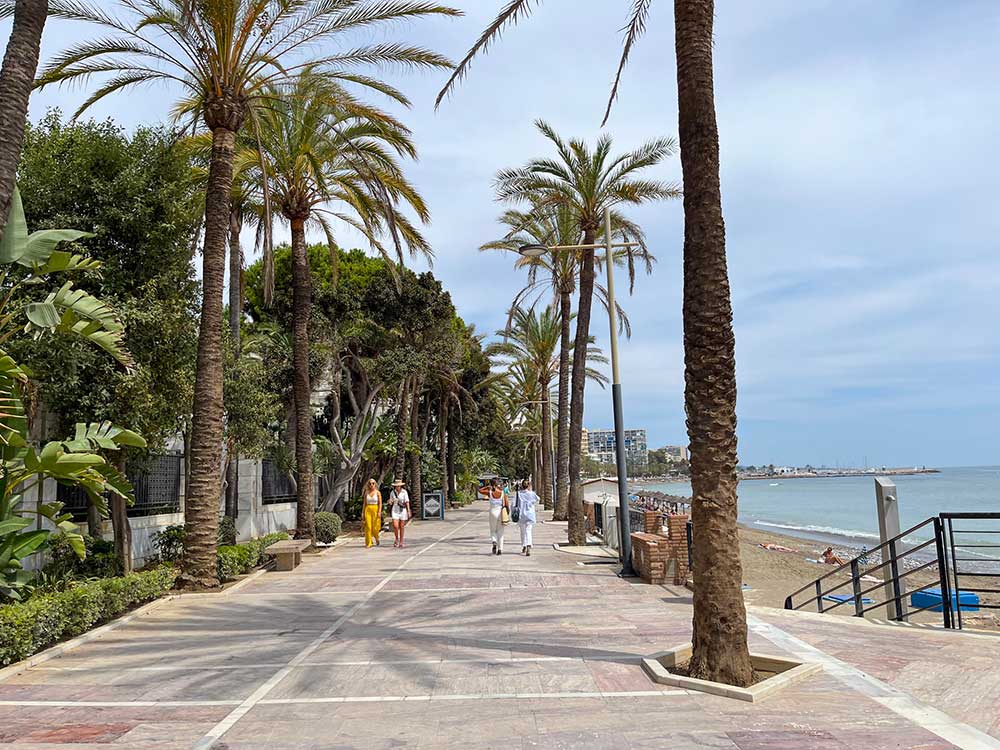
The city has an extensive and beautiful beach promenade that goes from Playa del Cable to Puerto Banus .
March is a fantastic time to go for a walk along the beach because the temperature is just nice. It isn’t too hot or cold, so you can really enjoy walking.
If walking isn’t your thing, bikes are available for hire or consider doing a bike tour in Marbella , which helps you learn about the place while contemplating amazing coastal views.
Depending on how far you walk, you can stop along the way to have a meal. There are plenty of restaurants, especially between Playa de la Venus and Playa de la Fontanilla.
Some of my favourite places to eat with a beach view are Da Bruno Sul Mare , an Italian restaurant located in other parts of Marbella like Cabopino and Manuka , a good option for those who want to eat healthier or are vegetarians or vegans.
Another walk you might want to add to your Marbella itinerary is the one in Puerto Banus, where you’ll see incredibly expensive yachts, and you can even do a boat cruise .
4. Take a food tour

A good way to discover the traditional food in Marbella is by taking a food tour .
This 3-hour food tour takes you on a culinary journey through Marbella. Apart from sightseeing, you’ll stop at different tapa bars and have wine and olive olive tastings.
However, if you have visited Marbella or its surroundings before, you might have already tasted some local delicacies and will want to skip this activity.
An alternative is to do a wine tour because the area produces high-quality wines, including Malaga’s sweet wine. For that, you’ll need to travel to other nearby towns, such as Ronda.
5. Challenge yourself to a hike in Marbella
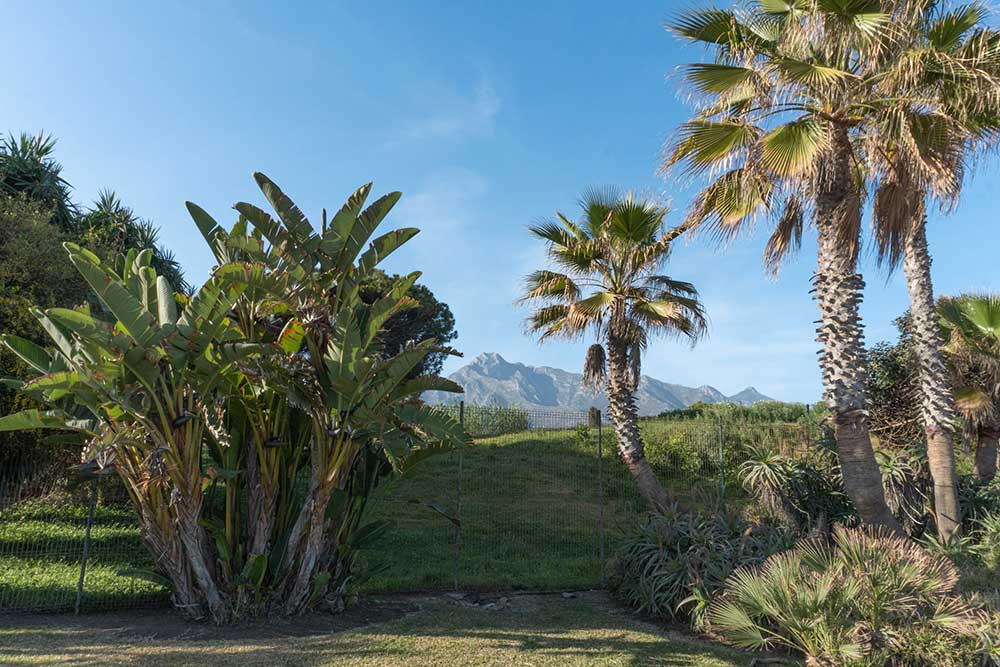
Are you an active traveller? March in Marbella isn’t ideal for water activities like paddleboarding and scuba diving. However, that doesn’t mean you can do other fantastic activities like hiking.
Marbella is home to beautiful landscapes that range from an impressive coastline to high mountains, and when it comes to hiking trails, you’ll find easy walks to do with little ones or challenging walks that will push your limits.
My favourite and most accessible hiking trail in Marbella is Dunas de Artola-Cabopino. It is a short trail on a wooden path from where you can contemplate the Mediterranean Sea as well as the sand dunes.
If you prefer something with medium to high difficulty, check out La Concha. I haven’t done this hiking trail yet, but friends have told me that once you reach the peak, the views of the sea are spectacular (and you can even see the Strait of Gibraltar and Africa!)
It’s also during this time when you might spot the cherry blossoms.
6. Play golf
I’m not an expert in golf by any means, by many locals like me know that Marbella and the rest of Costa del Sol are famous for fantastic golf courses.
The lovely March weather in Marbella offers many opportunities to play golf. In fact, Marbella has over 20 golf courses!
Some of the most popular golf courses in the city are Los Naranjos Golf Club , Marbella Golf and Country Club and La Quinta Golf .
7. Go on a day trip to Ronda

Ronda is one of the best excursions from Marbella and should be on your Spain bucket list . You can travel by car or take a guided tour with transportation.
Located inland, this whitewashed town has beautiful natural surroundings and pleasant temperatures. I’ve visited Ronda several times, including in June and September, and it was very warm. You’ll get the best weather conditions for sightseeing in Ronda in spring.
March is perfect for exploring the town, especially because it has many outdoor activities and excellent walks and isn’t too crowded.
8. Visit Malaga
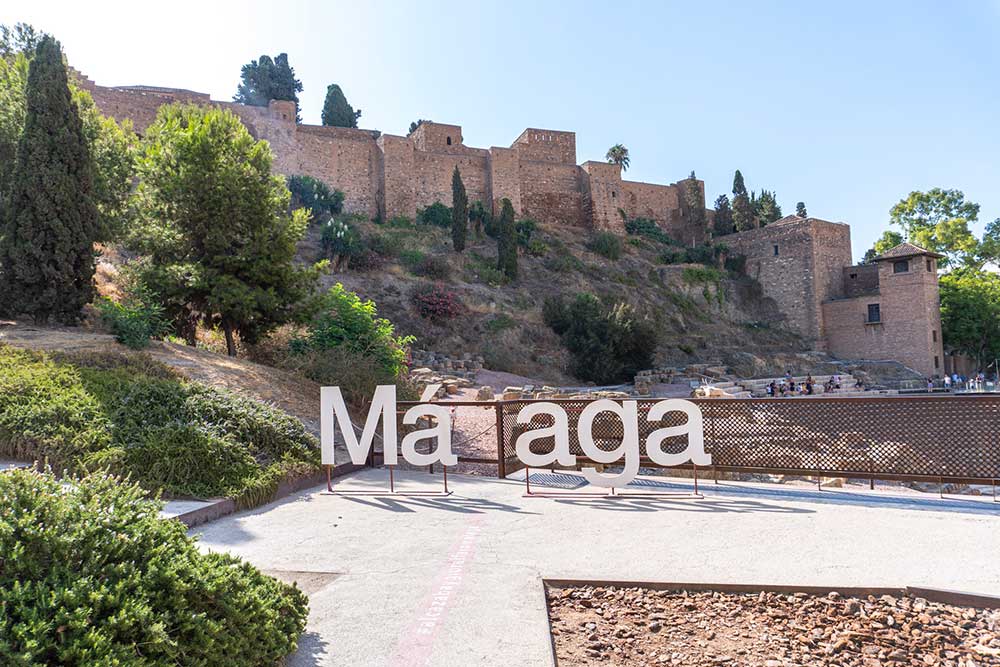
Malaga is only 55 minute drive from Marbella, and 1 hour and 5 minutes by bus, so if you’re staying longer than a weekend in Marbella, don’t miss out on the chance to visit Malaga, one of the best coastal cities in Spain.
The truth is that you can visit Malaga attractions in a day if you plan your itinerary well.
Wondering what not to miss on a day trip to Malaga? Here are my recommendations:
- Visit Malaga Cathedral and Gardens
- Explore the Alcazaba Palace and Roman theatre
- Go to Picasso Museum (if you like art!)
- Enjoy tapas at Atarazanas Market, El Pimpi or La Pechá; they have the best Russian salad.
- Walk Malaga Park
- Climb up to Gibralfaro Castle
- Enjoy the sunset at Muelle Uno
What to pack for Marbella in March
If you want to dress like a local, you want to pack a combination of light jumpers and t-shirts for the hottest hours.
What about outfits? You can easily wear short-sleeved dresses with denim jackets and boots or a t-shirt, jeans and trainers for a more comfortable option.
Personally, I wouldn’t pack swimming wear because it’s chilly to swim in the sea at this time of the year, but I’m a local, so you might feel different about it and still pack it.
Other tips for travelling to Marbella
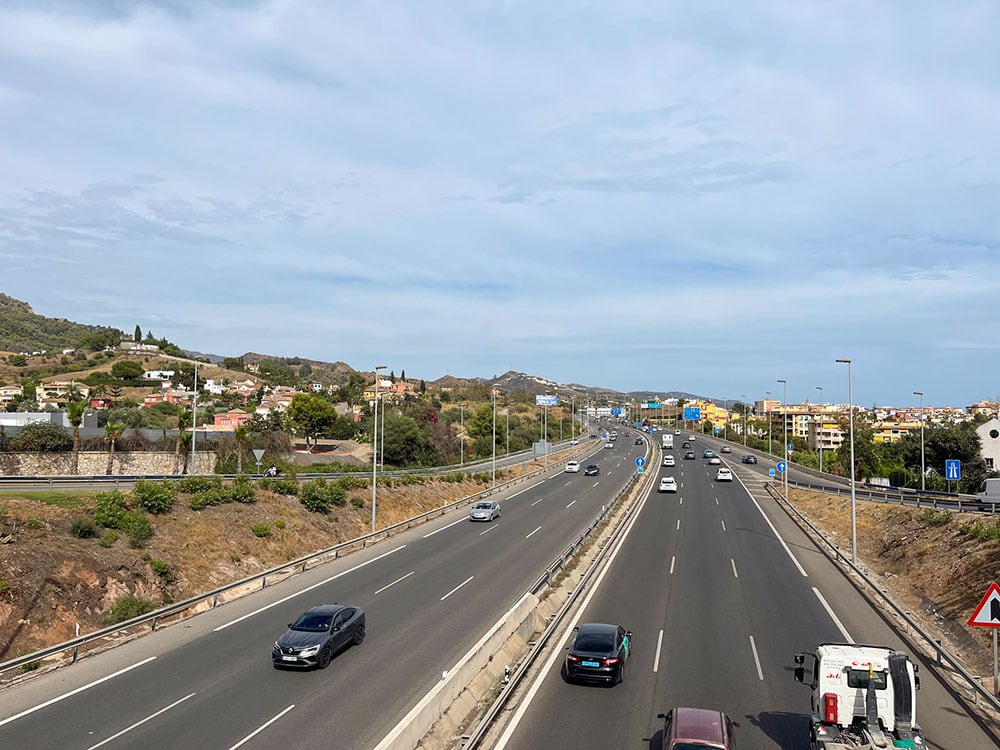
The best way to move around is by car. Marbella public transport is good, but you can’t always access some parts of the city by bus.
Also, hiring a car is even more recommended if off-the-beaten-path destinations are on your list.
Avoid eating in touristy spots like Orange Square and Puerto Banus. Go a little further to find restaurants and cafes offering better meals and prices.
Marbella is quite big, and many travellers don’t know this. There are many areas like the historic centre, Puerto Banus, Elviria and San Pedro de Alcántara, which is another town that used to be part of Marbella because it’s next to it.
Why am I telling you this? This is important to know when booking accommodation and figuring out the transport logistics. Many of these areas aren’t well-connected by public transport.
Explore beyond Marbella. Marbella has so much to do, but at the same time, it has amazing day trips like the Pueblos Blancos (Andalusian whitewashed towns), Gibraltar and national parks like Sierra de las Nieves.
Frequently asked questions
Is it worth going to marbella in march.
Yes, March in Marbella is fantastic for sightseeing and experiencing the local culture.
What month is best to visit Marbella?
It depends on the type of holiday you want. For beaches, parties and a lively atmosphere, go during the high season (June to September); for sightseeing, excursions and fewer crowds, go anytime from October to April; just avoid key dates like Christmas and Easter.
Does it rain in Marbella in March?
On average, it rains 4 days in Marbella in March.
Is Marbella busy in March?
No, except the last week of March when we celebrate Easter.
Can you swim in Marbella in March?
It isn’t warm enough to swim in Marbella. The average sea temperature is 16ºC (61ºF). You might want to consider booking a hotel with a heated pool.
Conclusion on March in Marbella
You have plenty of things to do in Marbella in March, plus you’ll enjoy the beautiful Mediterranean climate.
Easter is the biggest event in Marbella at the end of this month, so you might not want to miss out on living an experience like this one.
Overall, Spain in March is beautiful, especially in the south where it isn’t that cold.
Do you have any questions about Marbella? Drop me an email.
Enjoy your trip to Marbella!
Don’t forget to save this Marbella guide on Pinterest for later.

Things to do before visiting Marbella , Spain
- Check out cheap flights to Malaga Airport (AGP), the closest airport to Marbella.
- Are you looking for the best accommodation? Check out this Marbella hotel guide .
- Have a look at this Malaga food guide to indulge yourself in eating the best typical food.
- Book the best activities and tours in Marbella with Get Your Guide .
- Stay connected with your loved ones with Airalo . The best eSIM card available in over 200 countries.
- Rent a car to travel with ease around Marbella and Costa del Sol.
- Book travel insurance for your trip. This is a must for any trip!
Read more about Marbella
- 35 Best Things to Do In Marbella, Spain – A Local’s Guide
- The Ultimate Weekend in Marbella
- A Guide To Marbella Old Town (With Local Tips)
- The Best Time to Visit Marbella
- The Best Beaches in Marbella You’ll Love
- Best Places to Eat in Marbella (A Local’s Review)
- Best Hotels in Marbella For a Memorable Holiday
- How To Get From Malaga to Marbella Guide
Sharing is caring!
Hola, I’m Cristina, the founder and writer of My Little World of Travelling. I was born and raised in Malaga (Costa del Sol), and I’m passionate about showing you my hometown and other beautiful Andalusian destinations. I help other travellers plan their trips to Spain by providing local advice and unique insights.

- Privacy Overview
- Strictly Necessary Cookies
- 3rd Party Cookies
- Cookie Policy
This website uses cookies so that we can provide you with the best user experience possible. Cookie information is stored in your browser and performs functions such as recognising you when you return to our website and helping our team to understand which sections of the website you find most interesting and useful.
Strictly Necessary Cookie should be enabled at all times so that we can save your preferences for cookie settings.
If you disable this cookie, we will not be able to save your preferences. This means that every time you visit this website you will need to enable or disable cookies again.
This website uses Google Analytics to collect anonymous information such as the number of visitors to the site, and the most popular pages.
Keeping this cookie enabled helps us to improve our website.
Please enable Strictly Necessary Cookies first so that we can save your preferences!
More information about our Cookie Policy
- Search for a holiday home
- Spain information
- Advertise property
In order to give you the best search results, please select a destination before searching, e.g. "Costa del Sol" or "Barcelona"
In order to give you the best search results, please select an arrival and return date before searching.
More search options
Where to stay in Spain in March

Don’t know where to stay in Spain in March? We've got you covered! Spain has many wonderful cities to offer. Whether you feel like visiting metropolises like Valencia or spectacular towns like Ronda, Spain’s got it all! In this article, we will show you the best places to stay in Spain in March.
Best places to stay in Spain in March
March is a great month to visit Spain, especially if you’re looking for a more relaxed experience with fewer people, and if you want to save money. During this month flight tickets are half the price compared to the peak season and you can save money on your holiday home in Spain too.
Depending on where you choose to go, the weather can be pleasantly warm. That’s why we recommend visiting the south of Spain, the cities along the Mediterranean coast and the Islands to experience the best weather.

Valencia is the third-largest city in Spain and is the perfect place to stay for a combination of culture, art and beaches. The city is also famous for its unique festivals all-year-round. In fact, one of the largest festivals in Spain, Las Fallas, is held during the month of March.
Las Fallas de Valencia is an annual celebration of the coming of spring. You can expect fireworks, live music, and traditional costumes. Perhaps the true focal point is the hundreds of towering cartoonish monuments. During the final night of Las Fallas, the monuments are set on fire and burned to the ground - making it a spectacular night. Las Fallas is usually held from mid-March until the beginning of April.
During March in Valencia, temperatures will reach an average high of 18ºC during the day and the average temperature is 13ºC, so remember to pack a coat or jacket.

One of the most famous and traditional Spanish festivals is Semana Santa which takes place during Easter in Seville. Semana Santa, also named Holy Week, begins on Palm Sunday and ends on Easter Sunday every year. The week consists of processions where enormous floats are carried around the streets by teams of bearers followed by a crowd committed to that particular church's precession. Thousands of people line the streets trying to get a glimpse of the processions. Some of which can be dated back to the 17th century, each showing a small part of the Easter story.
March is one of the best months to visit Seville. Average temperatures are around 15ºC but will normally reach more than 20º during the day. During the summer it will be too hot to walk around in the city centre, and you may not enjoy what Seville has to offer as much. Stay in Seville and explore the Catedral de Sevilla, Real Alcázer , Plaza de España, and the old narrow stress, the Barrio de Santa Cruz, are amazing places to visit during this time.

In the province of Cadiz, the Jerez Flamenco Festival is held annually in March. Singing, dancing, and guitars dominate the streets of Jerez, and it creates a unique atmosphere in the city. People arrive from all over the world to experience the best flamenco guitar players and dancers in Spain, as well as taste the famous sherry in traditional bodegas .
Like Seville, Cadiz is pleasant to visit during this time, and it makes perfect sense to go to The Plaza de San Juan de Dios - A 16th-century square and also the heart of the city, because of its proximity to the port. Take a deep dive into ancient history and visit the Roman theatre in Cadiz. This theatre dates back to the 1st century BC, which is the oldest in Spain as well as one of the largest with the capacity to hold 20,000 people. What's more, is that the tour of the museum and theatre are free.

Take a trip to the capital of Costa del Sol, Málaga. It has a vibrant city life atmosphere and areas around the city are also worth exploring too. For example, The Alcazaba, which is a palatial fortification built in the 11th-century. The Alcazaba is one of Málaga’s most important landmarks and was built by the Hammudid dynasty.
As well as other cities in Spain, Málaga has a Roman theatre, which is the oldest construction in the city. The theatre is actually placed directly in the heart of the city and lays at the foot of the Alcazaba fortress, so it is obvious to kill two birds with one stone.
If you are not scared of heights, the famous El Caminito del Rey brings stunning views and an amazing experience. Explore the area around Málaga also known as The King’s Pathway. The walkway is pinned along the steep walls of a narrow gorge in El Chorro, near Ardeles, and is definitely worth a visit.
The average temperature during the day is 18ºC, so a walk on the beaches around Málaga wouldn't hurt either.
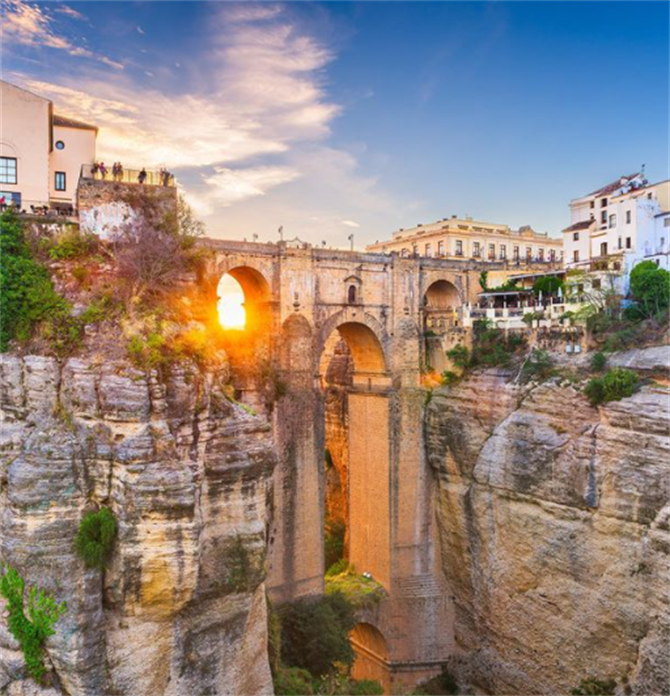
If you want to experience a spectacular sight, Ronda is the perfect place. It is one of the most beautiful cities in Spain and is a popular day trip for people renting a holiday home on the Costa del Sol .
Of all the things to see in Ronda , the most famous sight is The Puente Nuevo, "new bridge", which was built in 1793. From here, you have amazing views over the El Tajo Gorge. We recommend walking down along the Camino de Los Molinos to get the best view of the bridge.
Additionally, Ronda has one of the oldest and most picturesque bullrings in Spain. In 1785, Jose Martin Aldehuela, the architect who also built the Puente Nuevo, finished the Real Maestranza bullring, which can hold up to 5000 spectators.
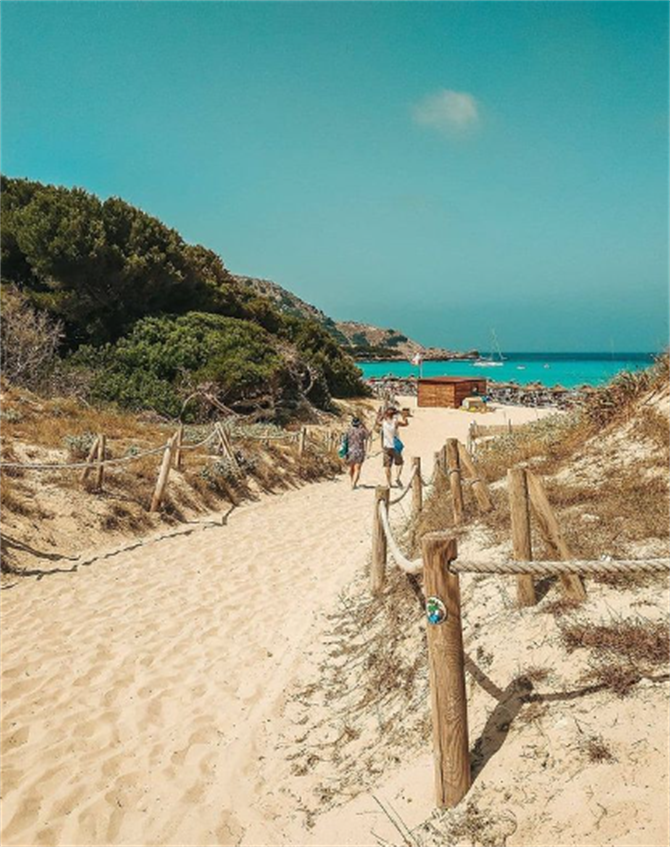
Spring is a great month to stay in Mallorca . During March, the average rainfall is low and you get seven hours of sunshine. The average temperature during the day is 18ºC so it's also worth exploring the beautiful beaches on the island .
If you love food as much as we do, we recommend attending Port Adriano’s Street Food Festival. Port Adriano will be filled with vintage caravans, with various types of food: eco-food. vegetarian, creative food, Tex-Mex and much more.
If you’re in need for speed, the three-day tour Classic Rally Mallorca is definitely worth it. Rally drivers from all over Europe take part in this race, and they showcase a wide range of vintage cars. The Classic Rally is held annually in March.
If you are looking for a holiday to Spain in March, you will find something for everyone. From vibrant cities with traditional festivals to coastal destinations, warm enough to spend the day at the beach. Where will you go this March?
Suggested reading for you:
- Best places to stay in Mallorca
- Where to stay in Malaga

- Cheap holidays
- All-inclusive
- Villa holidays
- Best beaches
- Health & fitness
- Unusual holidays
- Quiet destinations
- Private pools
- Cool in summer
- Honeymooners
- Solo travellers
- Bucket list holidays
- Canary Islands
- South America
- Top 10 destinations
- 30th birthday
- 40th birthday
- 50th birthday
- 60th birthday
- 70th birthday
- 80th Birthday
- Easter holidays
- Wedding anniversary
Hottest places in Spain in March
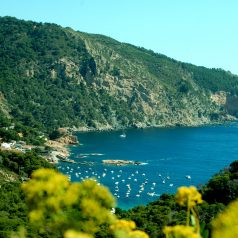
March marks the onset of spring in Spain and if you pick the right spot you can find some lovely warm spring sunshine, but don’t expect scorching heat. If you like to sunbathe, see where’s really hot in March . You should also consider the Canary Islands in March where the weather is a lot more reliable.
Let’s get back to mainland Spain. For the best of the weather you need to head to the south-west corner of Andalucia. Hottest spot will be the city of Seville , one of the best destinations in Spain for a short break. Expect an average 21ºC and seven hours of daily sunshine in March. Nearby Granada will also be warm and you can explore the majestic sights of the Alhambra without being overwhelmed by crowds.
If you want beaches, the Costa de la Luz in this corner of Spain is beautiful with sand dunes, fishing ports and historic towns and cities such as Cadiz and El Puerto de Santa Maria. The seafood is especially good in this region.
It’s a good time to explore the world-class art galleries of Madrid with temperatures of 16ºC and an average six hours of daily sunshine. You can expect similar temperatures in Barcelona with seven hours of sunshine, perfect for checking out the sights, from the Sagrada Familia to the Camp Nou.
Another option is the Balearic Islands, a different experience to the baking heat of high summer. This is a popular time for walking and cycling in Mallorca and you may see some of the world’s top road cycling teams practising on the hilly roads. Expect temperatures of around 16ºC and six hours of daily sun. The capital Palma is a delightful place to spend a few days.
Find more holiday ideas in Spain , including the best singles holidays in Spain .
Holiday weather in Spain in March
Extreme march weather in spain.
The highest recorded temperature in Spain in March was 37.3ºC (99.1ºF) in 2012, in the city of Seville. Phew!
The lowest temperature in Spain during March was -25.6ºC (-14.1ºF) in 1956, in the village of Molina de Aragón, in the province of Guadalajara to the east of Madrid.
March can be wet in northern Spain. In 2009, Bilbao saw 226 mm (8.90 inches) of rainfall in the month. In contrast, 1976 was an exceptionally dry period in Spain, with no rain or snow reported across the country.
A cold snap in March 2010 – known locally as the “Little Ice Age” – brought 50cm of snow to Madrid and temperatures as low as -10°C (14°F) during the day and even lower at night.

Festivals in Spain in March
Las Fallas de Valencia – Valencia Fire Festival (March 15-19, 2024).
El Misteri d’Elx – Medieval religious drama, Elche (Dates for 2024 not yet announced).
Concurso de Tapas y la Feria de la Cerveza Artesana – Tapas contest and craft beer fair, Salamanca (March 29 – April 7, 2024).
Feria del Caballo – Horse fair, Jerez de la Frontera (March 17-24, 2024).
Festival de Jerez – Flamenco festival, Jerez de la Frontera (February 22 – March 10, 2024).
Try another month
Weather in Spain in March Weather in Spain in April Weather in Spain in May Weather in Spain in June Weather in Spain in July Weather in Spain in August Weather in Spain in September Weather in Spain in October
Last updated: 16 February 2024
* Did you know you can save up to 40% on holiday prices? See our latest travel deals and enter your email address below to get updates every fortnight.
- 101 Family Holidays
- 101 Singles Holidays
- 101 Short Breaks
- 101 Honeymoons
North Mills Trading Estate, Unit 4 Hounsell Building, Bridport DT6 3BE
Copyright © 2024, 101 Holidays Ltd
- Tour Account ›
- Travel Forum ›
- Travel Forum
- Spain in March - ...
Spain in March - Worthwhile or Weather Concerns?
Hi everyone,
Trying to plan my first trip to Spain with my long-time girlfriend. We are currently planning our trip to be 5-7 days around mid- to late-March in 2023. Lots to research here and any tips for itineraries, restaurants, hotels, attractions, etc. are appreciated as well!
BUT, my main concern is the timing of when we are planning to go and the weather in March . I'm worried about:
- Temperature: Will it be very cold in any particular region or all regions? Do we avoid certain places due to very cold temps?
Transportation: Is some transport reduced, and if so, by how much (i.e., trains and buses)?
- Attractions/Operating Hours: Are any attractions closed until April? How are restaurants and hotels operating in smaller tourist towns vs bigger tourist cities?
Again, I'm only worried since we are going in March, as this is pretty much on the cusp of being wintery and spring-time weather and is not during peak-tourist season.
Thanks for any advice you may have!
The second two points won't be an issue—transportation and sites will all be open.
The weather is both subjective and variable. It would depend on your idea of "cold" as well as where in Spain you'd be. Rain could also be expected in much of the country in March. Historical average temps, sun, and rainfall can be googled for any chosen city.
5-7 days isn't a whole lot time—did you have an idea of where you'd go?
Scudder - Thanks for the info!
Not sure where we will go yet. As I have been researching and reading up on itineraries, I have begun to realize that 5-7 days is short, but unfortunately that is all the time we have. With that in mind, maybe 2-3 cities is realistic for us...? Barcelona seems far away from maybe clusters like (Sevilla, Granada, Cadiz, Marbella, and Gibraltar) or (Madrid and Toledo). All these cities sound amazing in their own ways, so hopefully this is just our first trip to Spain together!
Eric, my husband and I first sojourned to Spain in early March, 2017. We landed in Madrid where it was cloudy, rainy and in the 40s so, raw feeling. It felt like where we live, New Jersey. One day, it was spitting snow. We were in museums most of the two full days there and it did not concern us. As a matter of fact, the day we landed, we rode on the top of a bus that was open and let the rain pelt us! We can be oppositional-defiant! At least we could see since the bottom windows were totally fogged. From Madrid we went to Barcelona where, again, it was chilly. We did have a nice day trip to Montserrat, however. There was no rain and it might have been in the low 50s. In 2019, we visited Seville, Cordoba and Granada. Again, lots of rain in early April--same as NJ. I think the temperatures were in the 40s, again. It was pouring rain for our night visit to the Alhambra but beautiful the next day. While we wished the weather had been better, we loved our visits. We are returning in late December and early January--who know what the weather will bring. Every tourist sight that we had wanted to see was open. I would still get advance tickets online for some of the sights such as the Alhambra, major museums, etc.. They might have closed earlier in the winter than the rest of the year, but we made it work. We had no trouble finding restaurants and took the recommendations of the flat owners we had rented from. We had no transportation problems either. Our experiences with the weather might have been a one-off. You just never know about the weather: one year for Christmas, we spent the week in Paris where it was sunny everyday and in the mid-to-high 50s!
What does “cold“ mean? My definition of cold is below 32°F. When I was in Barcelona and Ibiza in the month of February back in 2000, the temperatures were in the 50s-60s in the day and maybe got down into the 40s a few nights so these temps were absolutely the best without the hordes of tourists too!! I would never want to be in the Mediterranean when it is hot and for me, hot is 80°. Public transport in Barcelona was extensive meaning I never had to wait for more than 10 minutes.
I did a Spring Break trip in 2019 to Spain. The Weather was perfect for sightseeing, although not warm enough to swim. We flew into Malaga and spent 2 nights in Granada for the Alhambra, 1 night in Cordoba for the Mezquita-Catedral, and 3 nights in Sevilla. We used buses from Malaga to Granada, and Granada to Cordoba, (ALSA buses) and then took the train between Cordoba and Sevilla. We actually connected through Dublin as we had cheap tickets, but I would suggest you go directly through Madrid and make your connections to save time. We only had a week also and it was so worth it, especially as Covid shut down travel in 2020. I will never again say, it's too short a time to travel to Europe! just go and enjoy!
In general it will be warmer in southern Spain, but you could expect cold and/or snow in any mountainous part of the country. As an example, back in 2017 it was 32 degrees and rainy in Alto de Cebreiro in late May, at mid-day. Way back in March 1979, we passed through Ávila and there was snow on the ground. It really depends on where you want to go and what you want to see. With only 5-7 days it might be better to pick one large town and take a couple days trips. Which town is up to you, but any of the popular ones would work.
With one week at your disposal, all you can visit is probably a couple of cities. Everything will be open. Just choose to visit cities, so that you'll have plenty of indoor places to see (museums, palaces, churches, castles) in case of rain. With only one week at my disposal I'd limit my visit to only one of the following: 1. Madrid+Toledo 2. Barcelona+Madrid 3. Madrid+Cordoba 4. Madrid+Sevilla
In other words I'd do only 2 cities, no more.
Barcelona is kind of out of the way and is big like Madrid, but Madrid and Barcelona are well connected by AVE train and if you could devote at least 3 or 4 nights to each they'd be doable. If you only have 5 days, then it's not enough for both.
I concur with Roberto's take. I'd actually go even further and suggest you consider either Madrid or Barcelona. Exploring either of those cities at a relaxed pace, while adding a day trip or two, could make for a very nice week.
And I just saw you're in Mass. I'm basically across the street from the Berkshires. Anywhere in Spain is a welcome break from March up here.
How many nights can you spend in Spain? I'm not clear on whether your 5-7 days includes your travel days.
Southern Spain (Seville/Cordoba/Granada--though the latter is at altitude and a bit chillier) is likely to have significantly nicer weather than the area around Madrid. Barcelona tends to be in the middle. The Wikipedia entries for each city have climate-summary charts so you can compare average temperatures, rainfall, etc. Keep in mind that the averages do not reflect how chilly (or how warm) it is likely to be over the course of your trip. I do use them for an estimate of how much colder City A might be than City B.
As a hater of cold weather, I'd have a strong preference for Seville/Cordoba for a trip in March. (I went to that area myself in early April 2019.) I suspect you don't really have enough time to include Granada. However, when you look at flights--which I'd recommend doing immediately, so you don't fall in love with an impractical itinerary--you may well find that it's much easier and/or cheaper to fly into Madrid or Barcelona than one of the southern cities (you can check Seville, Malaga and Granada). In that case, I'd recommend caving in to what's practical if you're not in a position to postpone your trip (which is what I'd do, in all honesty). You can certainly have an enjoyable time in Barcelona or Madrid in March even if you're unlucky with the weather. They both have good indoor sights, lots of restaurants and tapas bars to explore.
Barcelona has some nice side-trips. Madrid (which I don't like as much as a city) has many really magnificent side-trips. Malaga and Cadiz are both pleasant, but they rank well behind Seville, Cordoba and Granada. On such a short trip, I wouldn't plan to include them unless I was flying into Malaga, in which case a day in that city would be worthwhile.
I have never been interested enough in Gibraltar or Marbella to see either one. I believe everyone will tell you they trail far, far behind Seville, Cordoba and Granada in terms of tourist interest. I'm also wondering whether Marbella might be rather dead in March. Travel time to get there from anywhere except Malaga would be significant; I have a hard time imagining it would be worth it on such a short trip even if you could count on beach weather (which of course you will not have).
Answering your questions, copy and paste, from a local Spaniard:
Temperature: Will it be very cold in any particular region or all regions? Do we avoid certain places due to very cold temps? March marks the beginning of spring and it depends, if it´s the end of March it´s normally nicer. Spain is a very heterogeneous country and very different from north to south, from west to east. Many different climates, four official languages and quite a few dialects, different foods, different landscapes...The north is usually rainy and the south is usually dry, but anything can happen anywhere (this year the north is extremely dry). The south will offer mild temperatures, as well as most of the Mediterranean coast. The Atlantic and Cantabrian coasts will be cooler, with a higher risk of rain, but rarely snow at that time of the year.
Not sure if I understand this question, I wonder why transport should be reduced in March? Mass transport is outstanding in Spain and it´s widely used by locals.
Attractions are open all year round except on indicated dates (locals travel, too...), but March it´s business as usual. Restaurants are open all year round (except for their annual vacation periods) and most hotels (the vast majority) should be open.
Hi Eric I don't understand your questions. Why would anything be closed in April or any other month for that matter? or why would transportation be reduced?... As per your first question, there's no single answer as your question is too vague, Spain is a large country and has a number of different climates, from Atlantic to Mediterranean and a bunch in between so it'll depend on where you intend to visit.
Click on the city you are interested in for complete weather info. https://weatherspark.com/map?id=36848&pageType=2&monthNumber=3
Easter is in early April in 2023. Some places may be closed and/or more crowded the first two weeks due to school breaks as well.
Holy Week or Easter in Spain is not celebrated identically all over Spain. In some regions ("autonomies or autonomous communities") it´s a day off on Th 6, Fri 7, Sun 9 and Monday 10, where banks and most shops will be closed, and it´s a public holiday (Baleares, La Rioja, Basque Country and Navarre). Thursday 6 is not a public holiday everywhere, and Mon 10 is also not a holiday in 13 regions. Spain is a complicated country, as every region has its own festivities apart from the national ones. All bars, restaurants and attractions will be, of course, open, as it´s a major holiday and many Spaniards travel those days. In some regions, there are two weeks of school vacation, in others it´s just one week and a half...it depends.
We did Madrid and Barcelona in April and it was cool but not too bad. I can't imagine March being so much worse. I like the suggestion of doing two cities, Madrid and Sevilla. It's very easy to connect the two and you'll have just enough time to see them both without rushing. Or you could even focus on Seville, say 5 nights including a day trip to Cordoba. Then just 2 on the back end in Madrid, which will definitely be cooler.
I spent the month of April in Spain. We started in Barcelona, had one nice day (60's sunny) the rest slightly rainy and chilly (below 55). We traveled in a backward figure 8, first west trough Rioja, down through Castillo Leon/La Mancha. That was all coat and sweater weather, mostly sunny but a chilly breeze (never much above 50, felt colder). There was fresh snow on the mountain behind the Alhambra in my photos. By the time we reached Tarifa, the weather warmed a bit and was comfortable through Sevilla and Cordoba (low 60's, sunny) but was still cold when we got back to Madrid for the end of our trip. We never experienced beach weather, by a long shot, but that April was considered unseasonably cold.
I'm still glad I went in April. Easter week and April Fair were worth it (but I made the mistake of spending half Easter week in Barcelona, which has very little going on).
In March, the Fire Festival is held in Valencia. That would be worth looking into.
This topic has been automatically closed due to a period of inactivity.

IMAGES
VIDEO
COMMENTS
Learn how to enjoy Spain in March, a month of festivities, blooming flowers, and affordable off-season travel. Discover hiking trails, coastal towns, and local culture in Madrid, Barcelona, Valencia, Cádiz, and more.
Learn about the weather, events, and cultural activities in Spain in March. Find out where to go for sunshine, festivals, flamenco, and more.
7-Day Spain in March Itinerary. Days 1-3: Madrid - Start in the heart of Spain. Madrid in March is like a well-aged wine - just right. Spend your days exploring the Prado Museum, wandering through the Retiro Park, and experiencing the city's vibrant nightlife. Days 4-5: Seville - Next, jet off to Seville.
Learn about the weather conditions and activities in different regions of Spain in March, a transitional month that ushers in the spring season. Find out which places are the warmest, wettest, and most festive in Spain in March.
Weather. With the coldest winter months in the past, March is when Spain begins to open up. The nights may still be chilly, but the more frequent sunny days make the afternoons pleasant. This goes for Spain's northern Atlantic coast, which in winter is hit hardest by offshore rains and storms. While average temperatures in San Sebastián will ...
Temperature range: 9-18°C (49-64°F) Rainfall: 4 cm (1 inch) Rainy days: 5. Sunshine hours/day: 8. Humidity: around 62% (pretty comfortable throughout Spain) Spain's weather in March ranges between cool to mild, with slightly warmer temperatures in the south of the country. You can expect average temperatures of 9-18°C (49-64°F), and ...
In this guide, you'll explore the weather, climate, and the best cities to visit in Spain. Let's get started. The Coldest and Hottest Parts of Spain in March. There is no doubt that Spain in March is much warmer following the dreadful cold of winter. The beautiful thing about March is that you won't have to expect scorching heat.
Madrid is the capital city of Spain, home to about three million residents. It also welcomes around four million visitors annually, turning it into a bustling and vibrant city, especially in the peak season. Visiting Madrid in March offers a different experience. With milder weather and fewer crowds, it becomes an ideal time for a visit.
Weather in Spain in March. Image Source : Unsplash. Even though the winter eases, nights during this period may still be chilly but the days are quite sunny and pleasant. This is true for Spain's northern Atlantic coast.The average temperatures in San Sebastián will likely range between 50 Fahrenheit to 60s. Similar goes with Madrid but ...
March in Costa del Sol is particularly pleasant, as the crowds have yet to arrive but weather is excellent for sunbathing and beach-lounging. Cities in Northern Spain, like Santiago de Compostela and Bilbao are still slightly chilly, with temperatures around 10 to 15 degrees Celsius. The average temperature for most of Spain in March is just ...
March in Spain is a great time for travelers who want to experience desirable weather conditions and minimal crowds in major cities. It's the time of the year when tourists are gradually entering, but compared to summer, March is quite short on foot traffic. Above else, this month is brimming with tons of colorful and lively festivals.. The arrival of spring in March provides a mild ...
Hike in Picos de Europa. 8. Explore the Prado Museum. 9. Wine tasting in La Rioja. 10. Visit Park Güell in Barcelona. Discover the allure of Spain in March, a month teeming with cultural richness, festive spirit, and welcoming weather. As winter loosens its grip, the country's famed beaches in locales like Costa del Sol and the Balearic ...
Expect pleasant weather in Spain during March 2024. Temperatures vary across regions, with coastal areas enjoying milder conditions. In southern regions like Andalusia, anticipate daytime highs averaging around 18-22°C, ideal for outdoor activities and sightseeing. In central Spain, temperatures range from 12-16°C, while northern regions may ...
Where to go in Spain in March. March is an excellent time to visit Spain due to the mild weather. You'll find fewer crowds and can enjoy a mix of cultural festivals and blooming landscapes. The temperatures vary across the country but generally range between 10°C and 20°C (50°F and 68°F), with cities in the south being warmer. Valencia
March is an unpredictable month when it comes to Spain. This means that even though a day may have a sunny start with a clear blue sky, there is a chance that you will get caught in a sudden shower in the afternoon. Coastal areas of the country's south see the warmest temperatures at this time, with mercury breaching the 19℃ mark in Malaga.
Seville is the capital of Andalucia, Spain, and is well known for being one of the most popular cities in Europe to visit on holiday. With beautiful architecture, varied cultural heritage and an infectiously energetic atmosphere, this is a destination absolutely jam-packed with different things to see and do.
Here's an overview of Marbella weather in March: Maximum temperature: 18ºC (64ºF) Minimum temperature: 9ºC (48ºF) Average temperature: 14ºC (57ºF) Rainy days: 5 (approx 12 mm per month) Water temperature: 16ºC (61ºF) Average humidity: 62%.
Bilbao. #15 in Best Places to Visit in Spain. This northern city in Spain's Basque Country sits in the middle of a beautiful valley, affording incredible views of the city and its rolling hills ...
Best places to stay in Spain in March. Valencia. Seville. Cadiz. Málaga. Ronda. Mallorca. March is a great month to visit Spain, especially if you're looking for a more relaxed experience with fewer people, and if you want to save money. During this month flight tickets are half the price compared to the peak season and you can save money on ...
All of this goes to show that September is a simply magical time to visit Spain. October - Best Time to Visit Andalusia. Average Temperature: 65 - 75°F. Highlights: Way less tourists | Pleasant weather | Good time to visit Andalusia | Surfing in Northern Spain. Festivals: Bienal de Flamenco | Week of Architecture
by Matthew Lewis. As the winter frosts begin to thaw and spring is on the horizon, Spain in March is a time for looking ahead and capturing the best of both sides of Spain, both the cool of winter and the thaw or coming Spring. For those looking to explore the best of Spain's iconic cities, March is arguably the best time to visit this ...
The highest recorded temperature in Spain in March was 37.3ºC (99.1ºF) in 2012, in the city of Seville. Phew! The lowest temperature in Spain during March was -25.6ºC (-14.1ºF) in 1956, in the village of Molina de Aragón, in the province of Guadalajara to the east of Madrid. March can be wet in northern Spain.
6472 posts. In general it will be warmer in southern Spain, but you could expect cold and/or snow in any mountainous part of the country. As an example, back in 2017 it was 32 degrees and rainy in Alto de Cebreiro in late May, at mid-day. Way back in March 1979, we passed through Ávila and there was snow on the ground.
From top to bottom, mountain to sea, here are the 10 best places to visit in Spain this year. Madrid, Spain's vibrant political capital, is also its cultural and artistic hub, with world-class ...
The next total solar eclipse visible from the Lower 48, however, is on Aug. 22, 2044. Totality will only be visible in three U.S. states: Montana, North Dakota and South Dakota. And while there's ...
Program Overview. The Education Office of the Embassy of Spain promotes diverse educational outreach programs in the United States. Located in Washington D.C., the primary goal of the Education Office of Spain is to foster collaborative educational programs between the USA and Spain, building long lasting ties among their citizens.
Airports in the Aena network in Spain closed the third month of 2024 with a record-breaking volume of passengers and cargo in a single month of March, sustaining the upward trajectory seen since the start of this year and through most of the previous year.. In March 2024, which included Easter break unlike the previous year, Aena welcomed 22,857,159 passengers, marking a 13.8% increase ...
The next total solar eclipse will be on Aug. 12, 2026, according to NOAA. This eclipse will be viewable from the Arctic, eastern Greenland, northern Spain and Iceland. Those looking to see a total ...